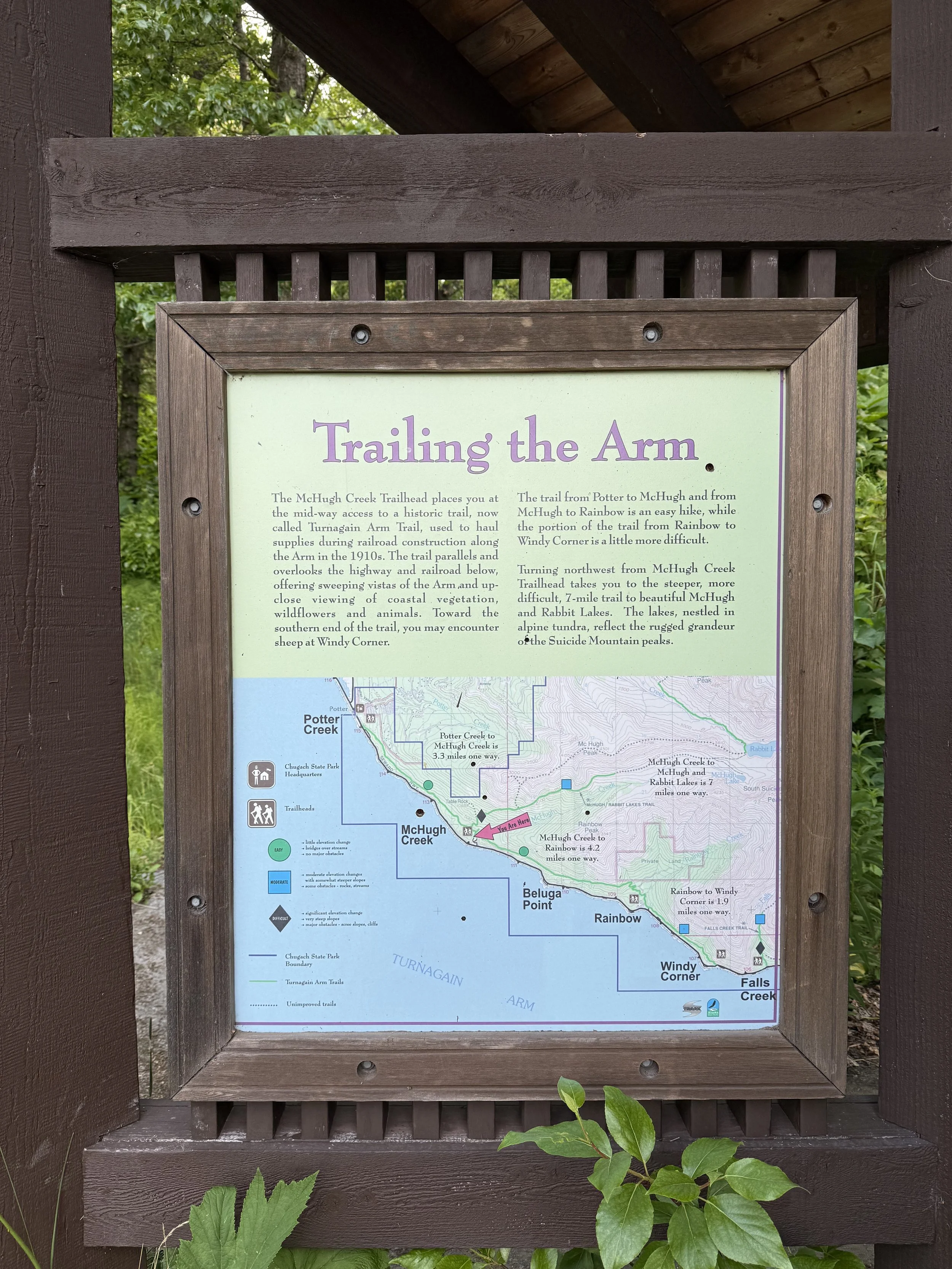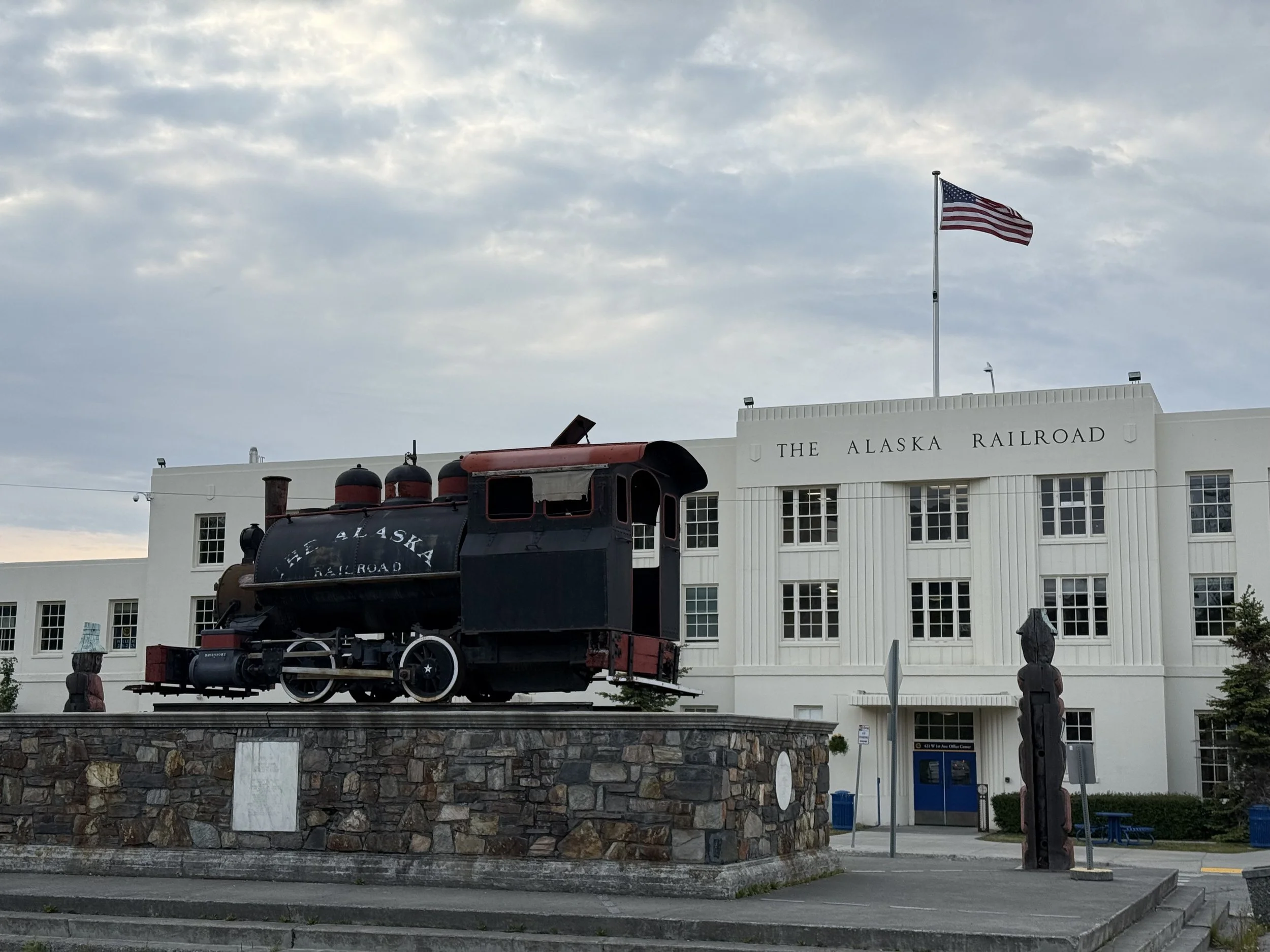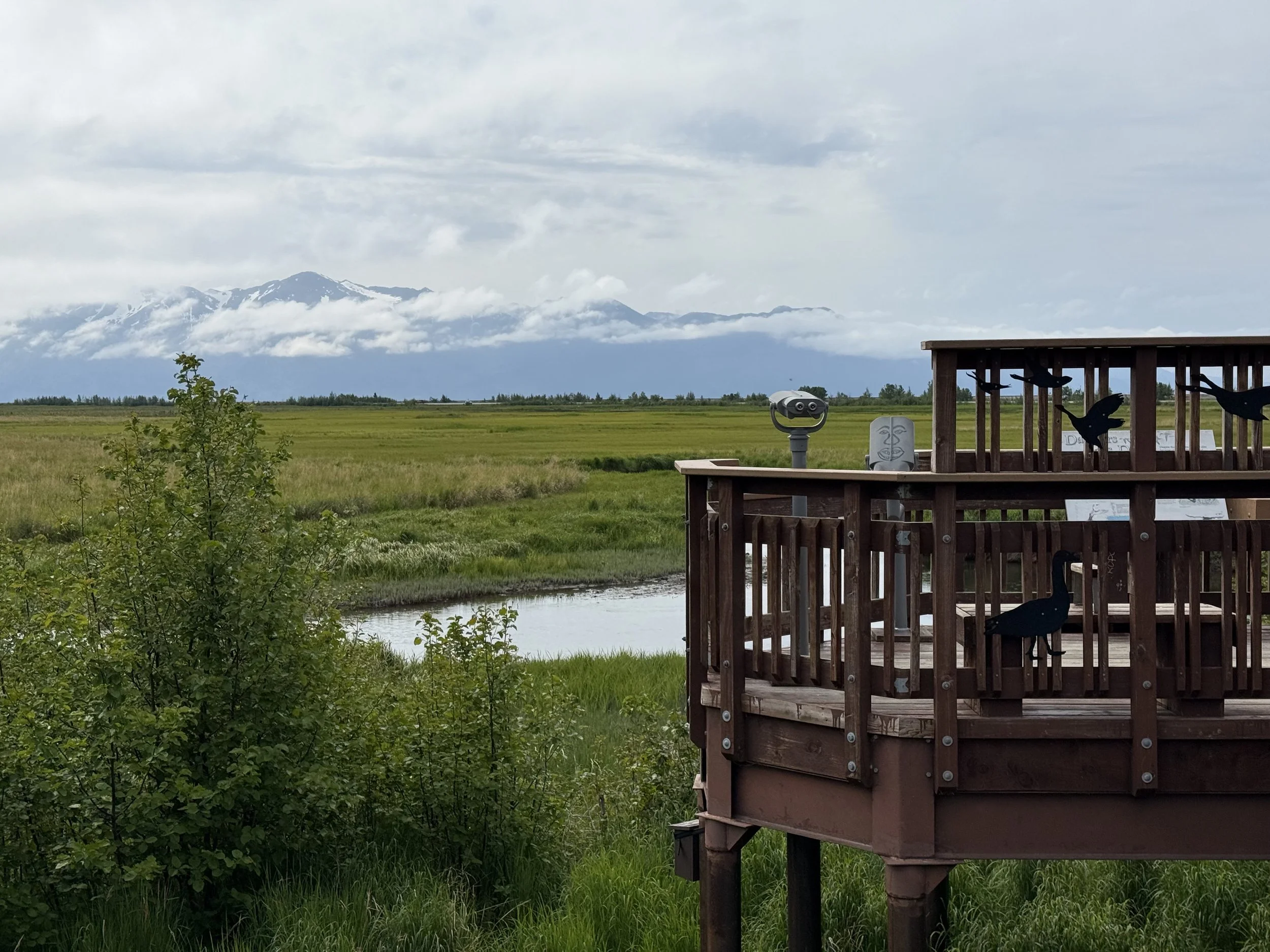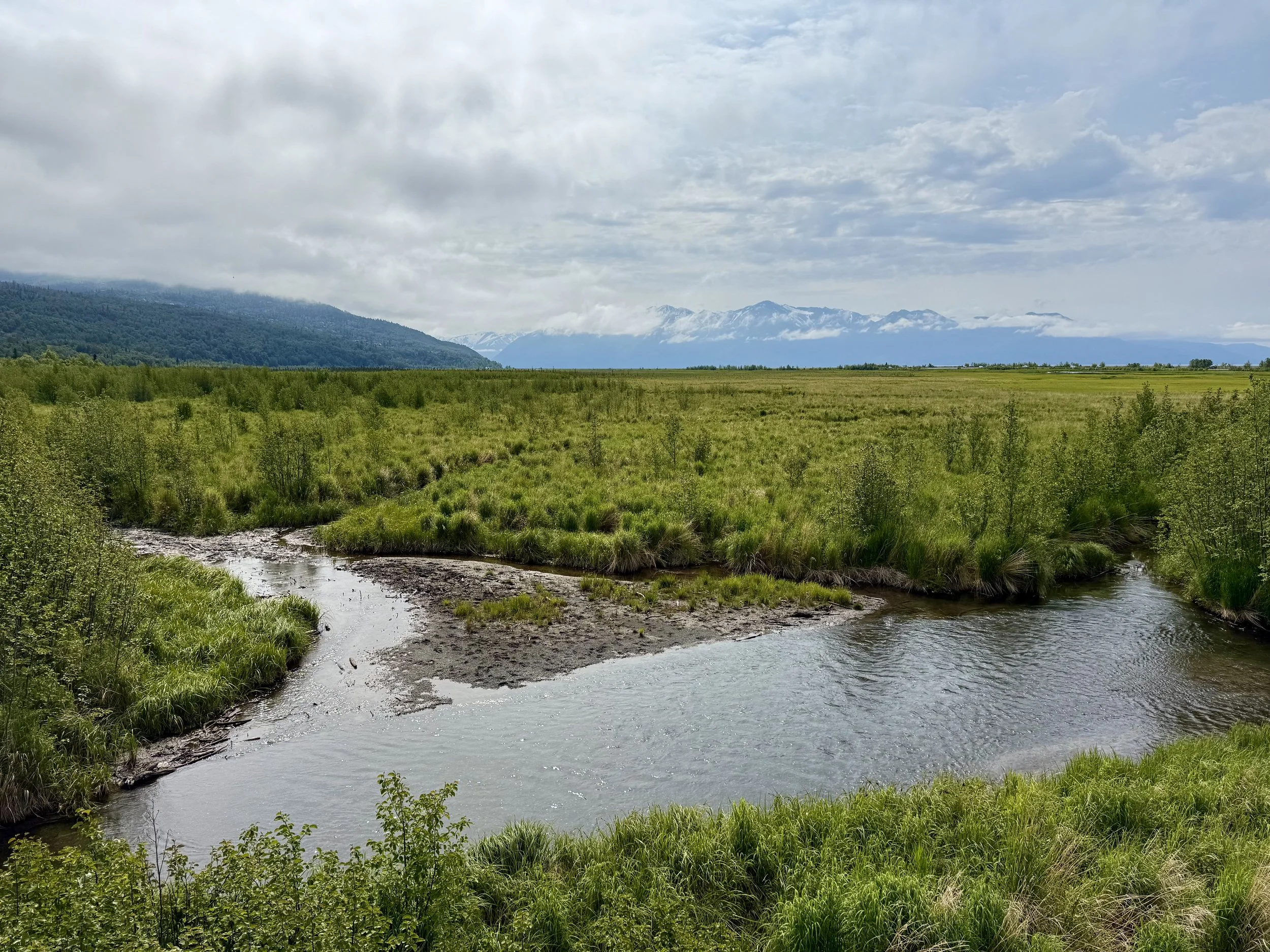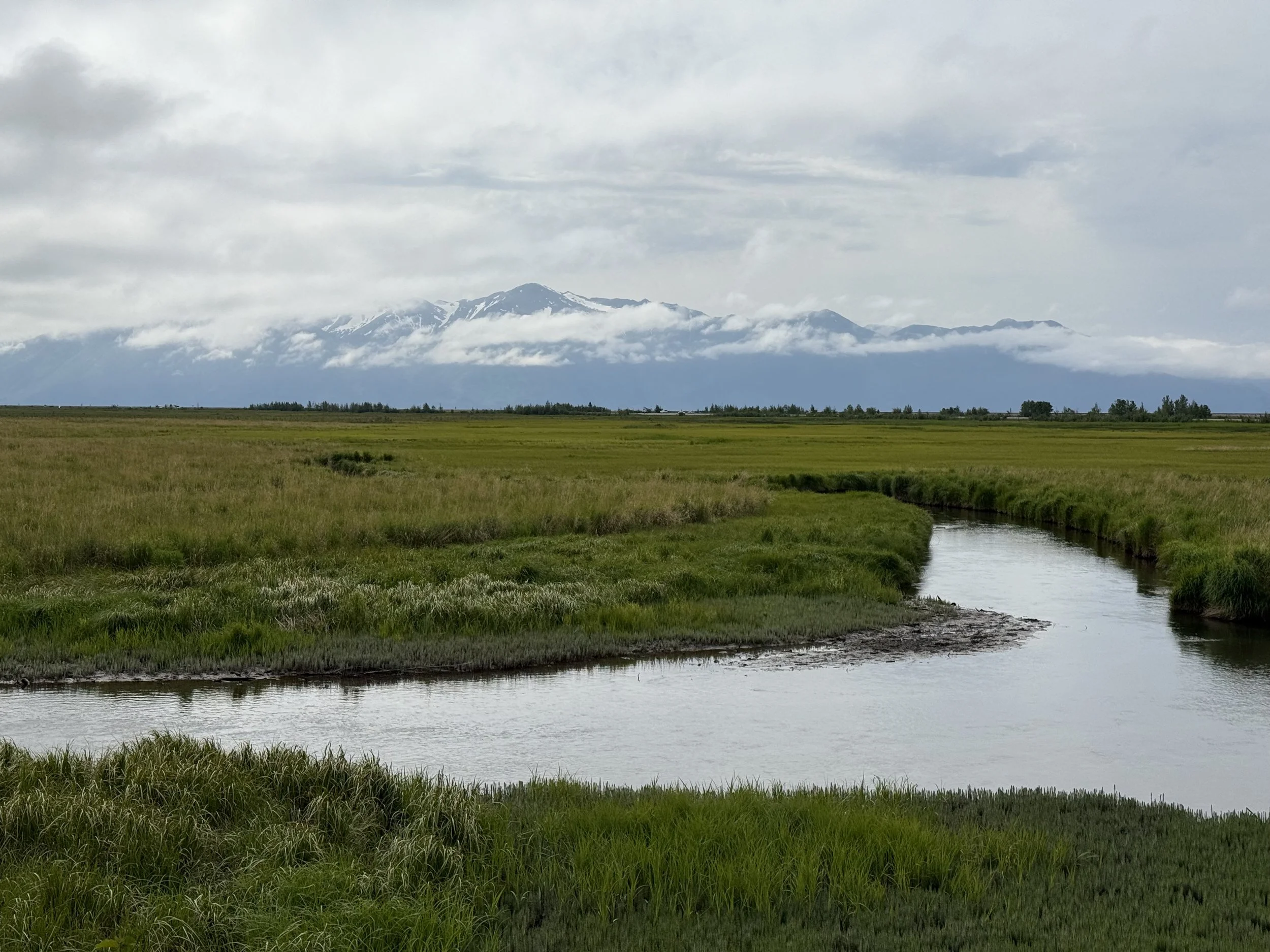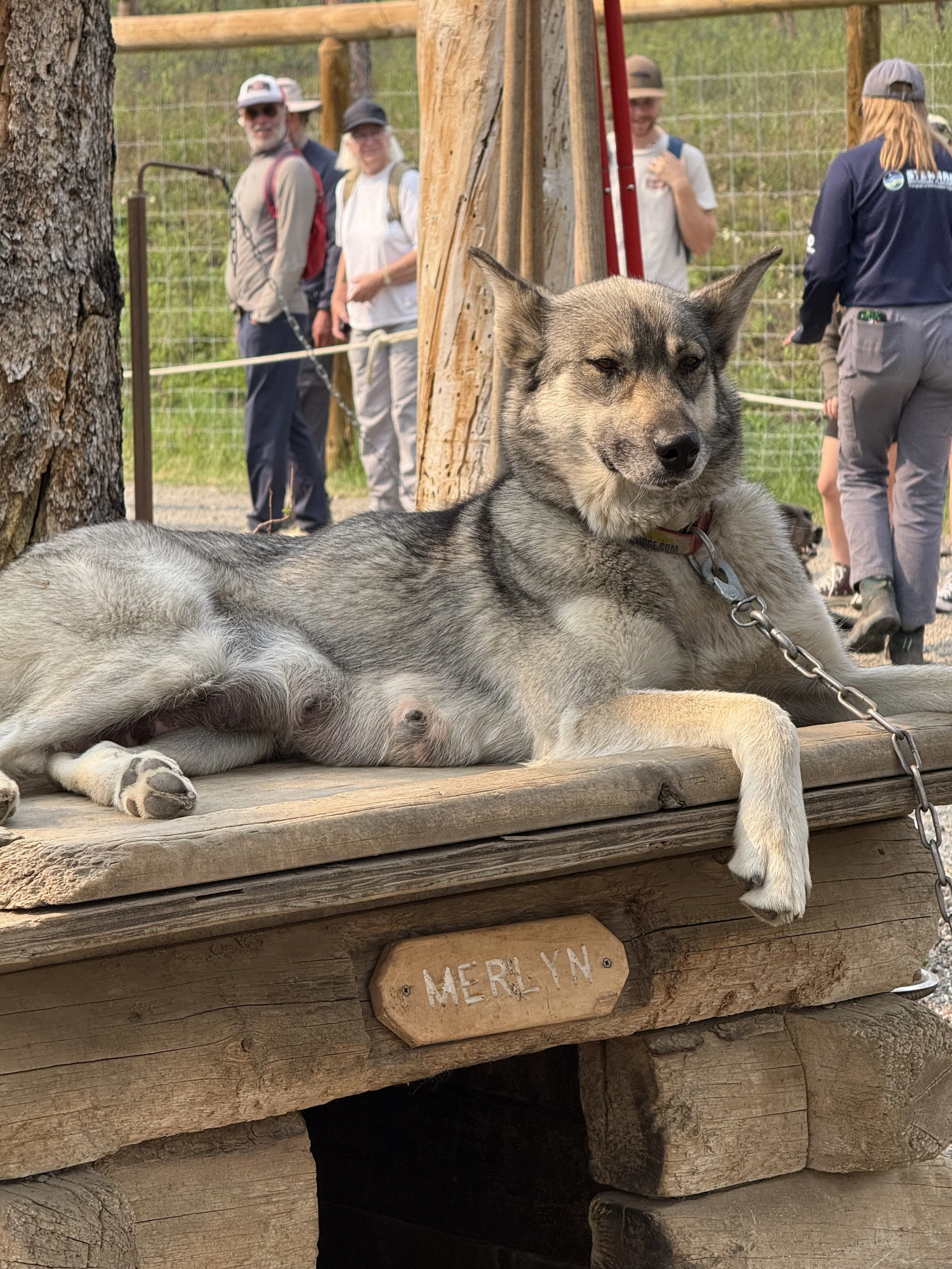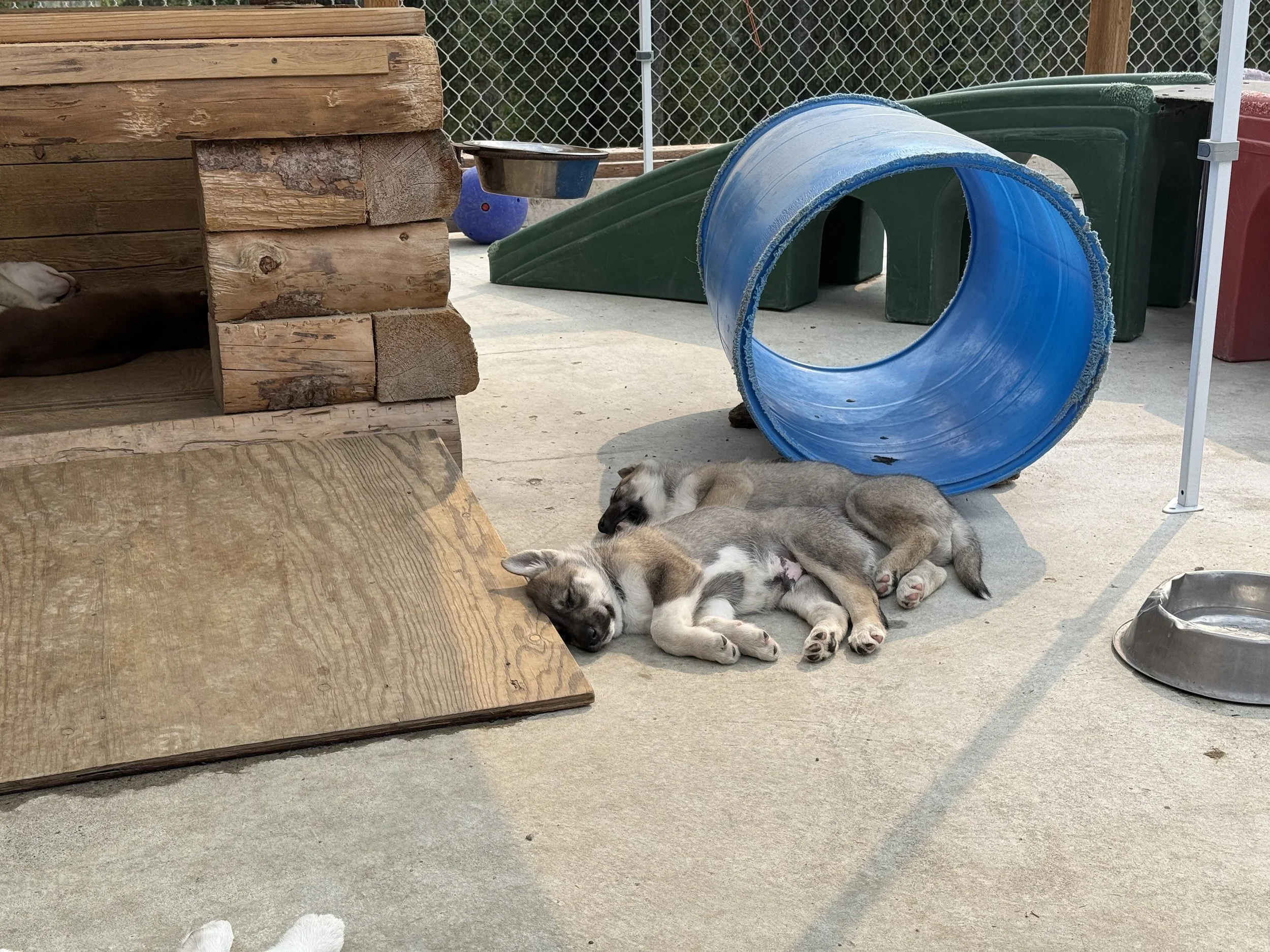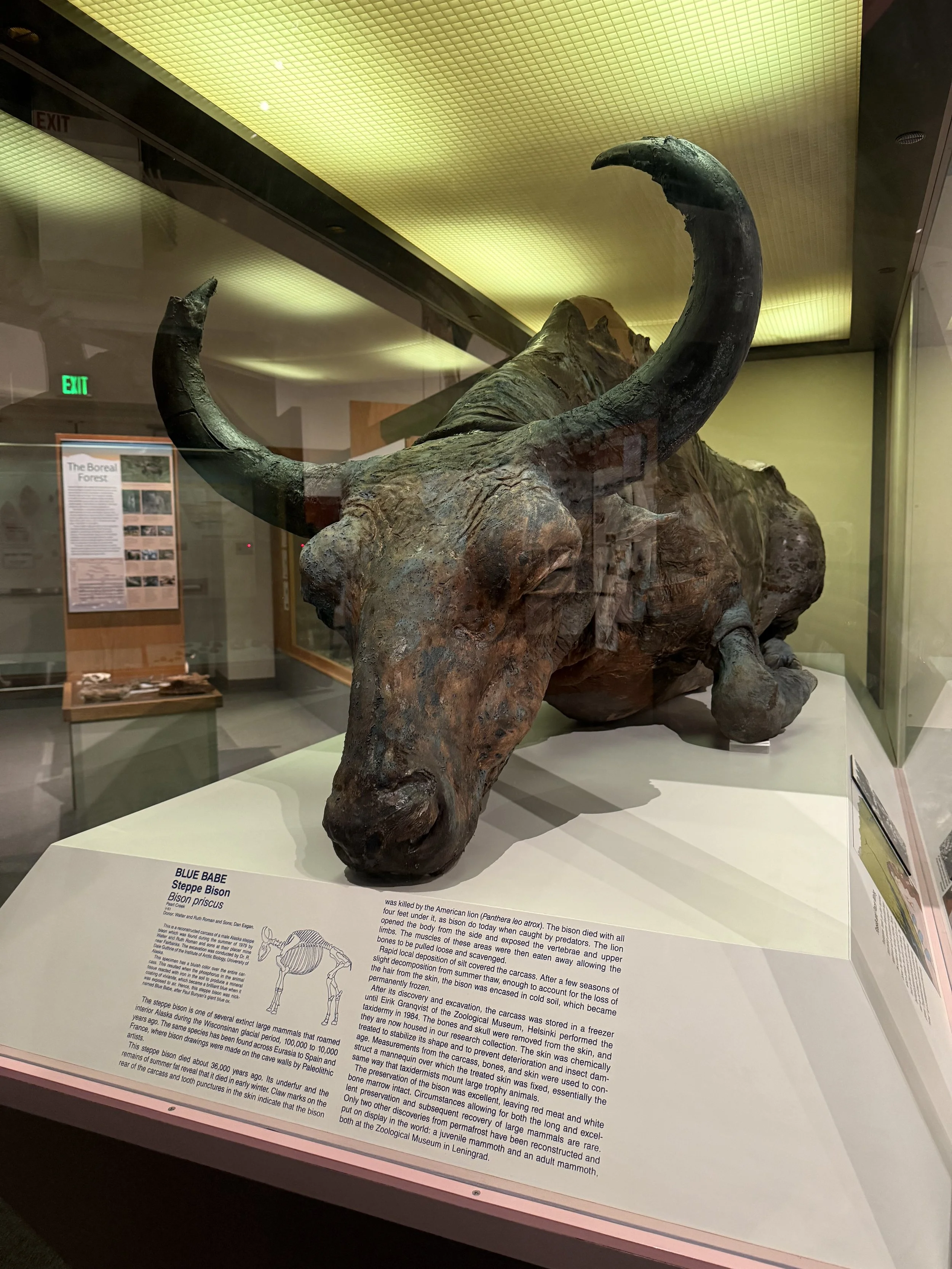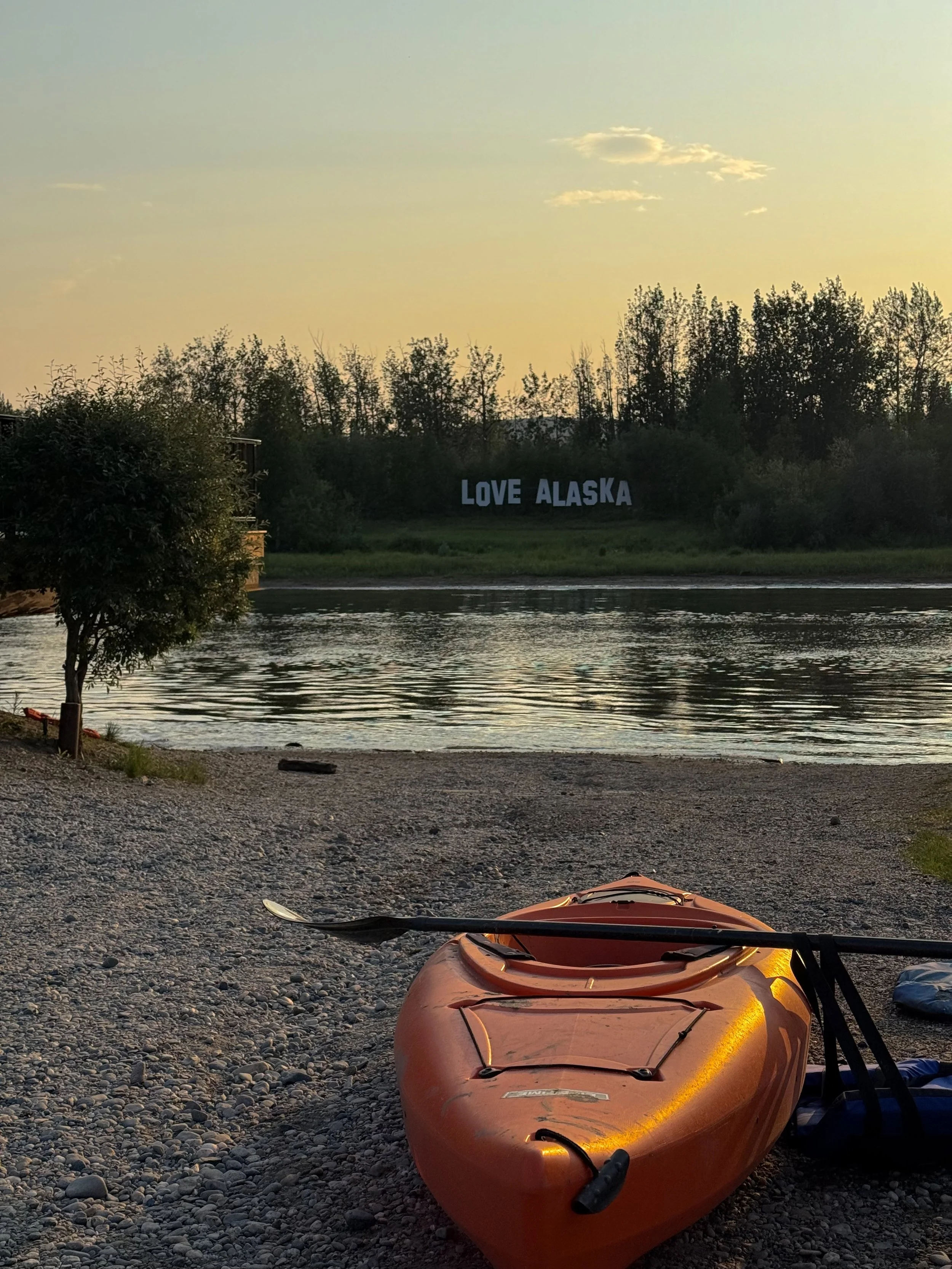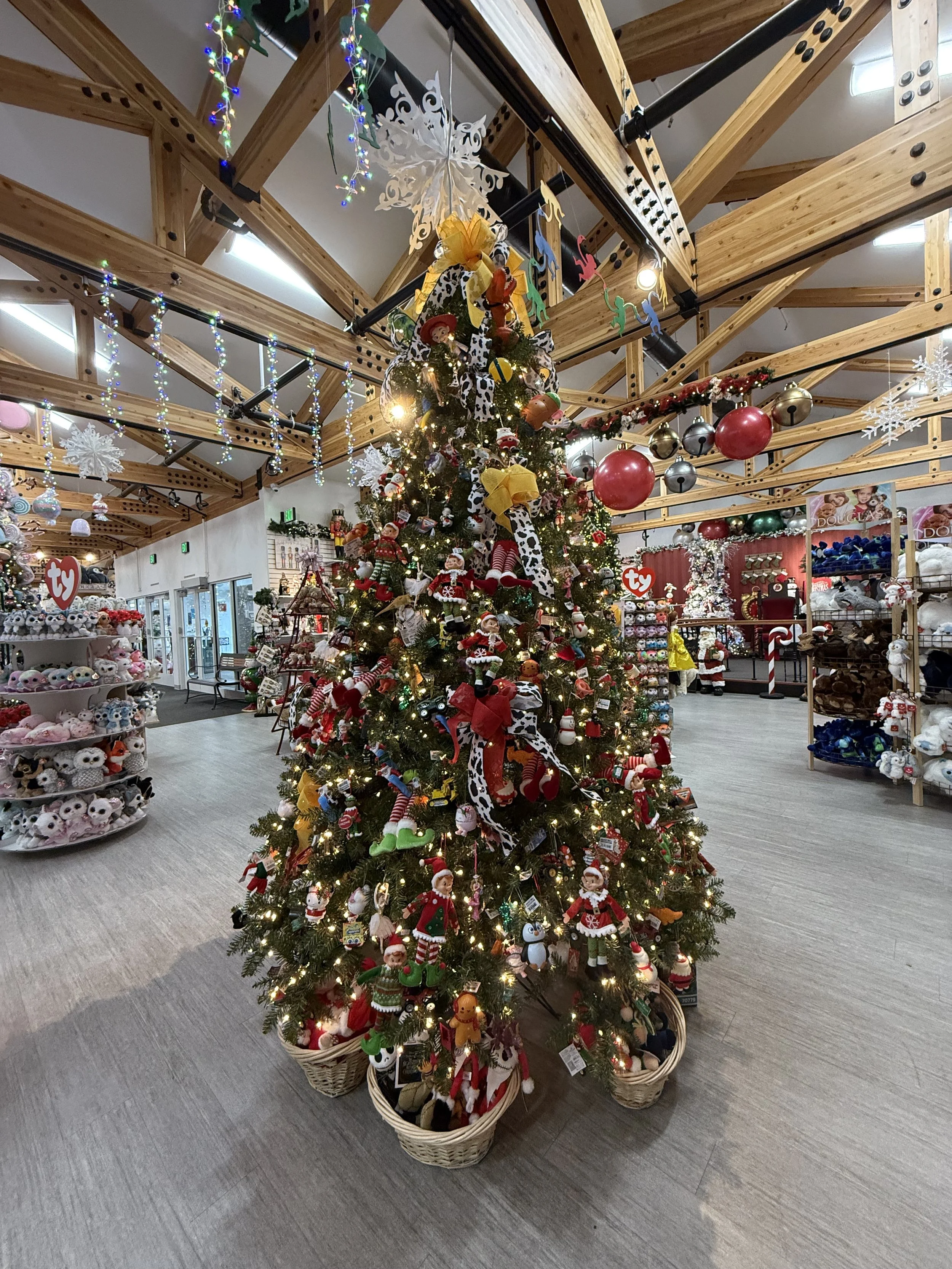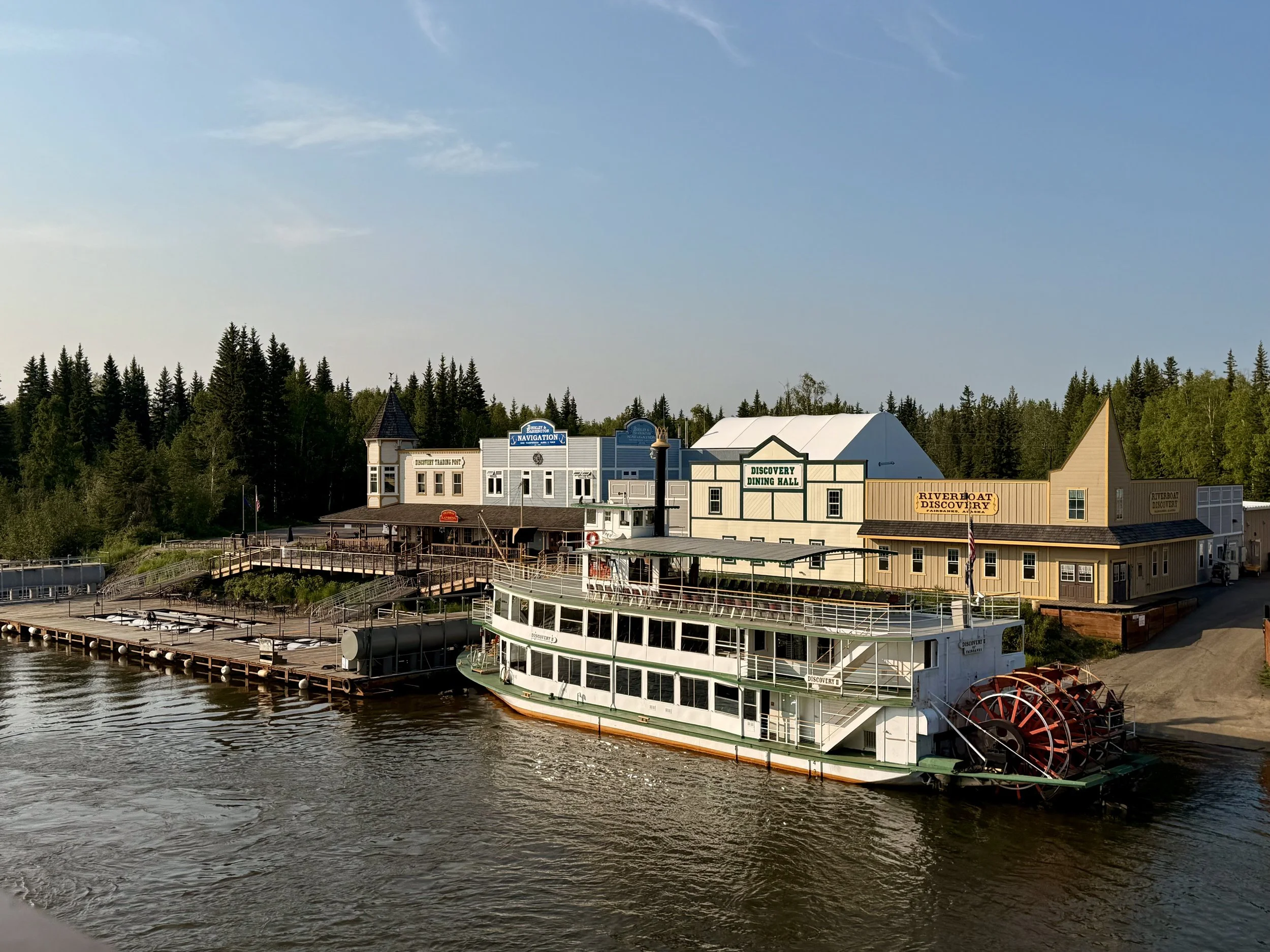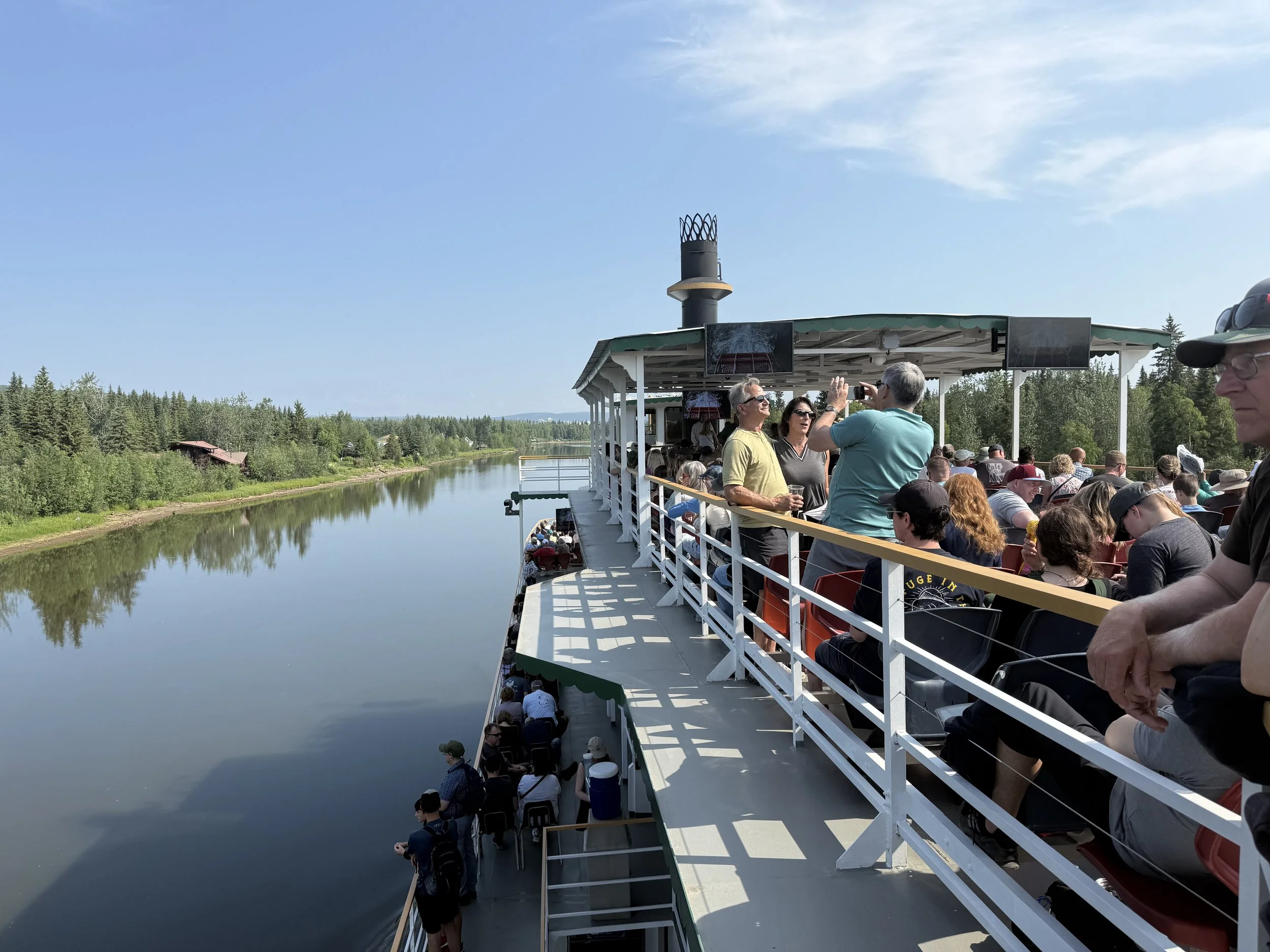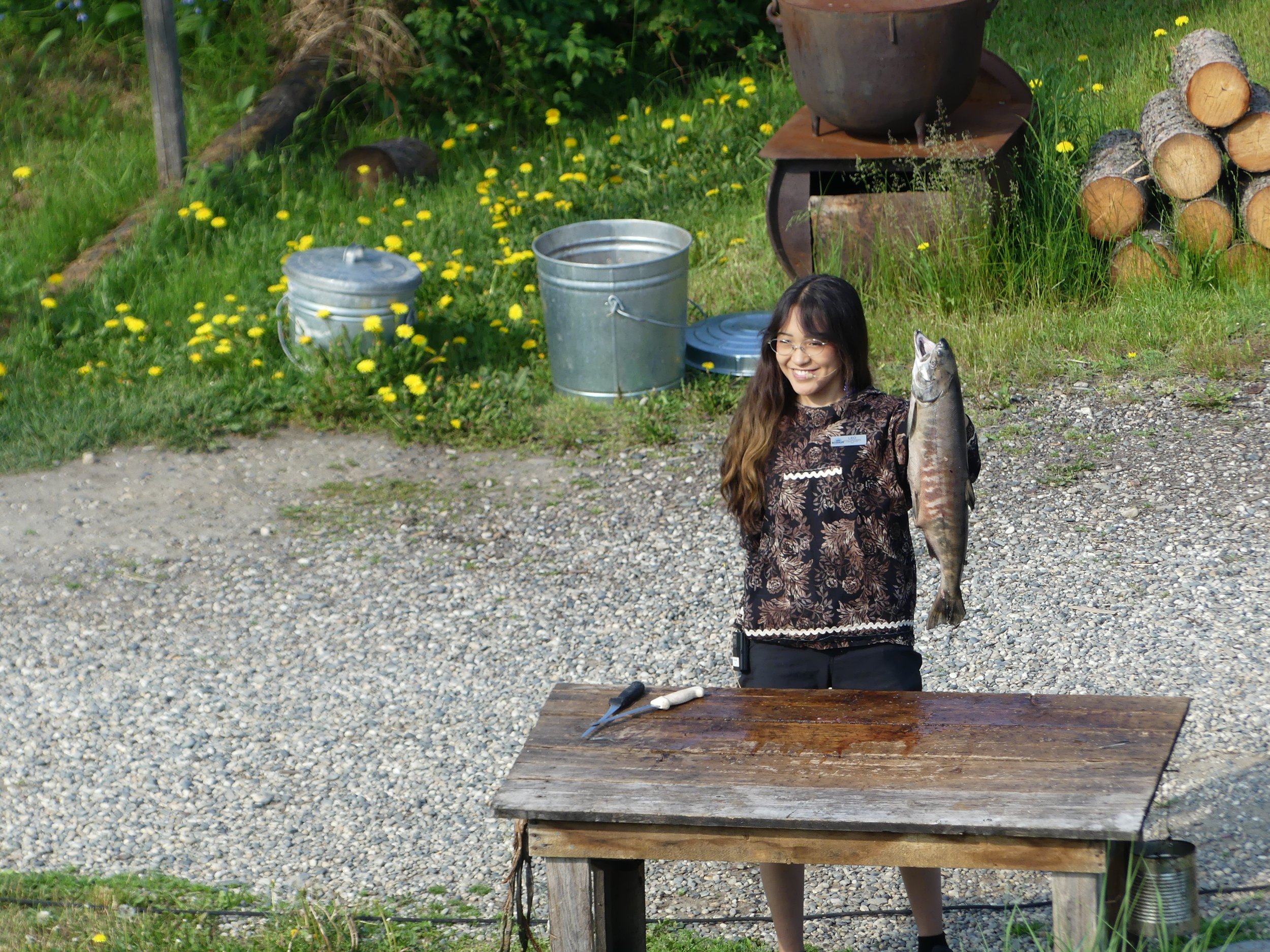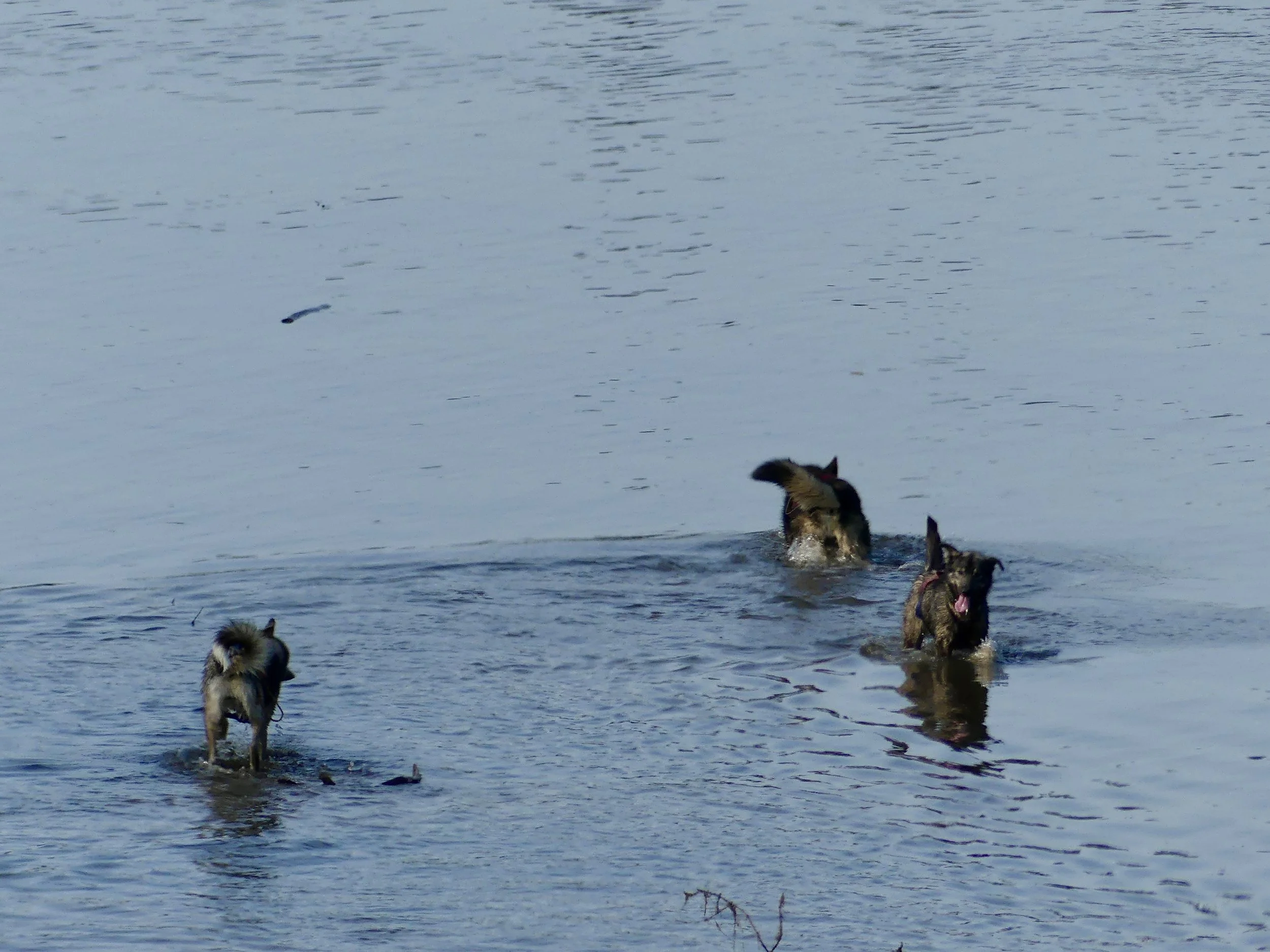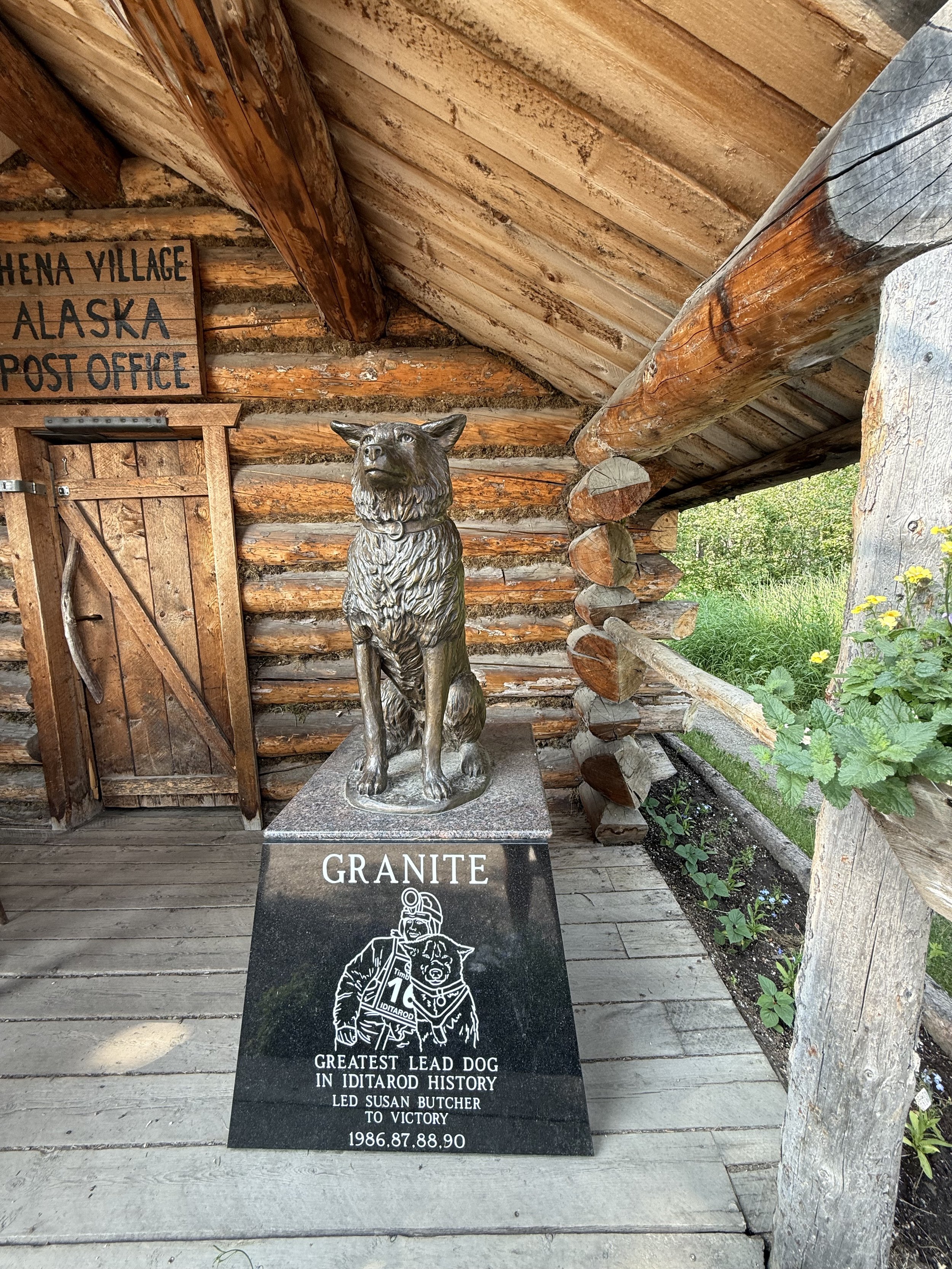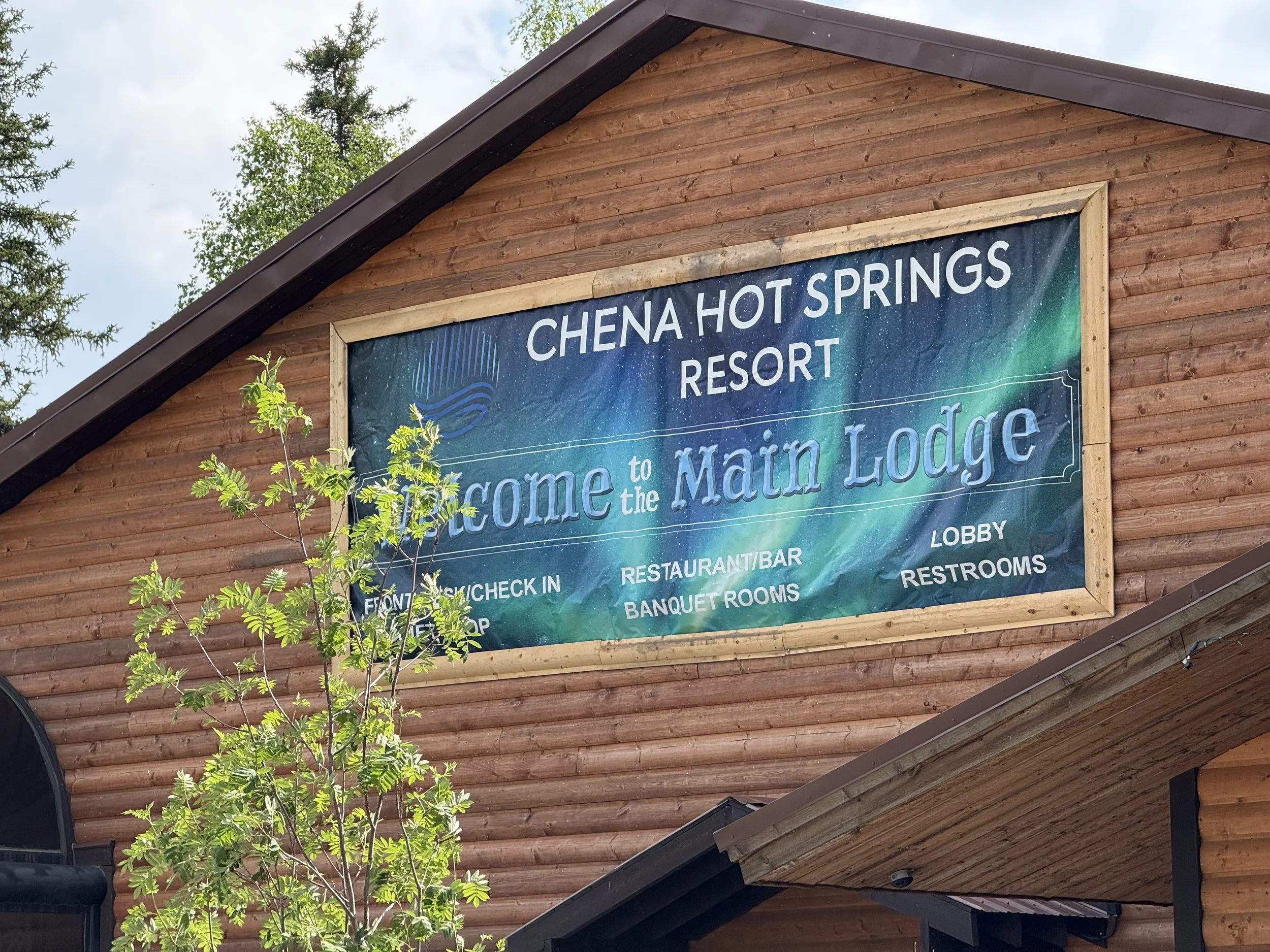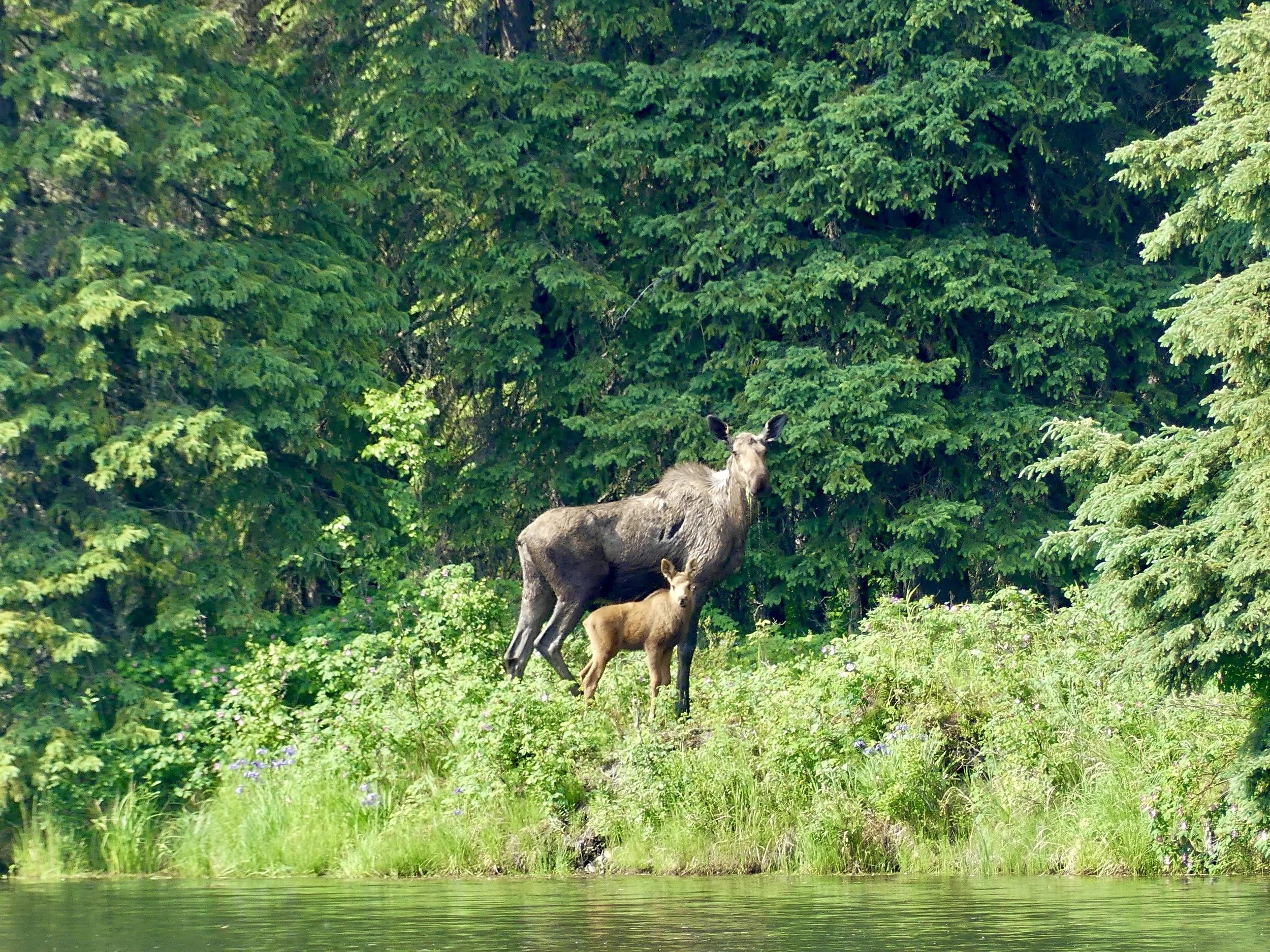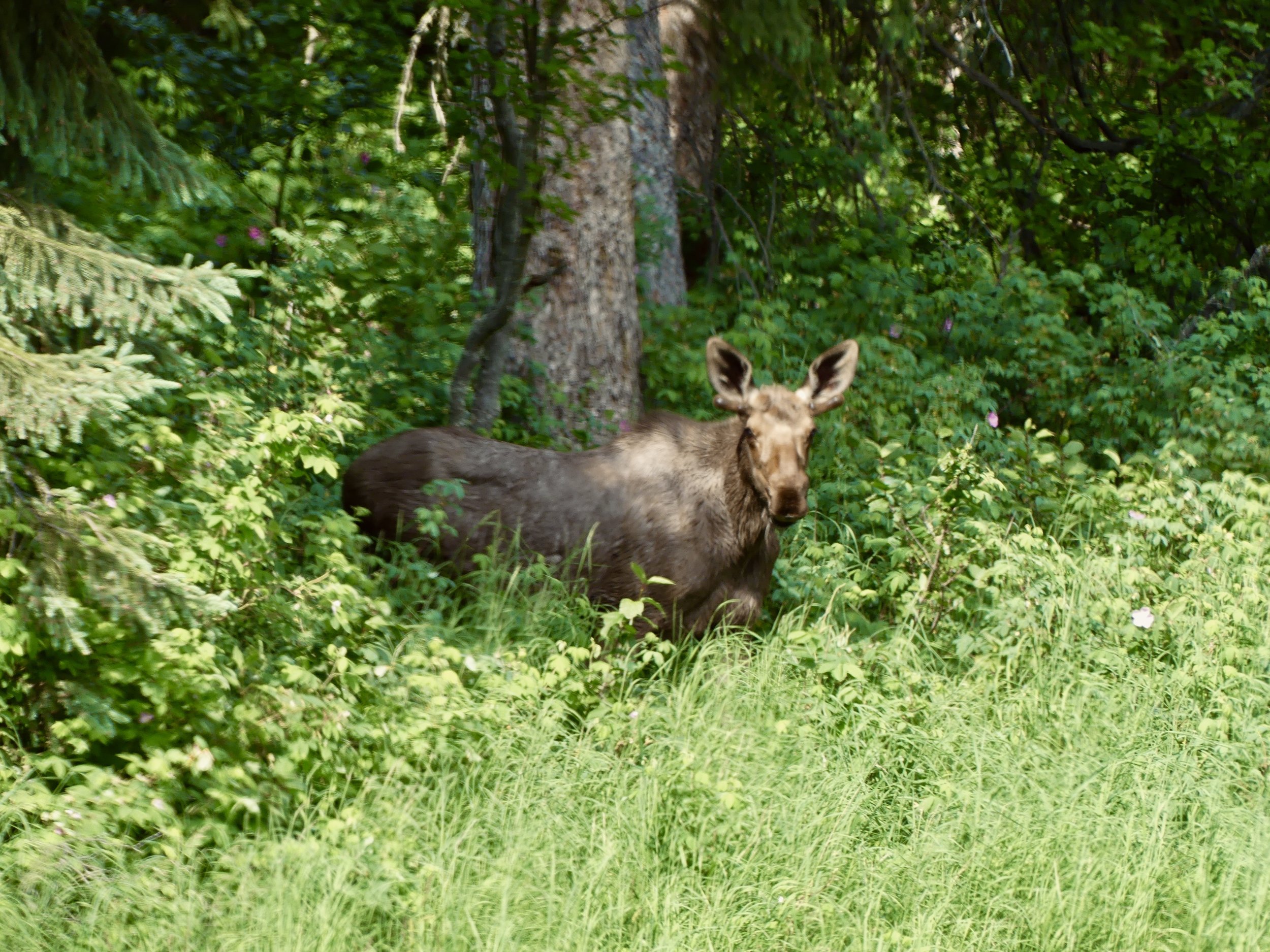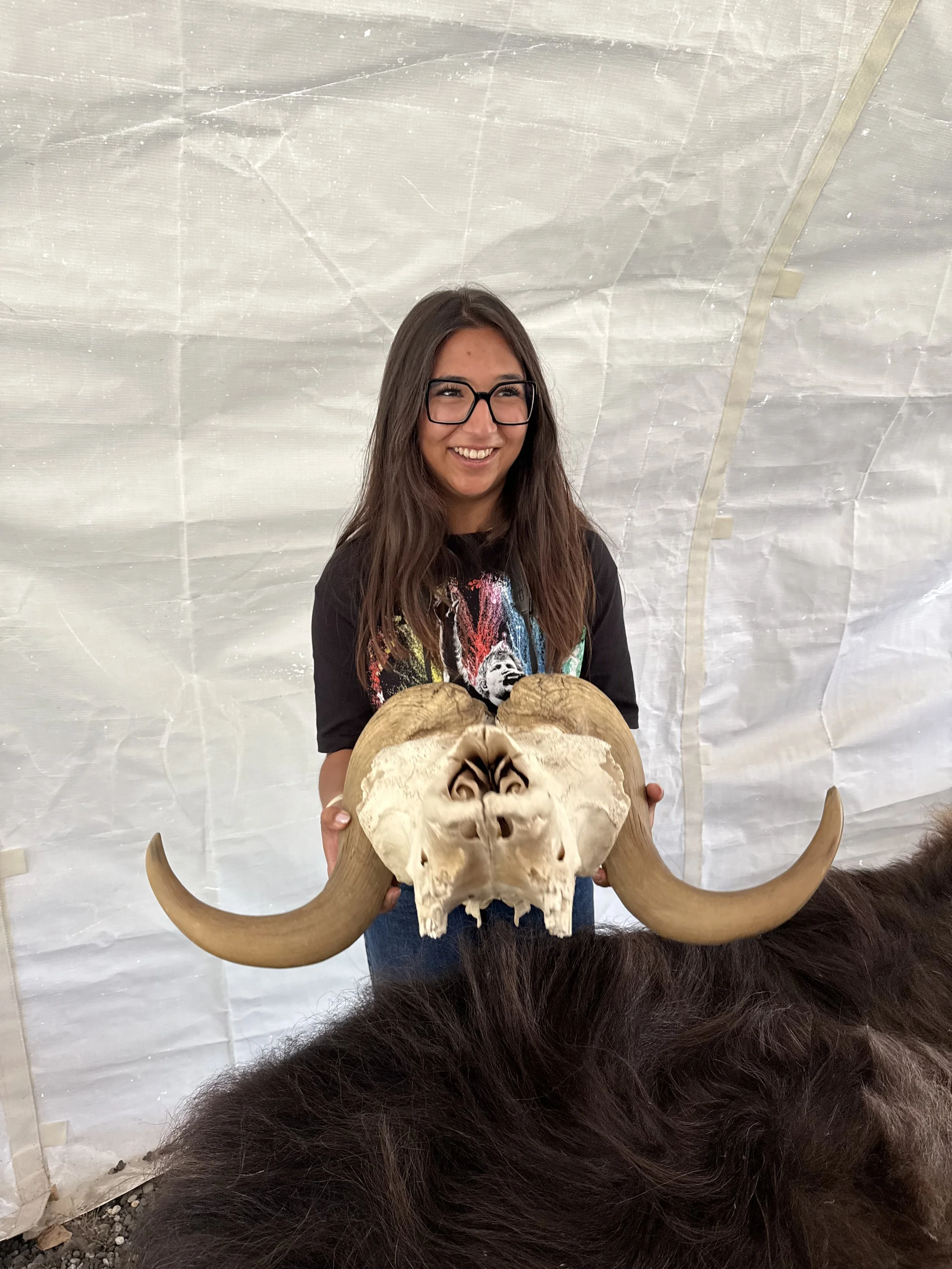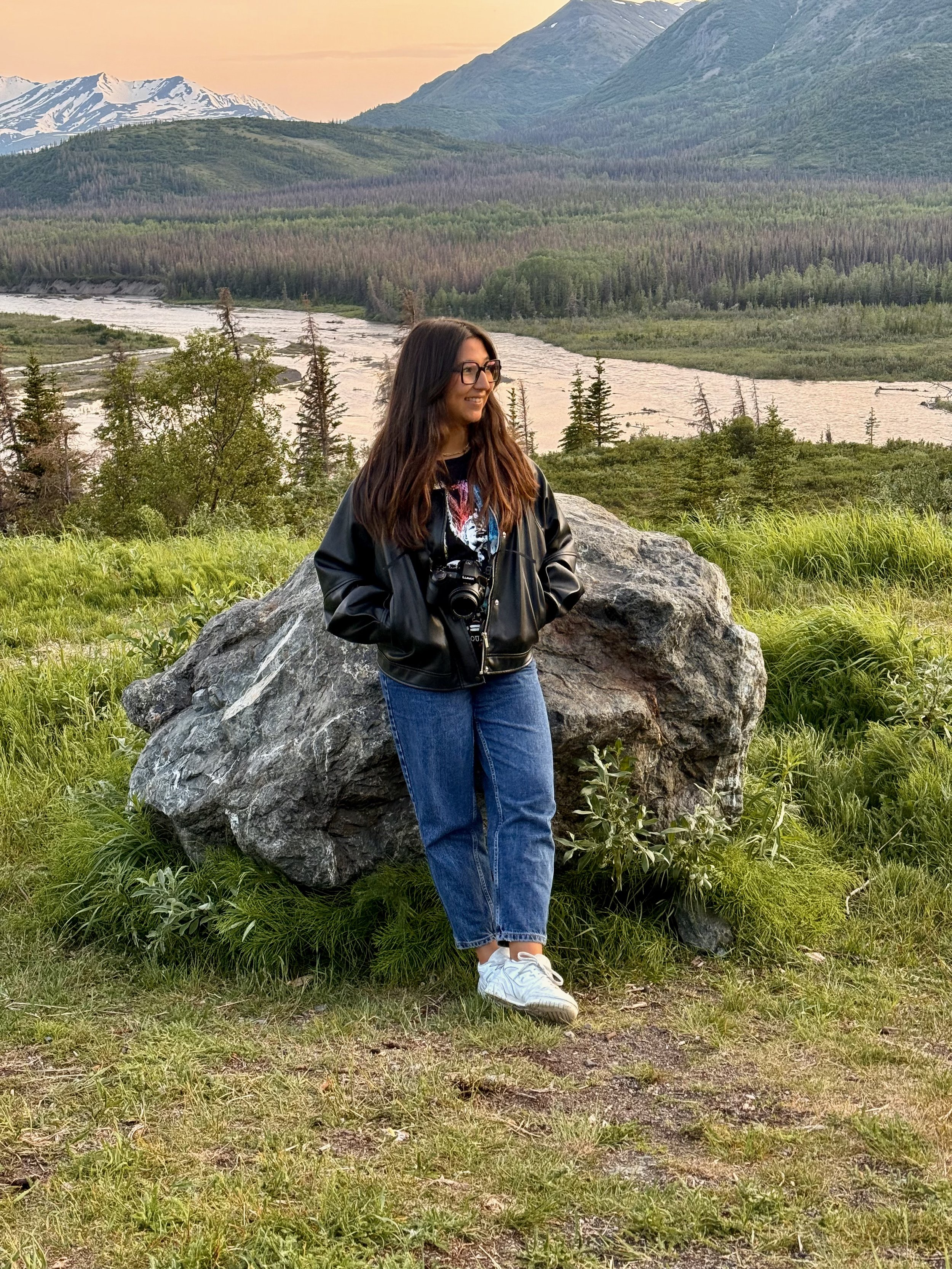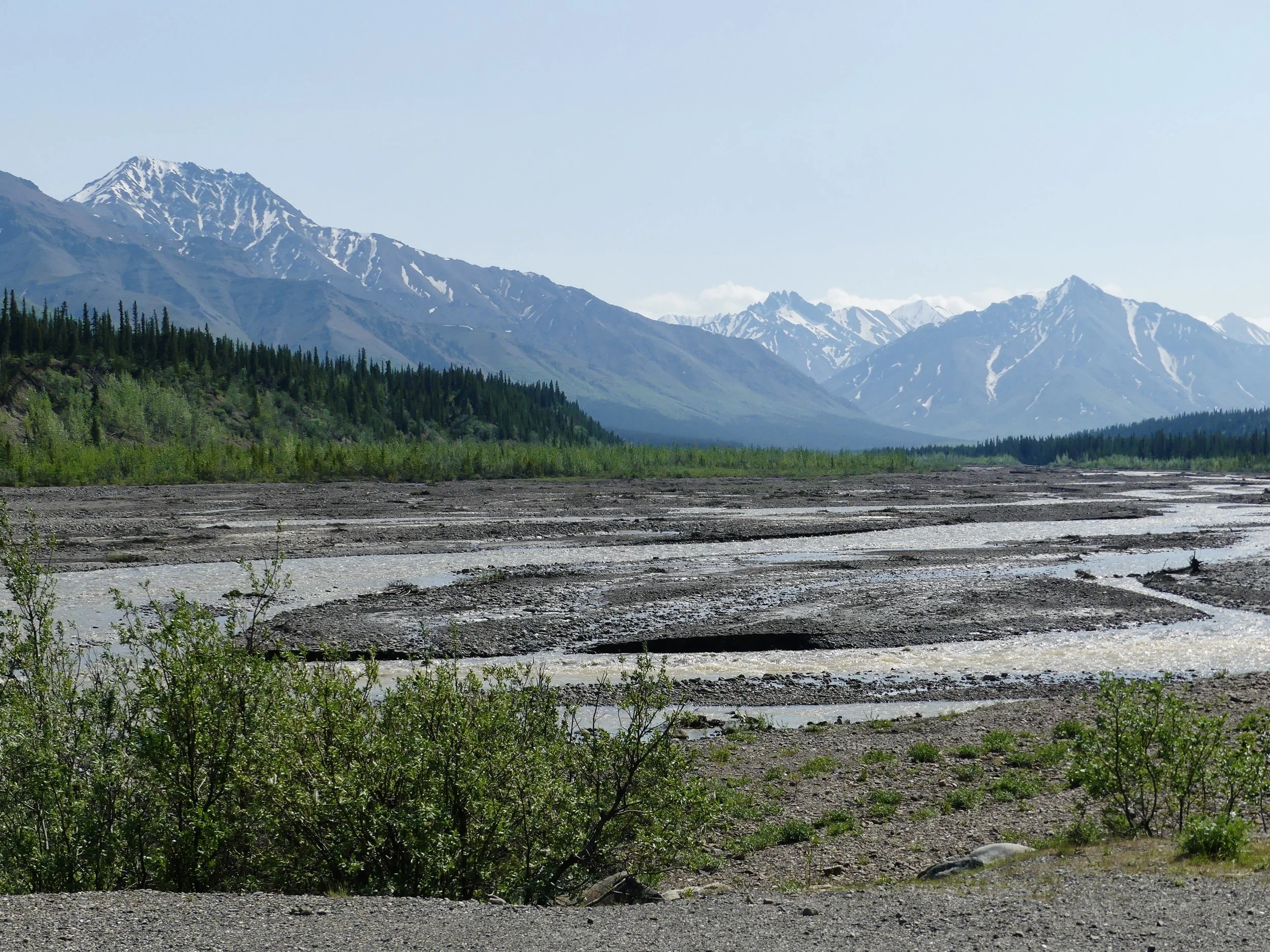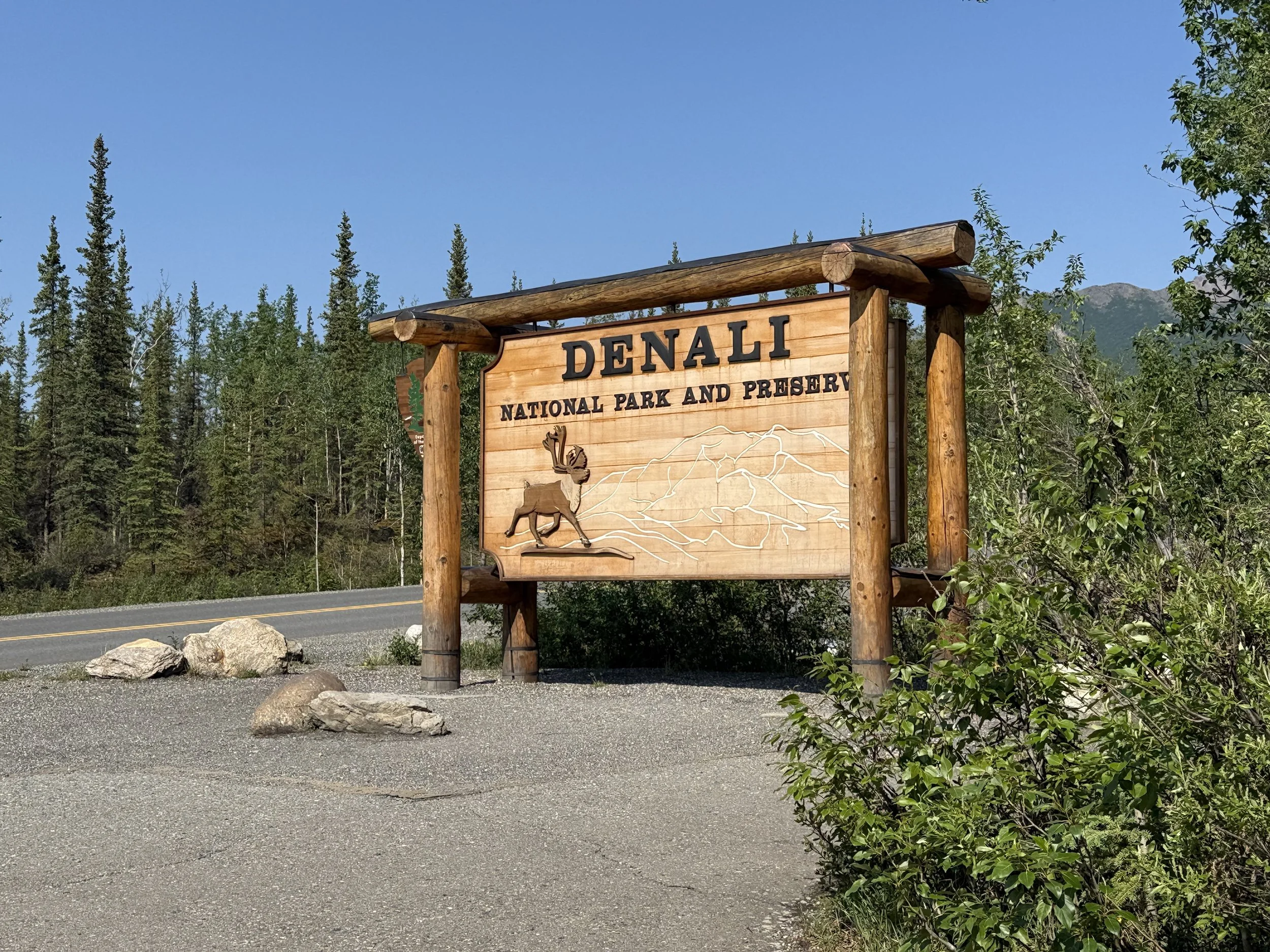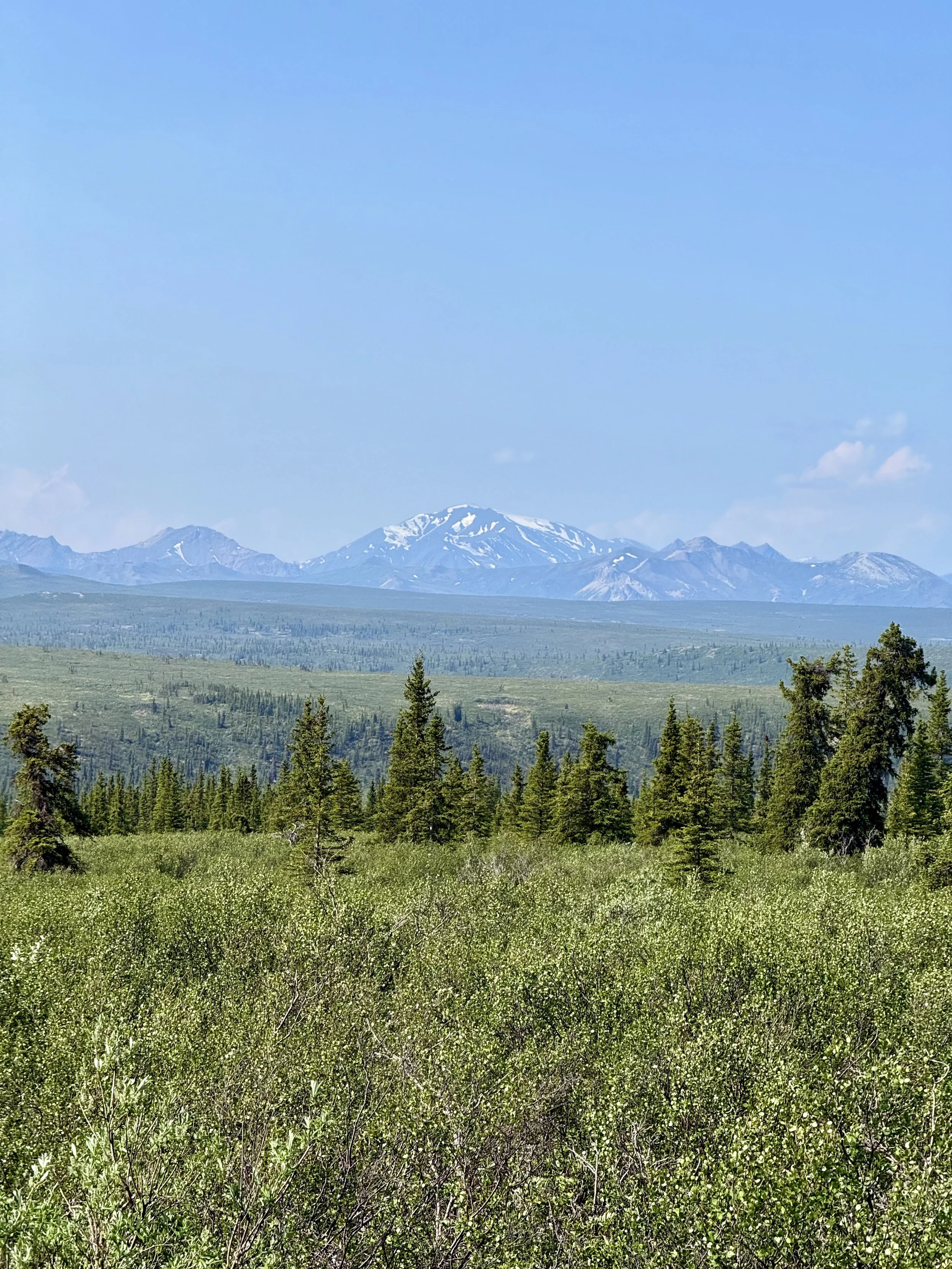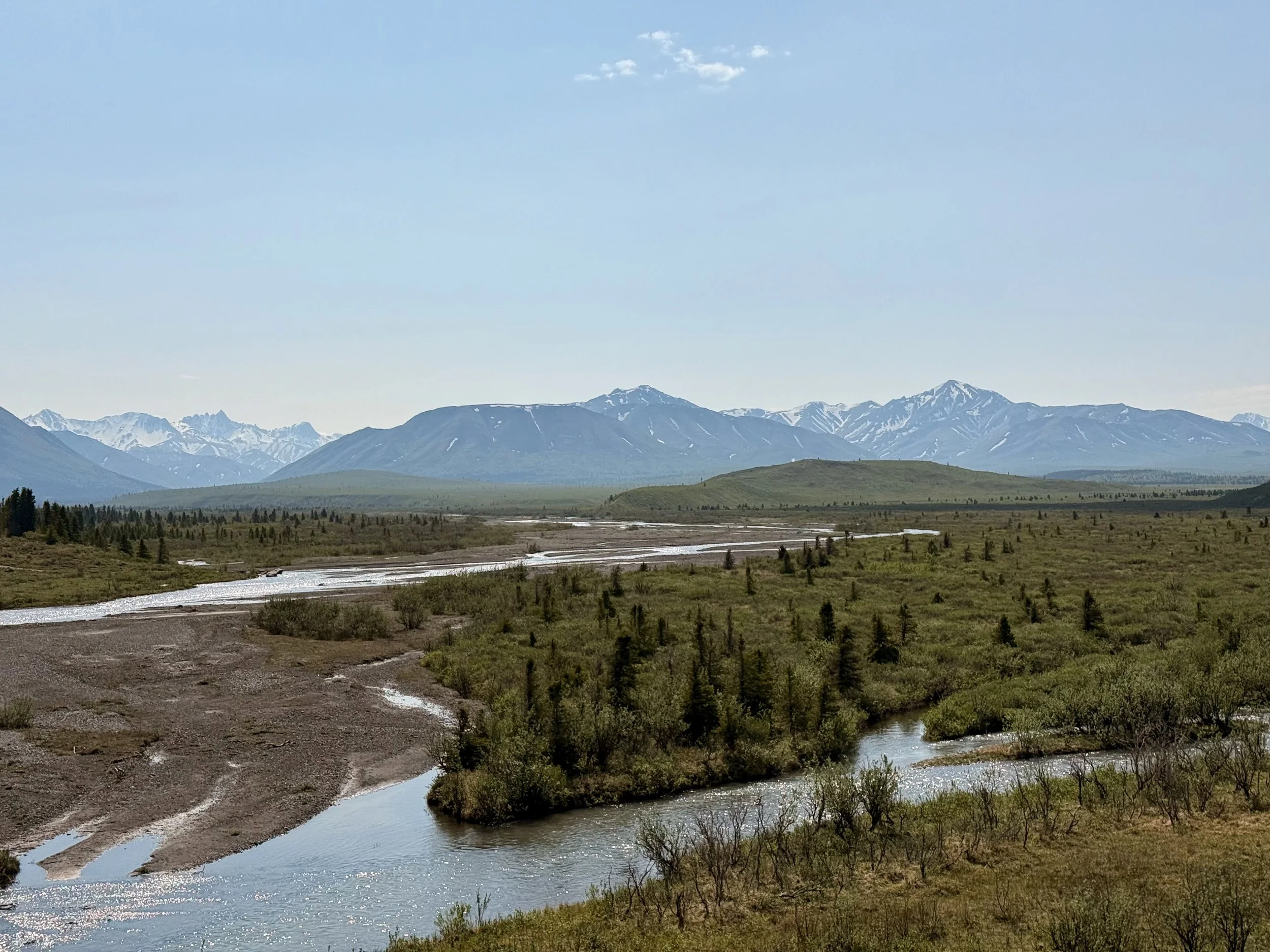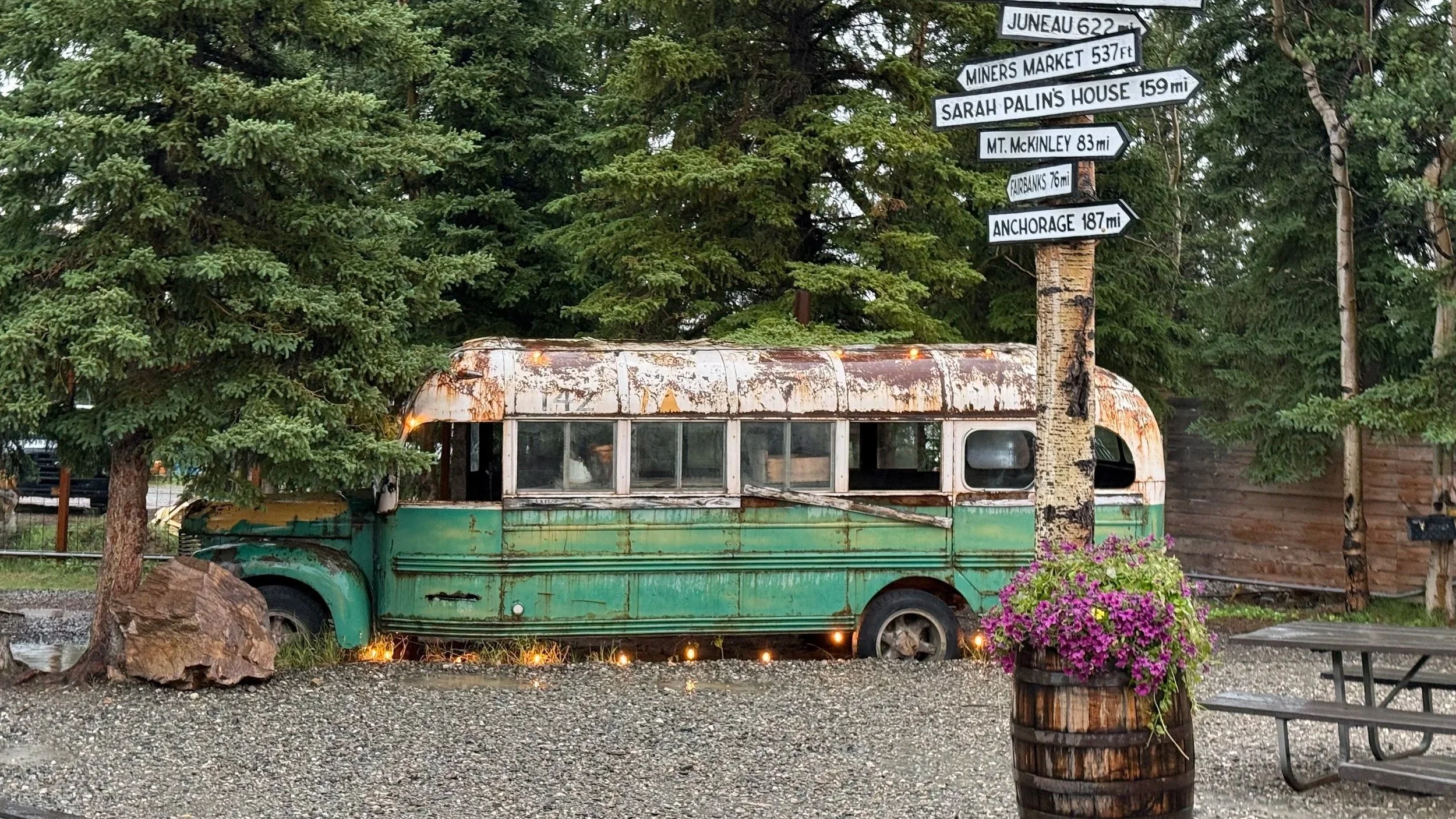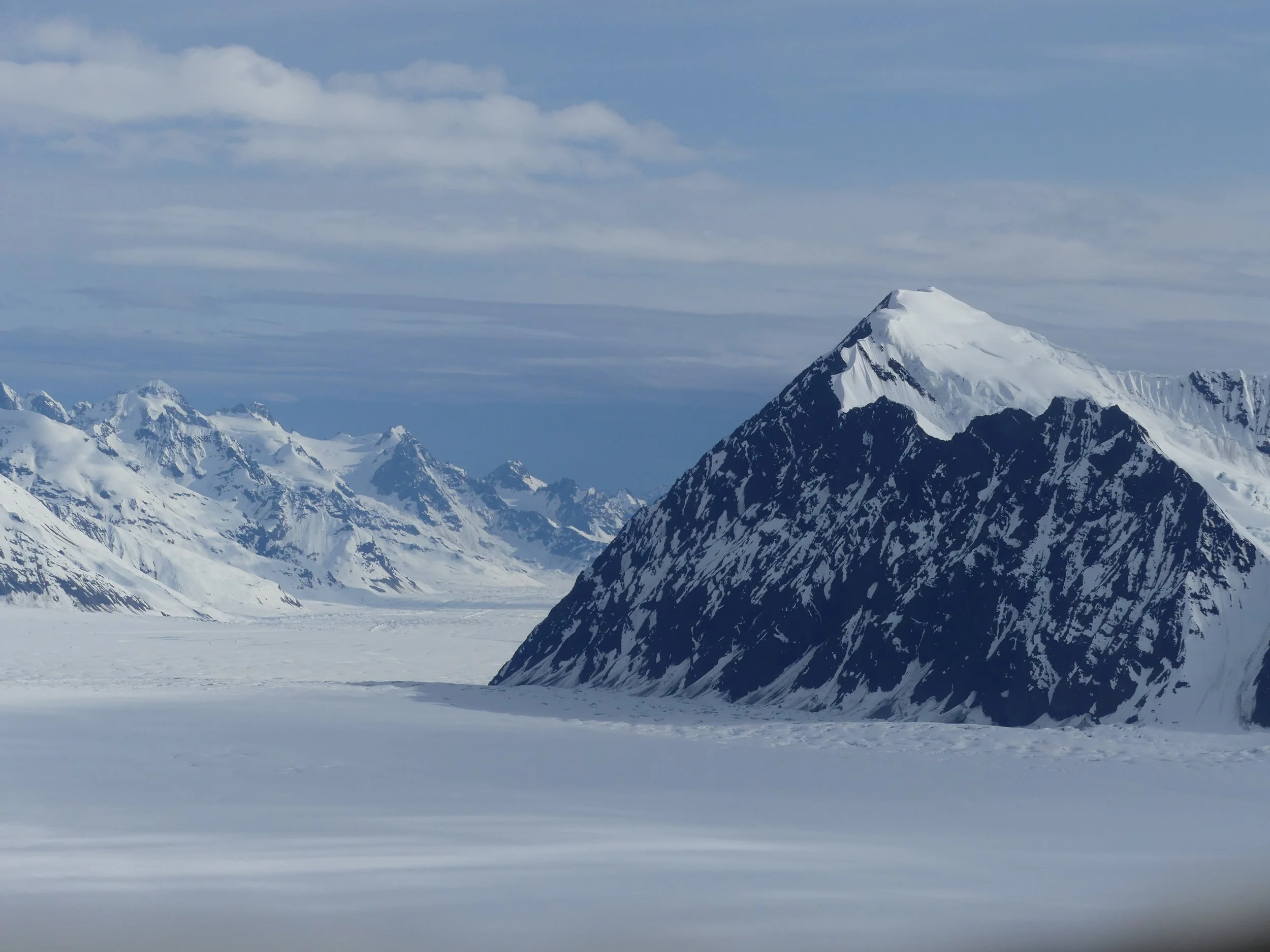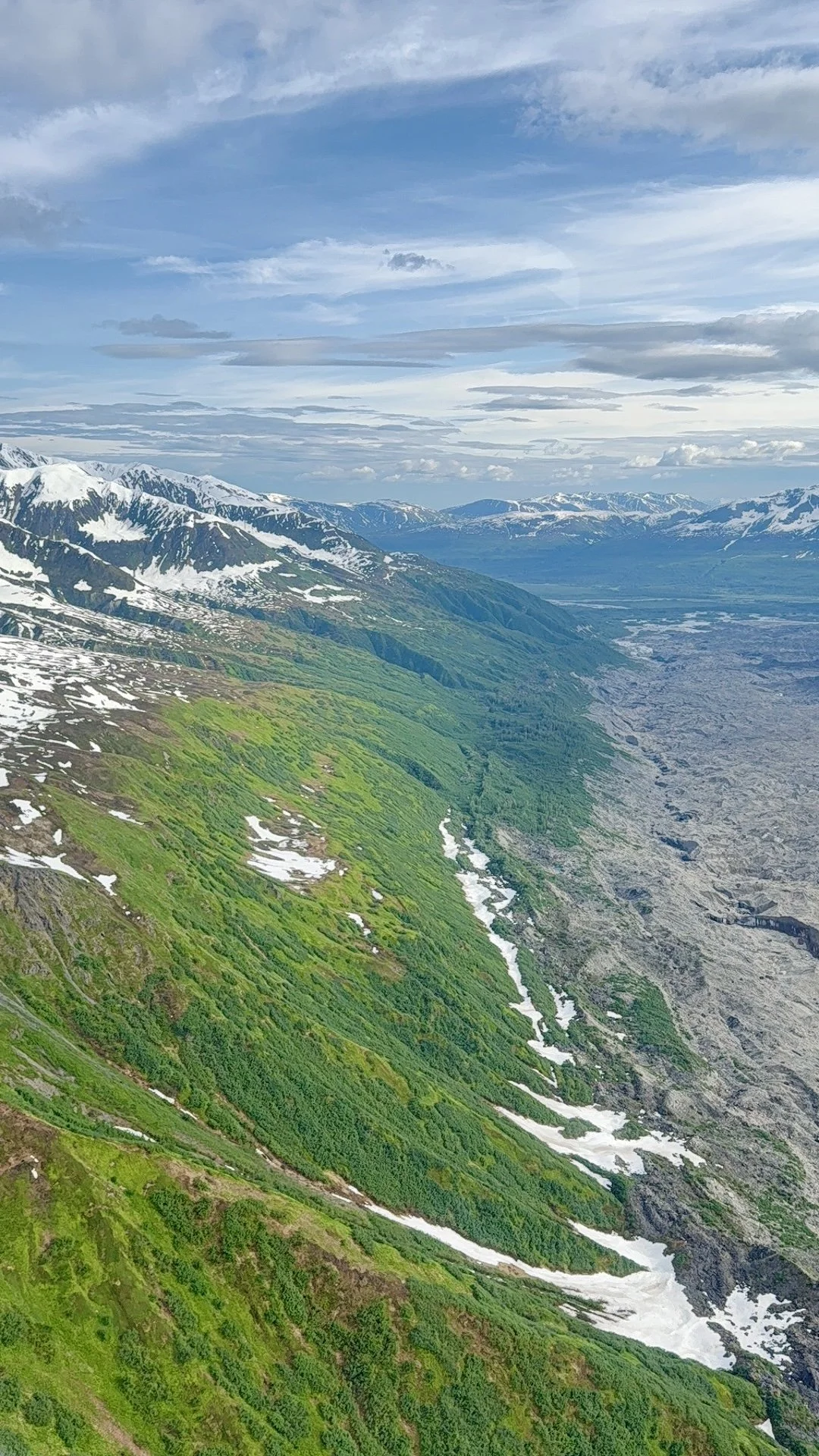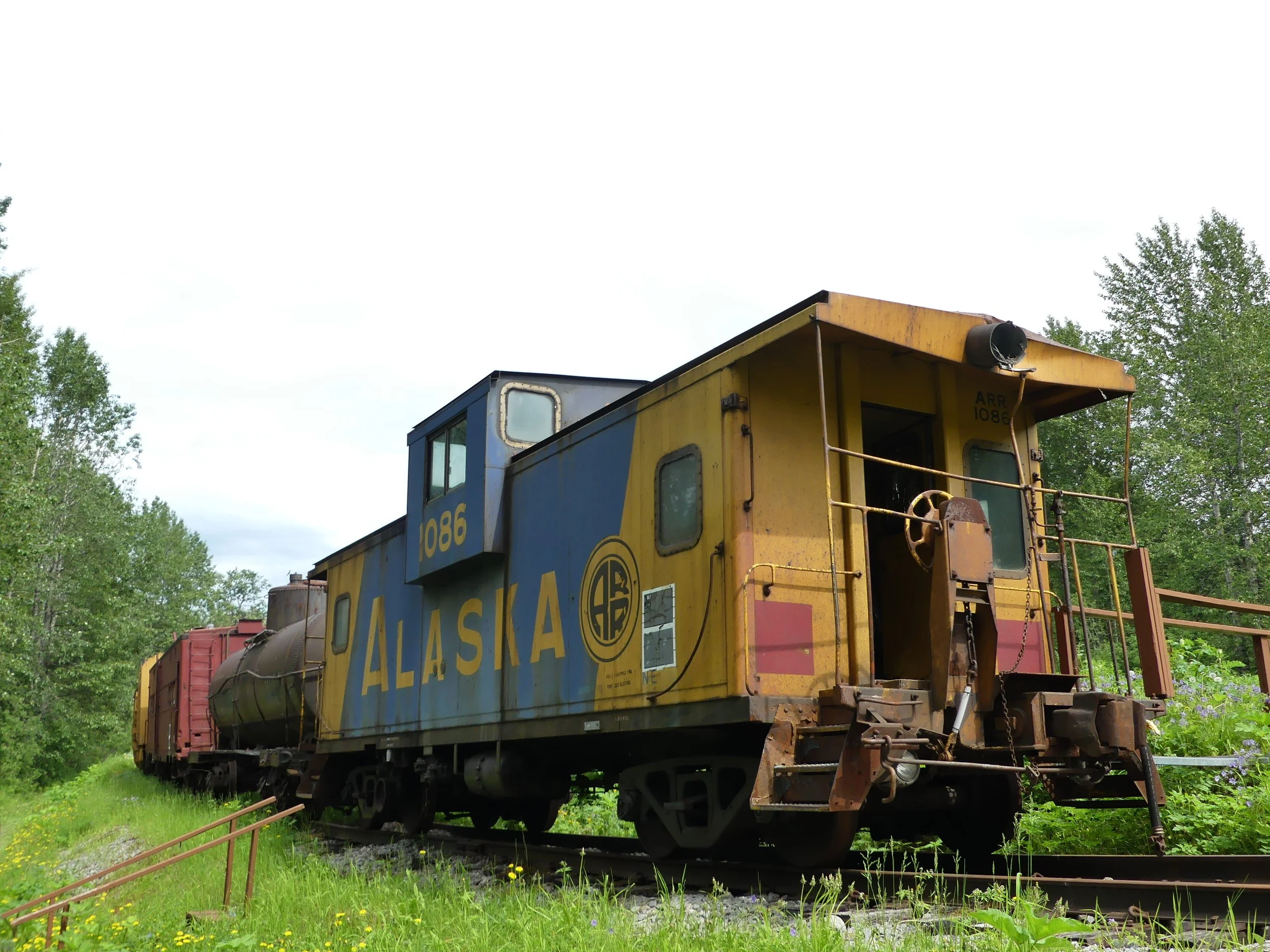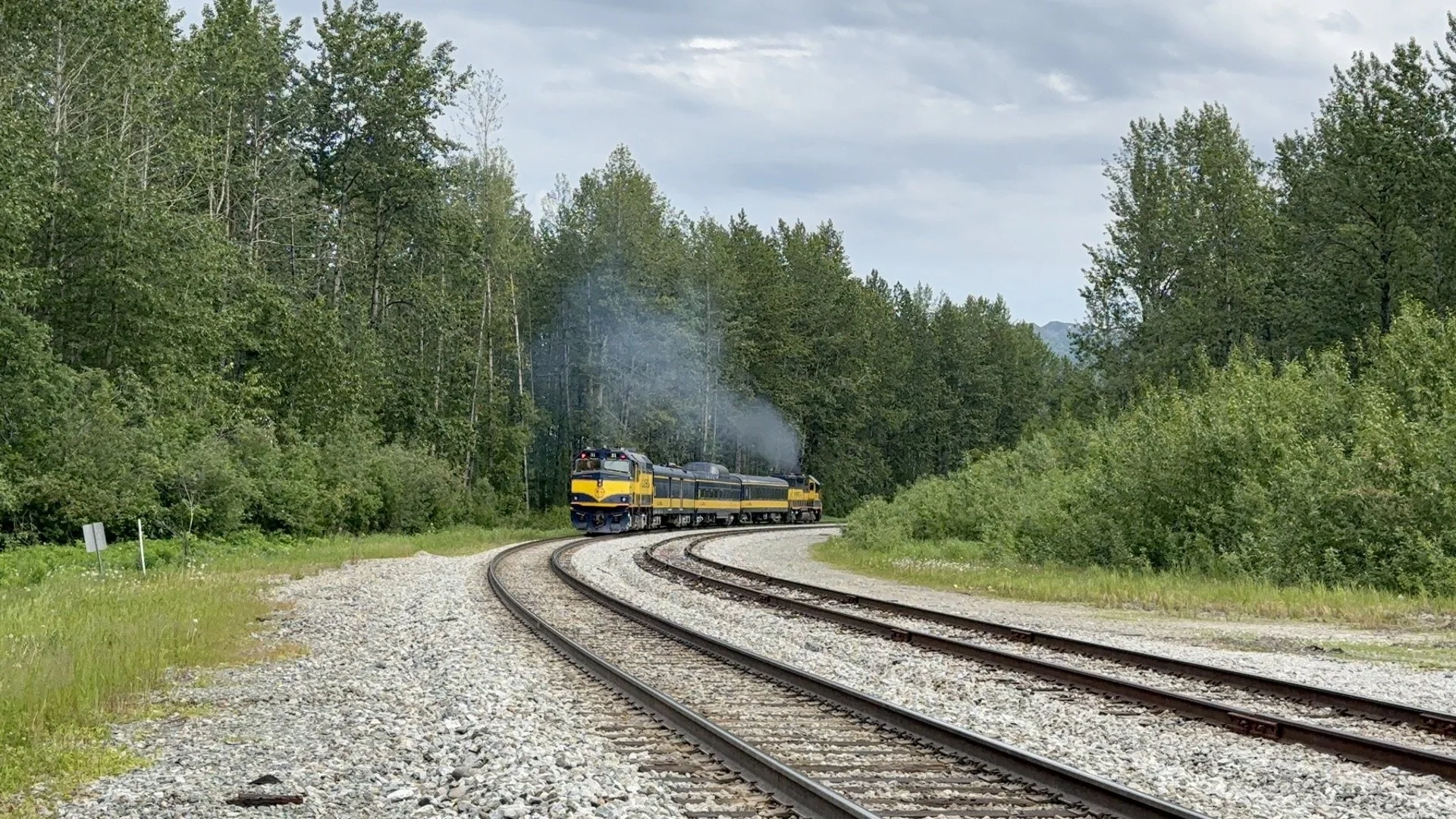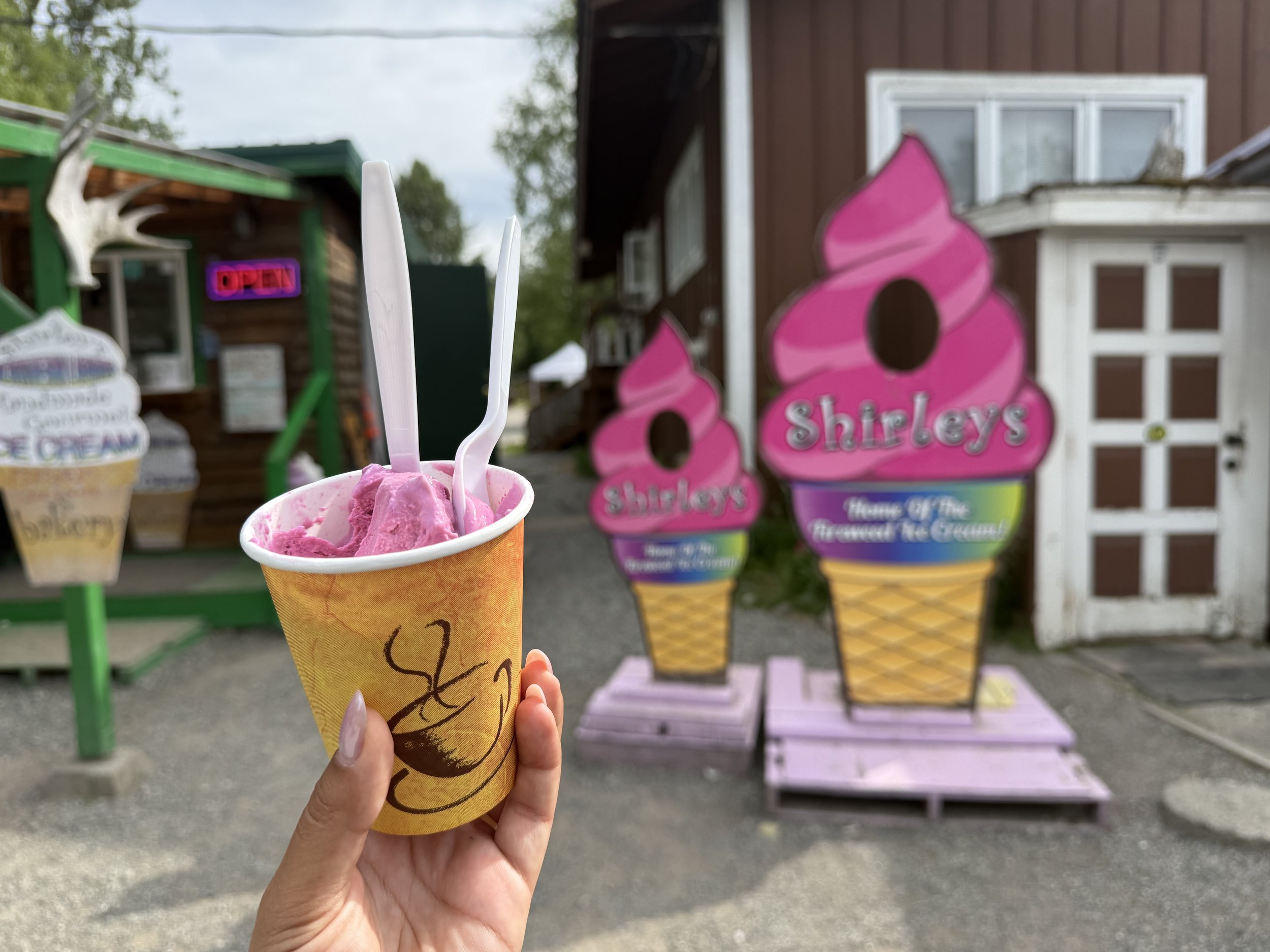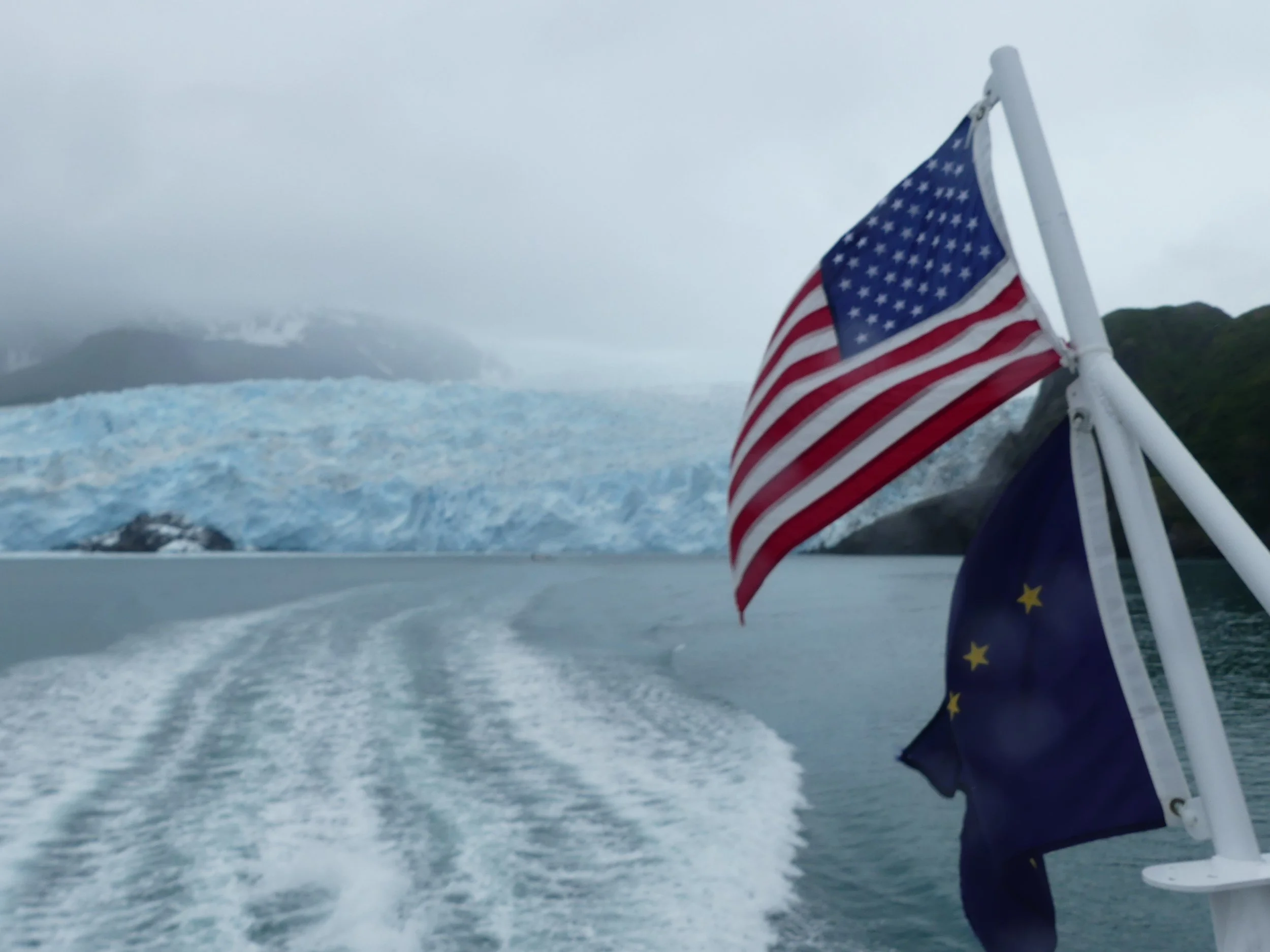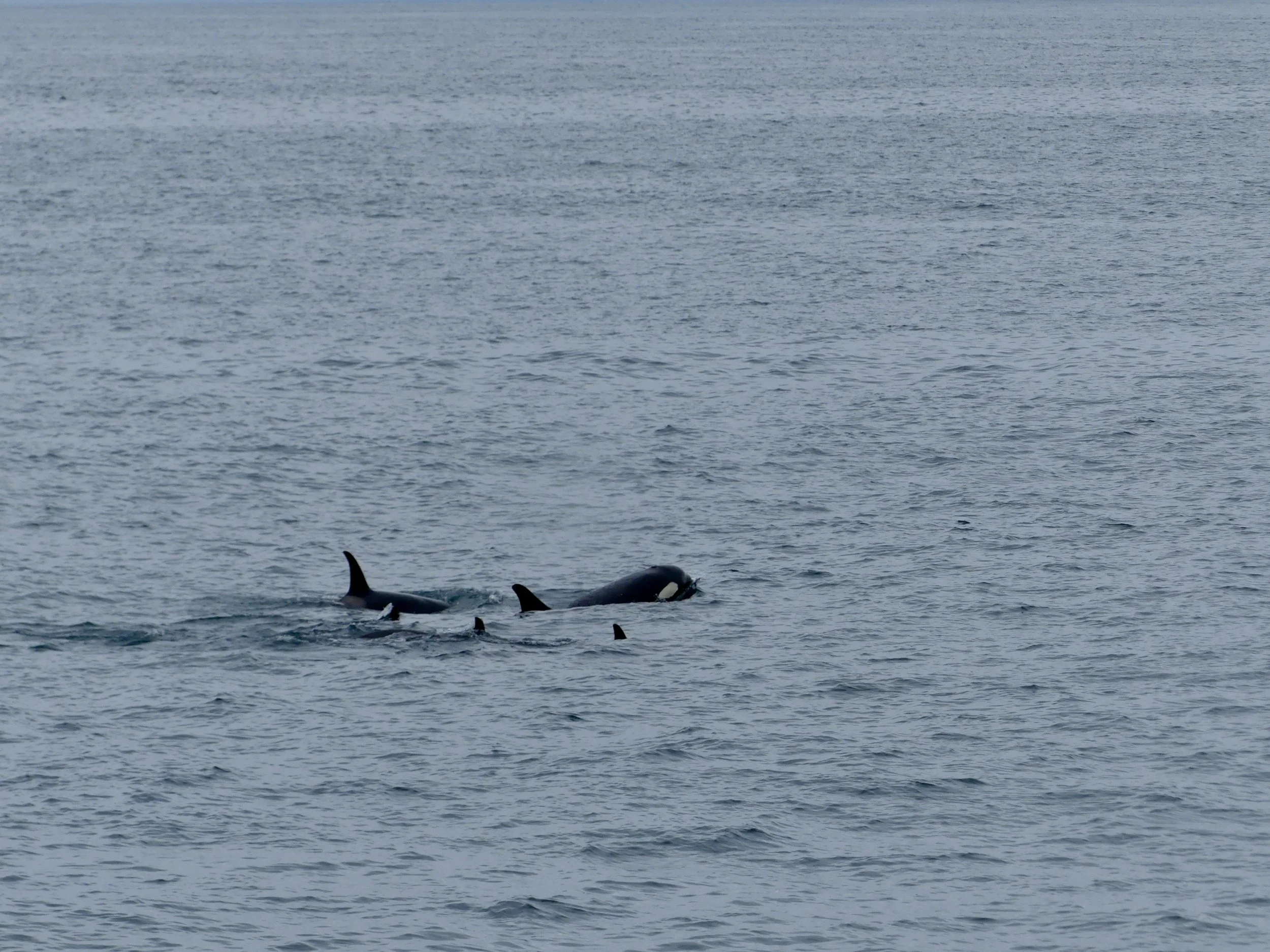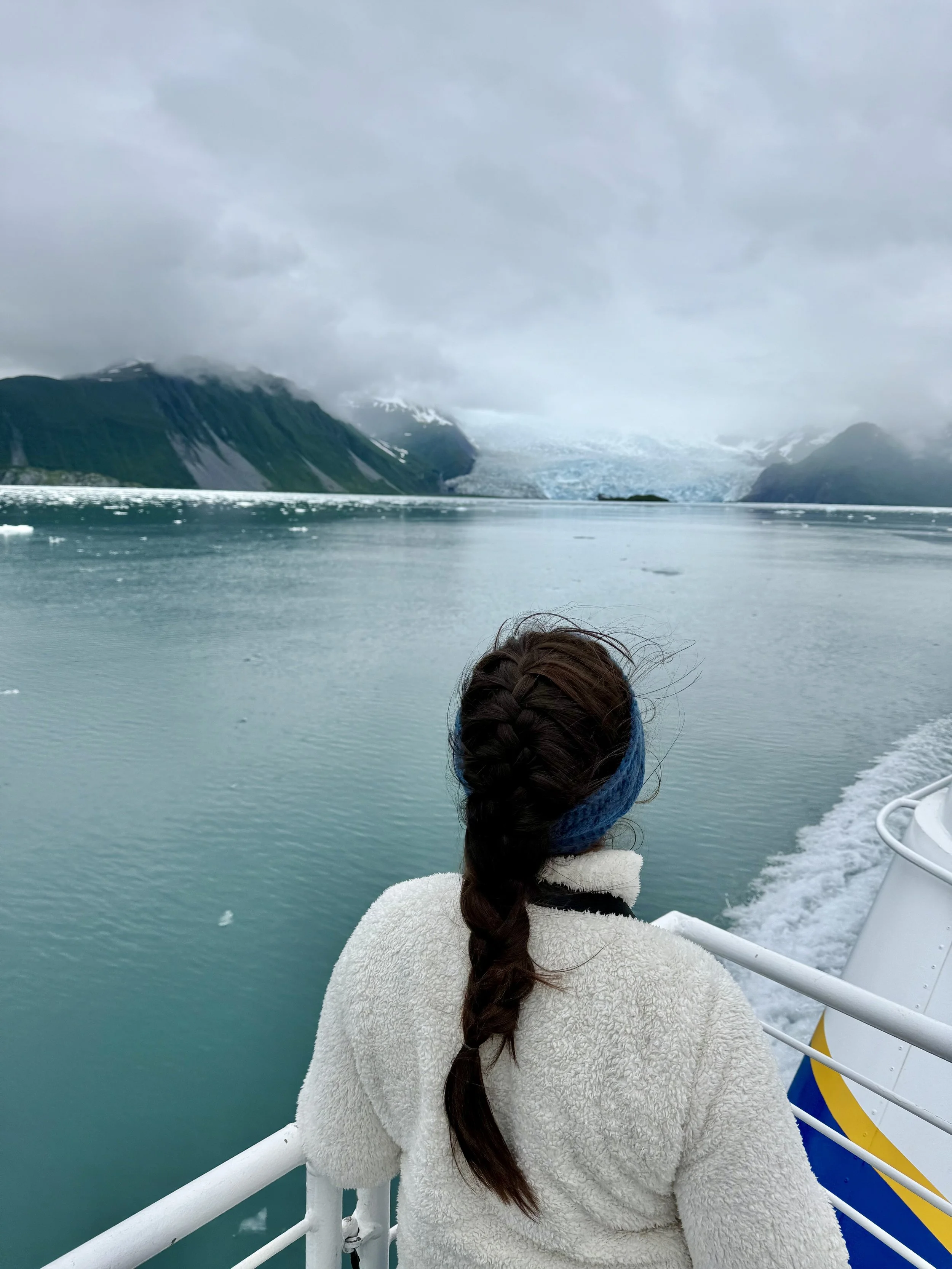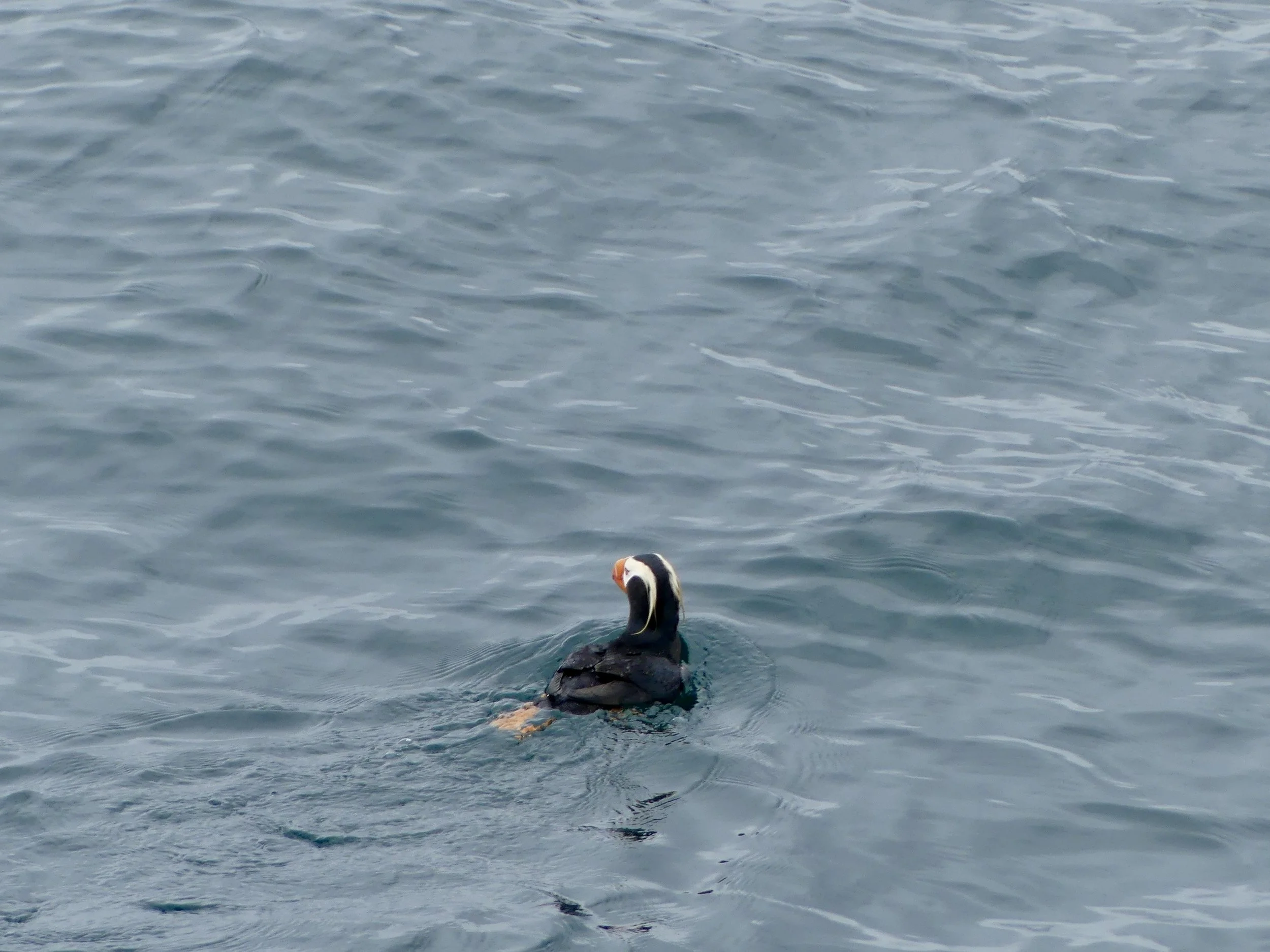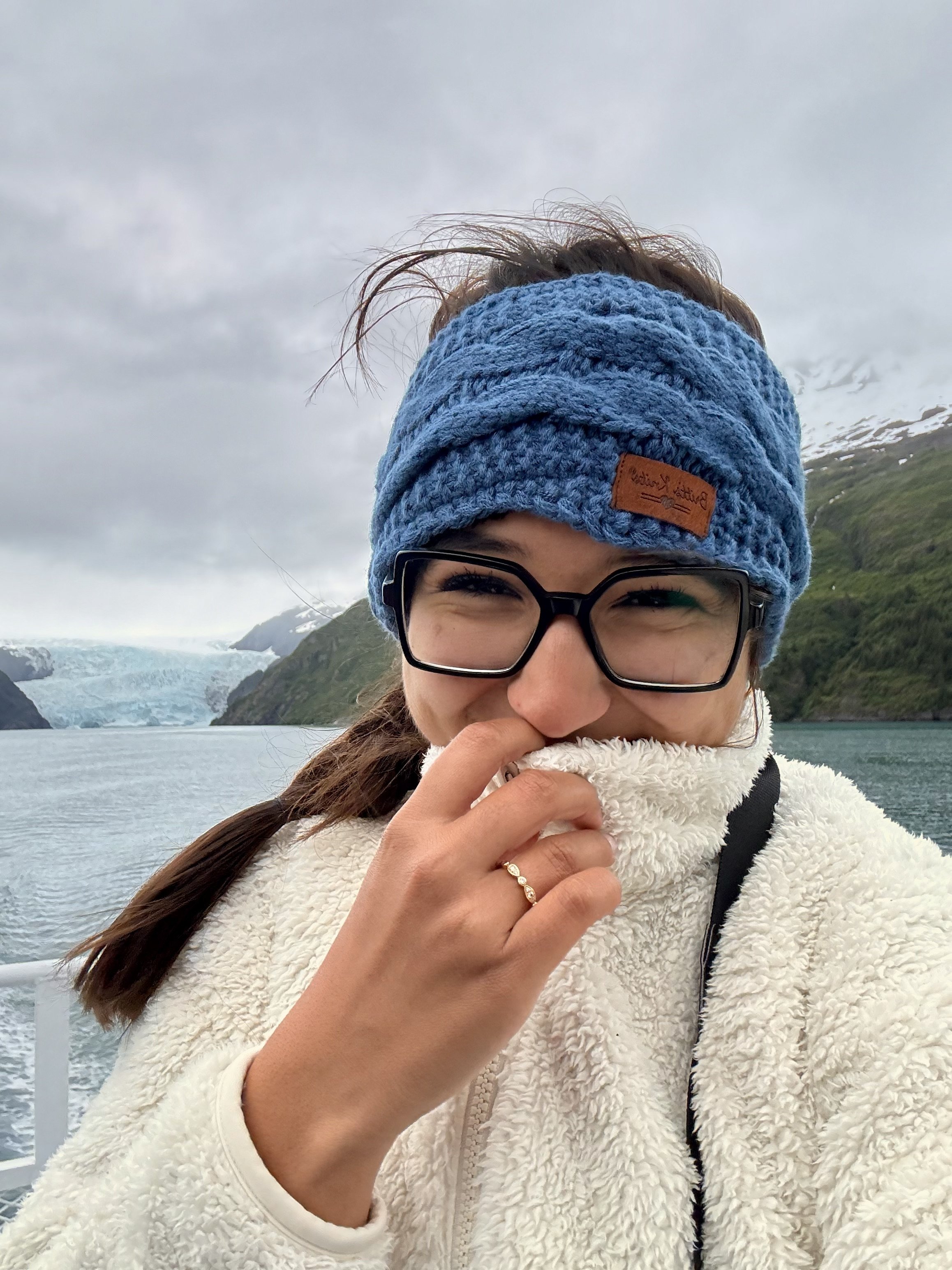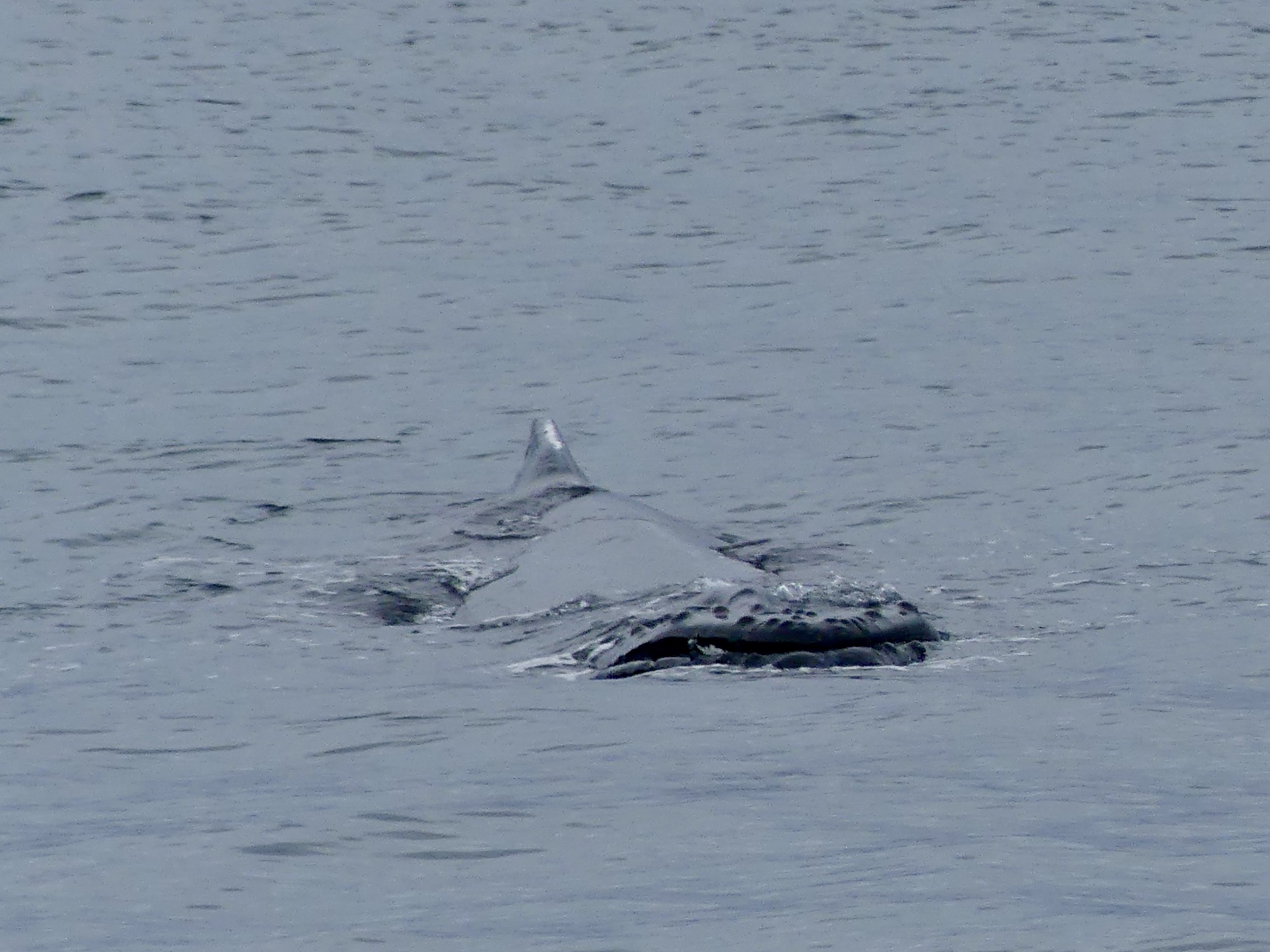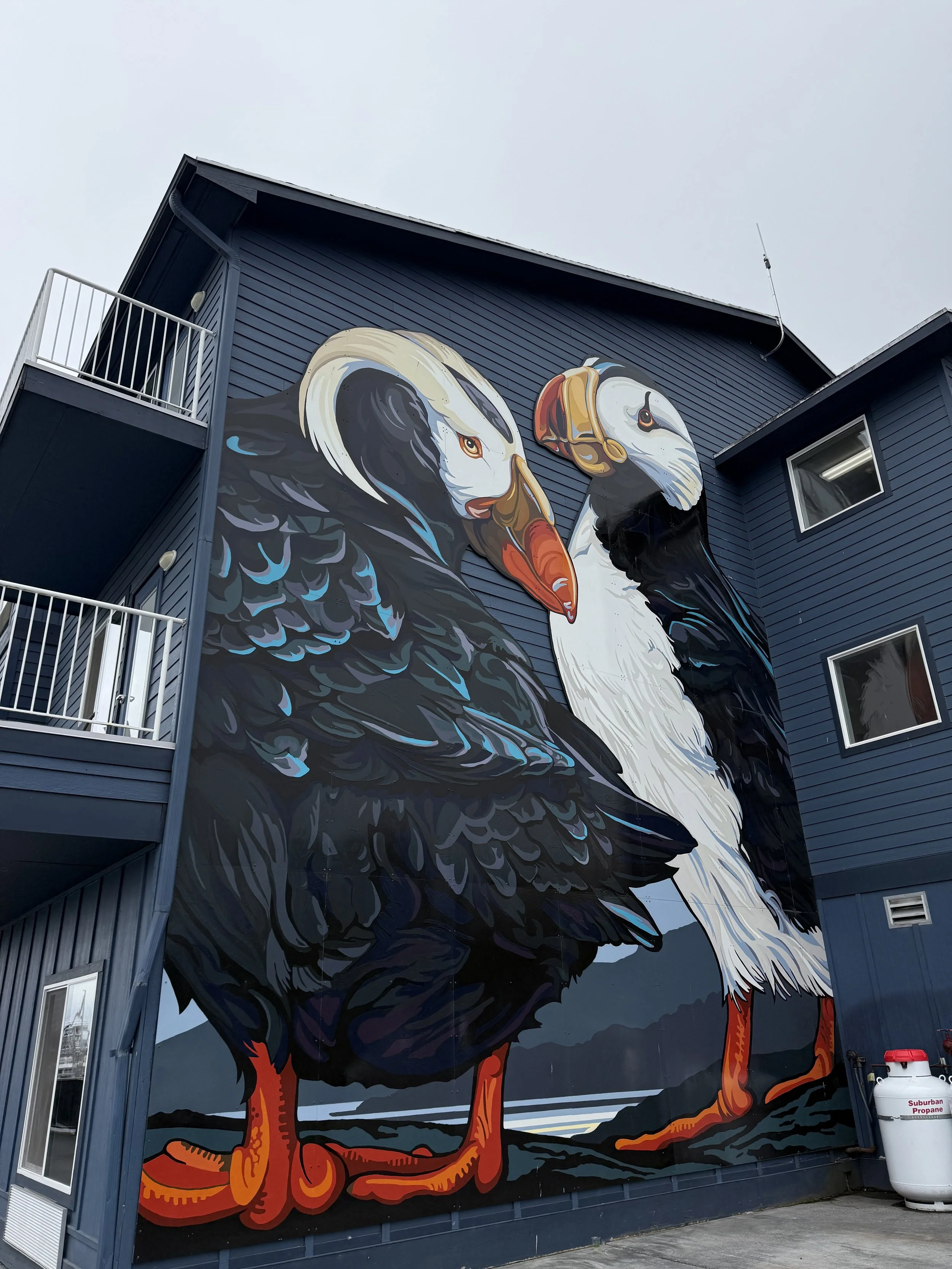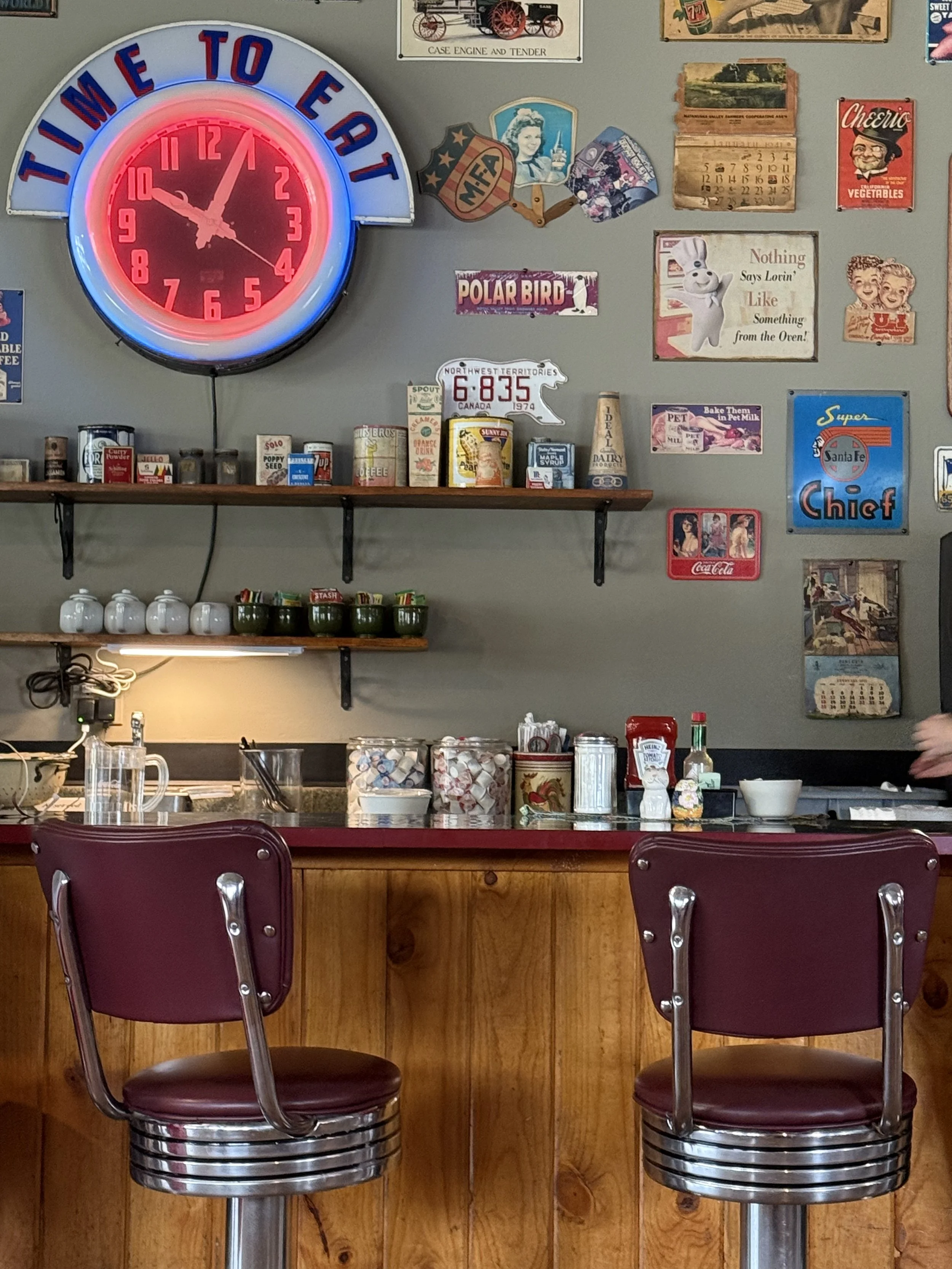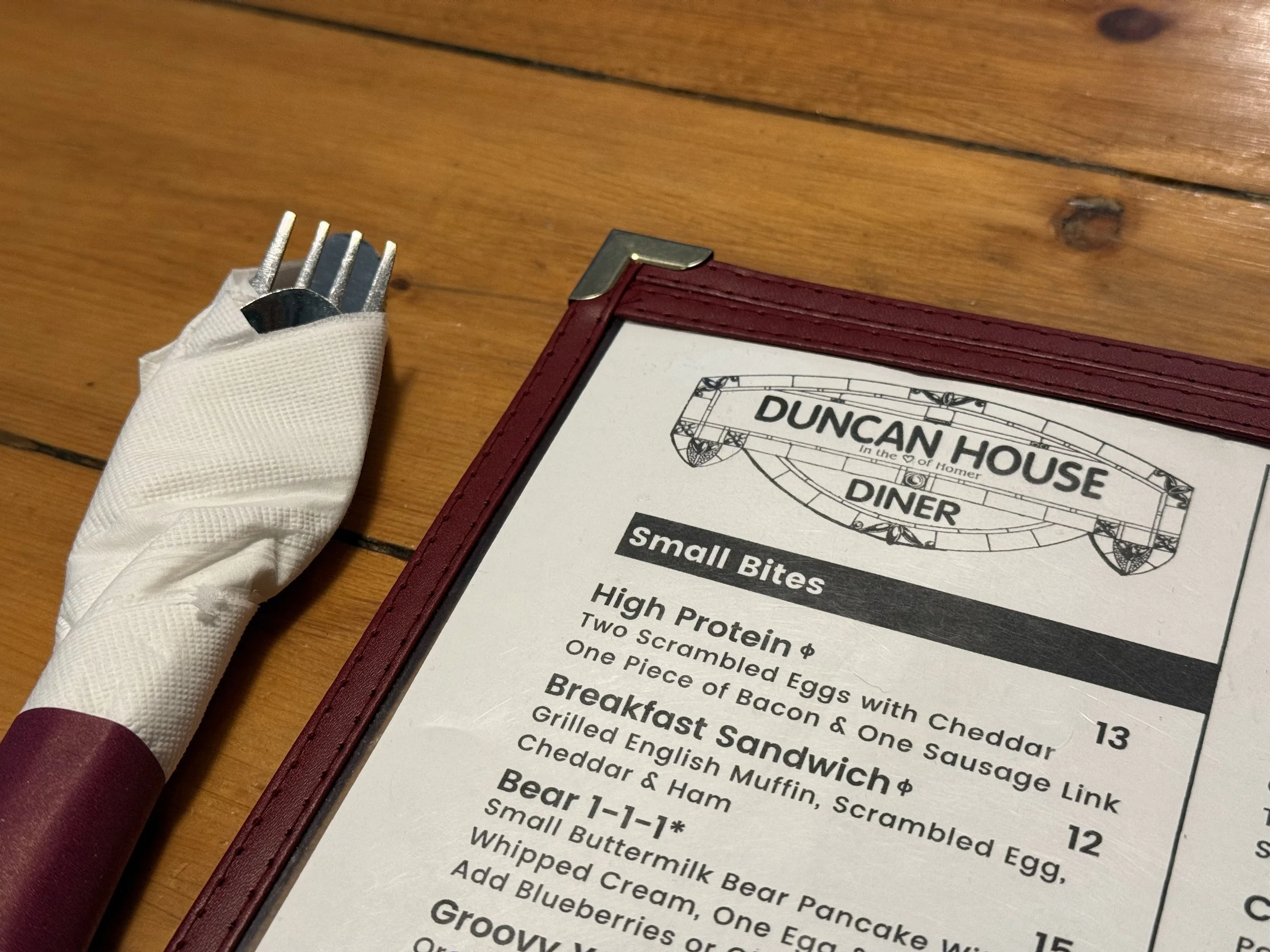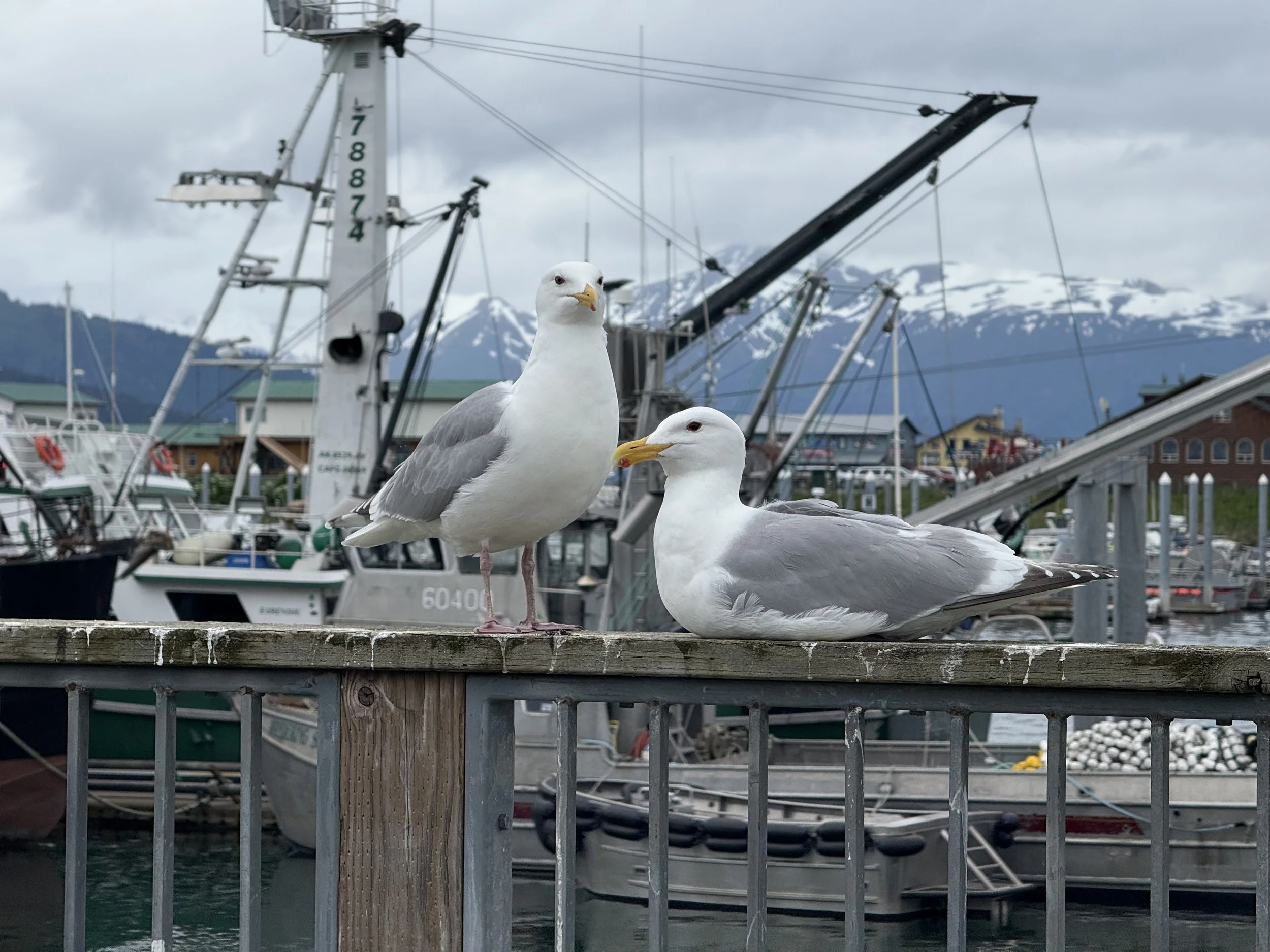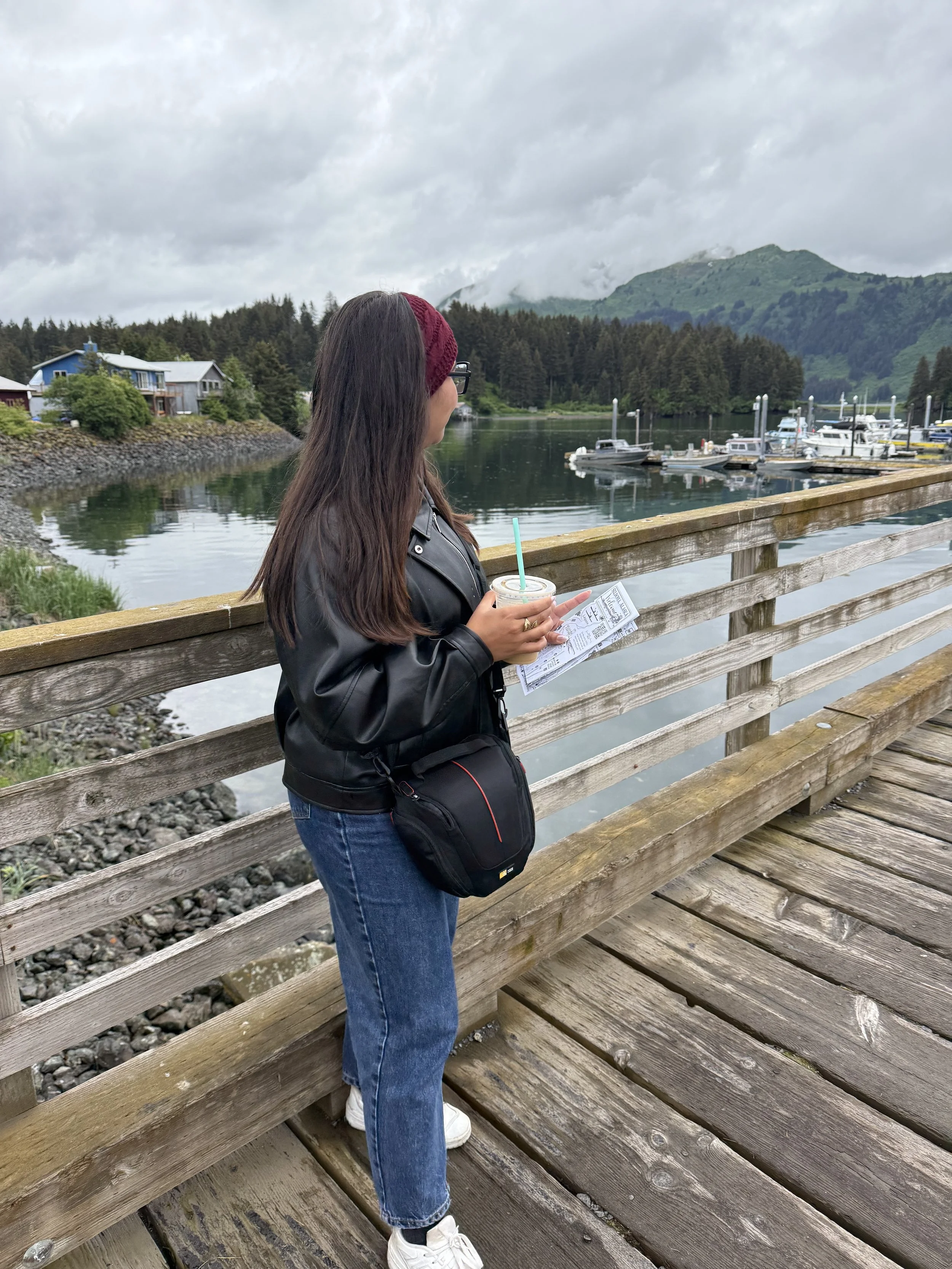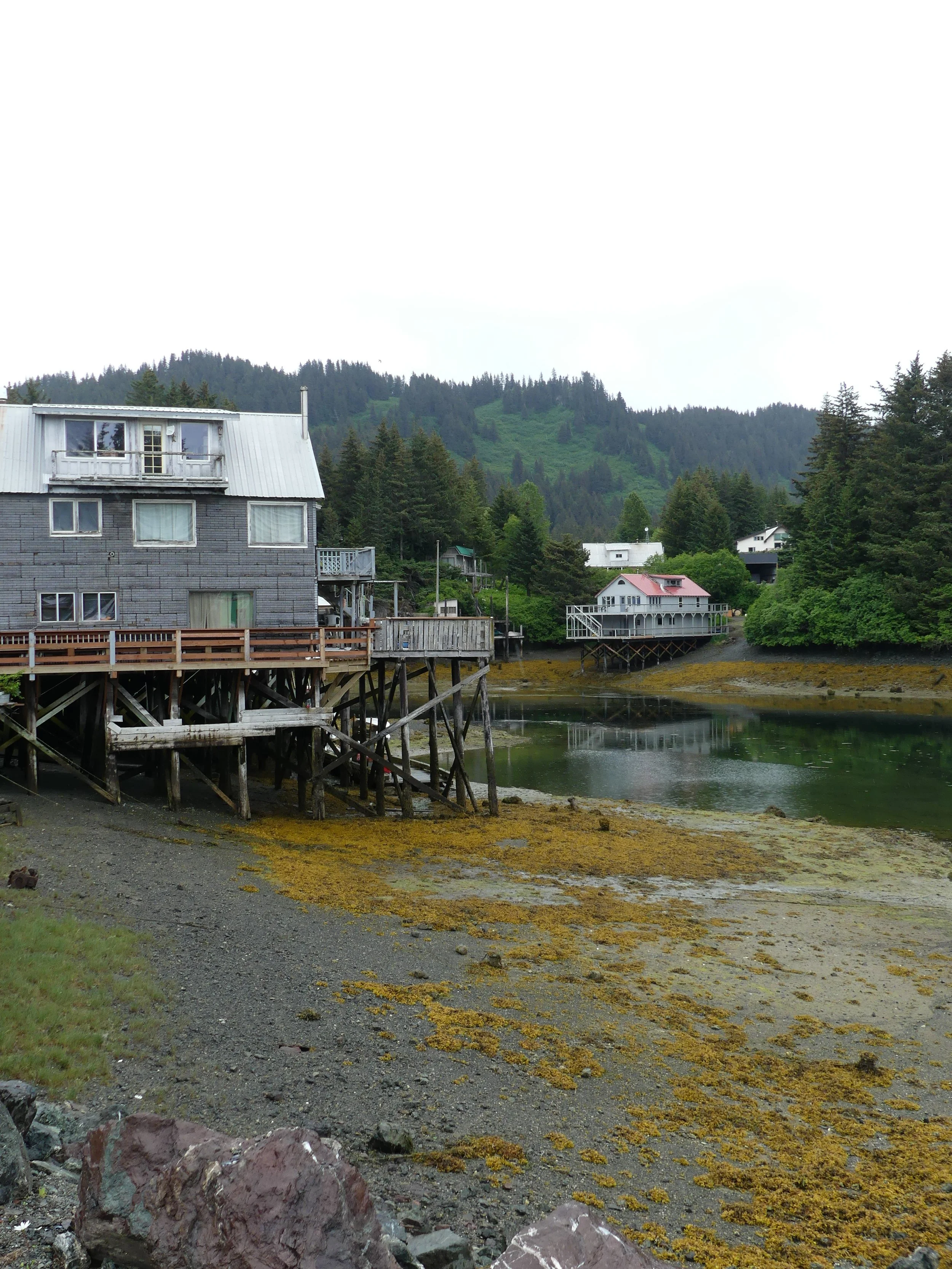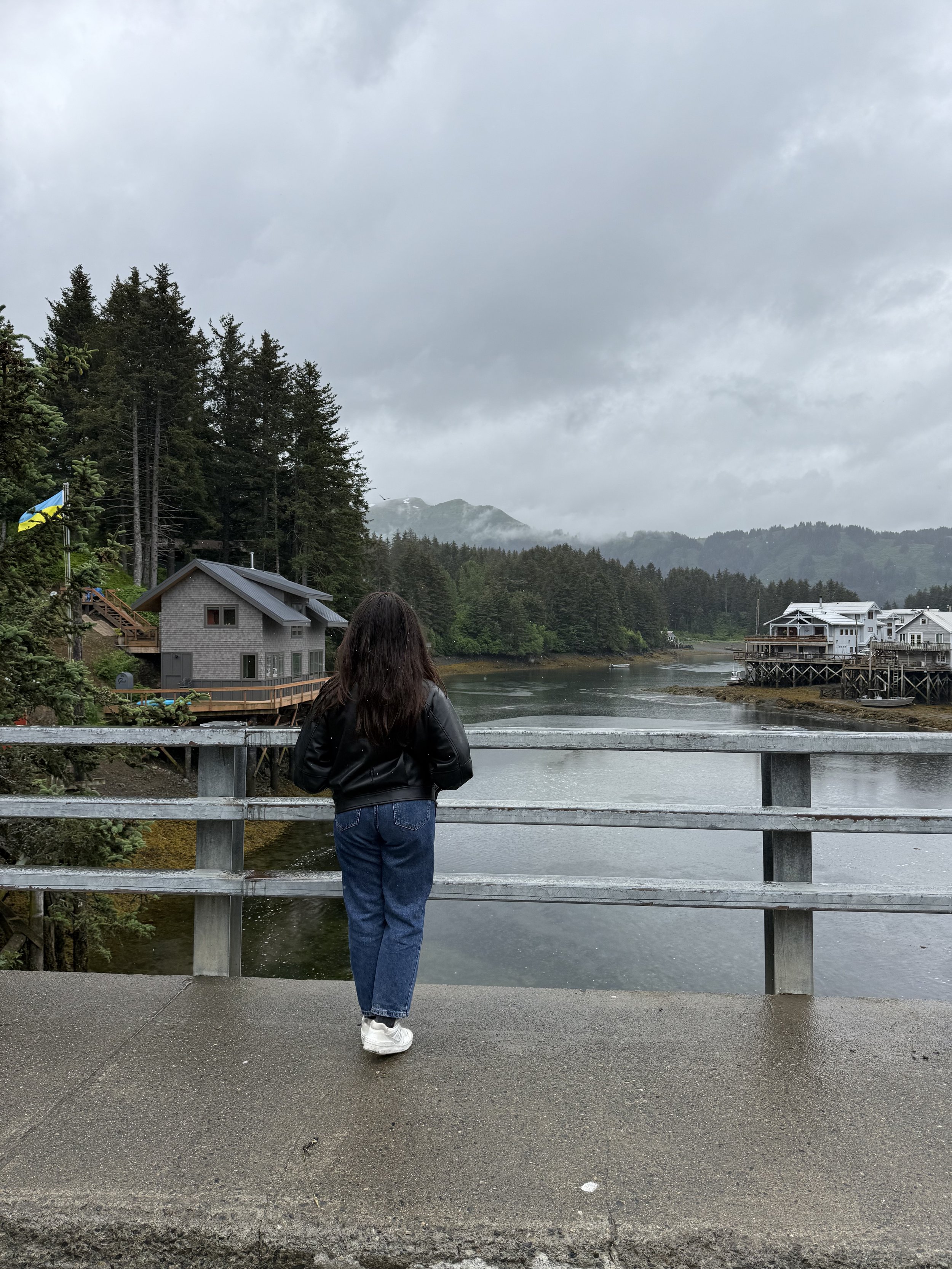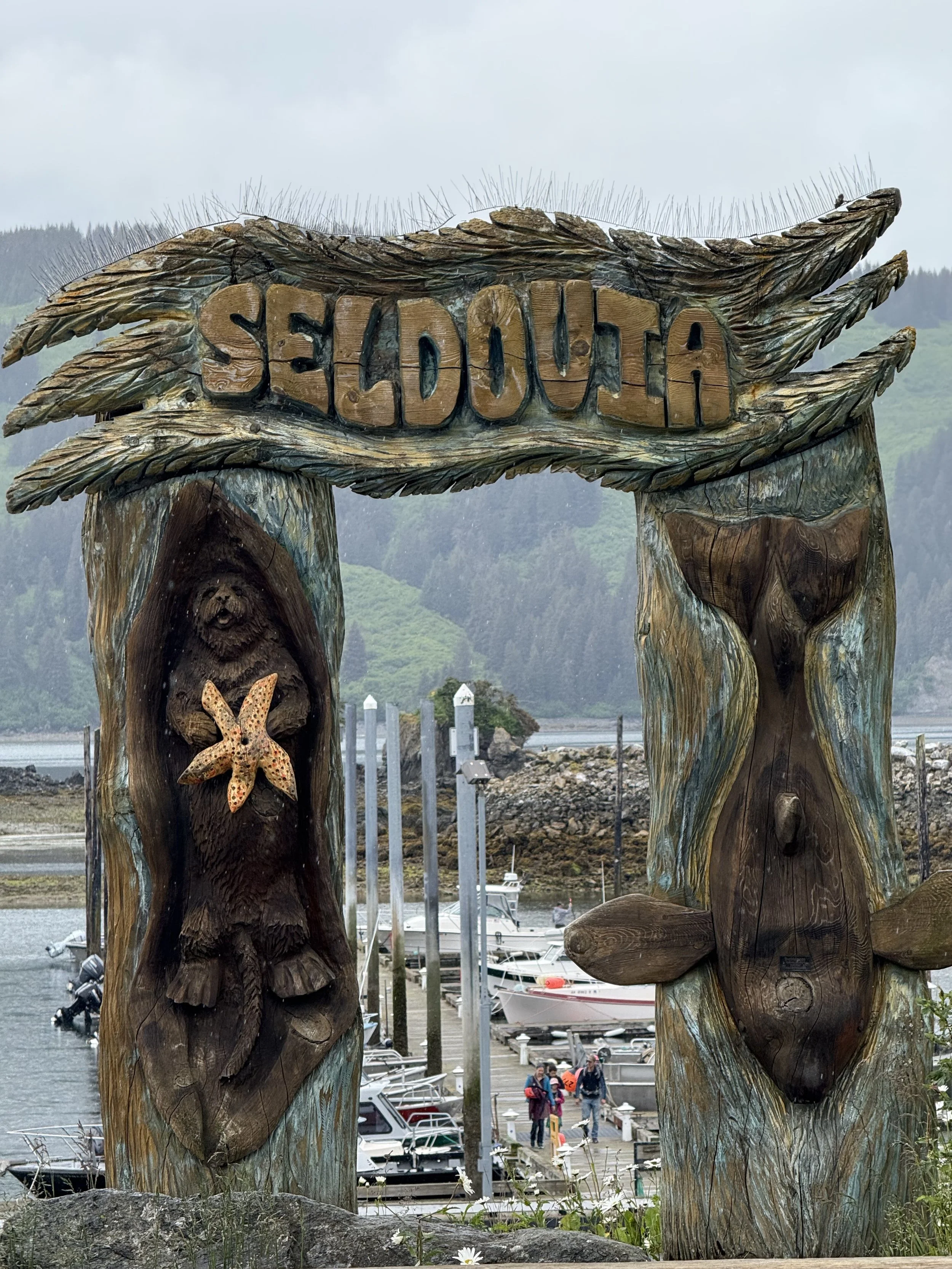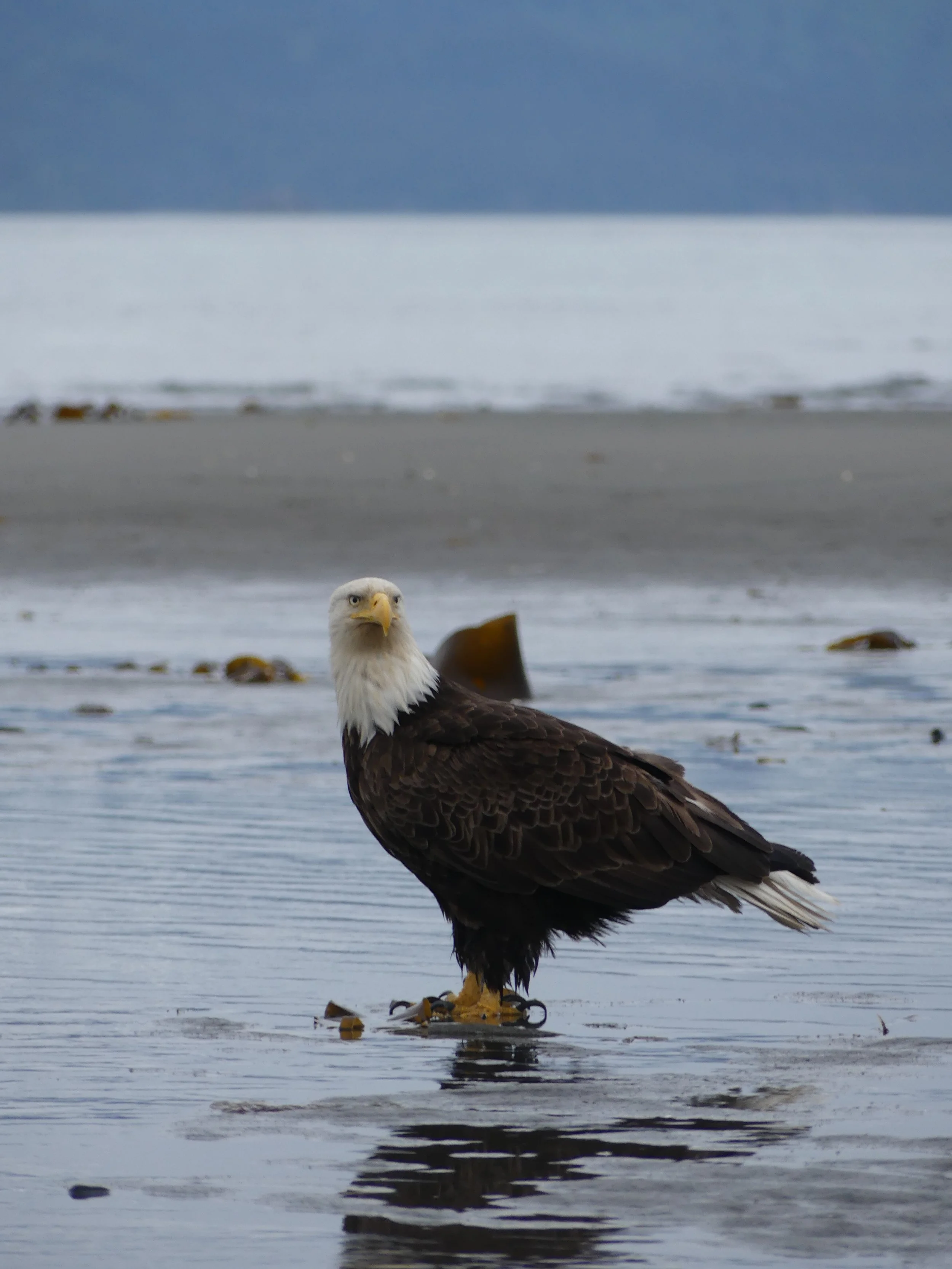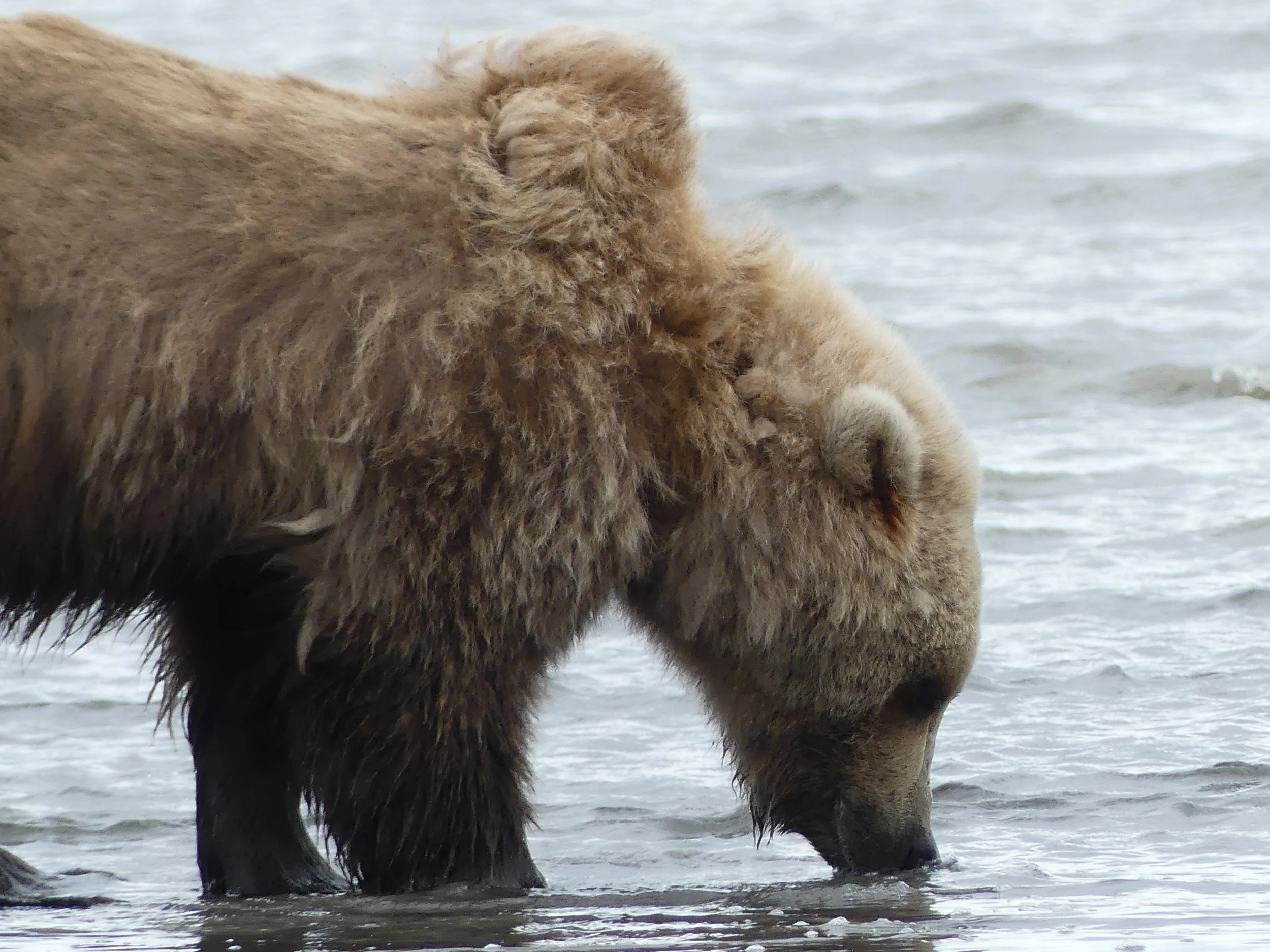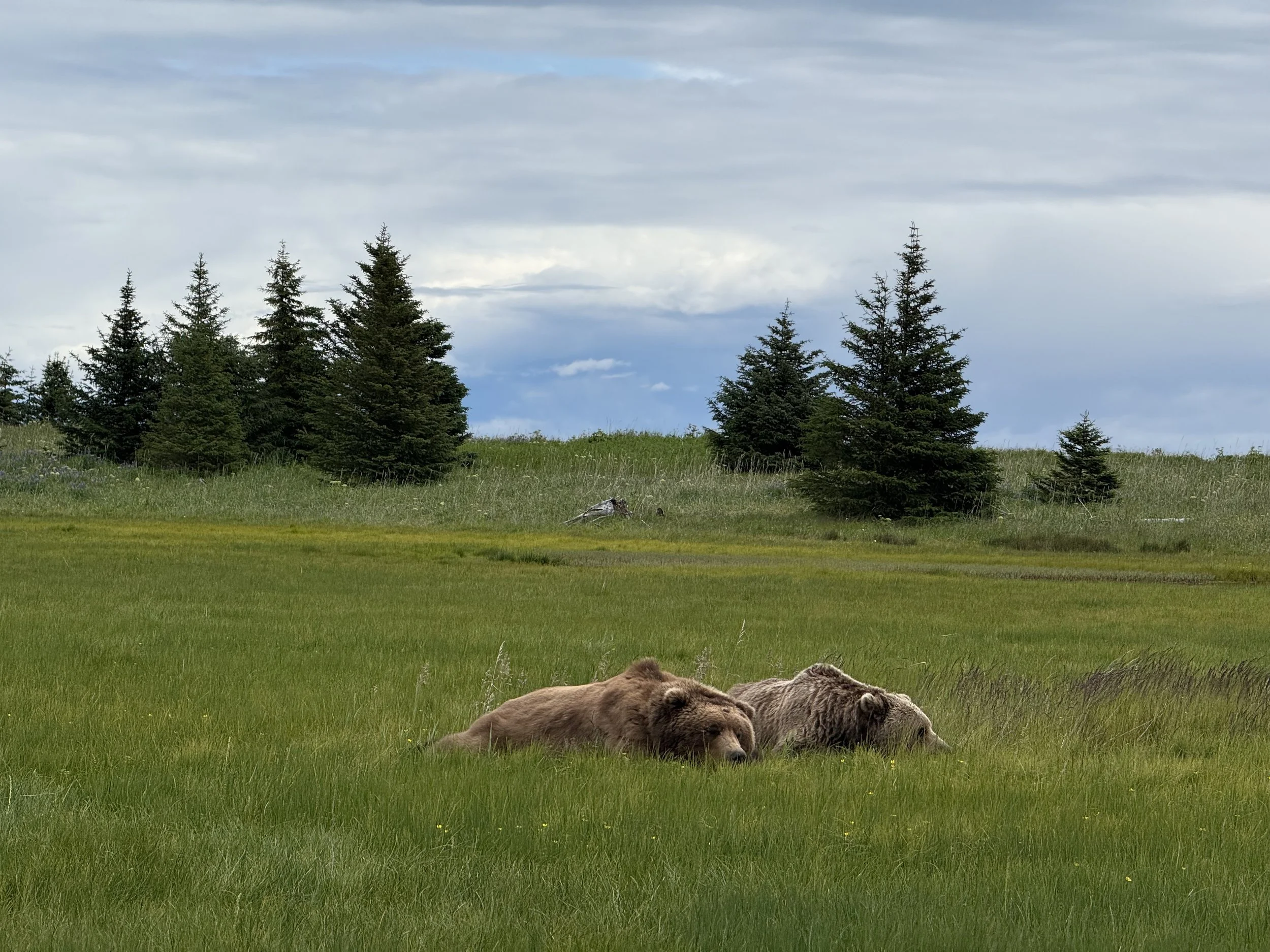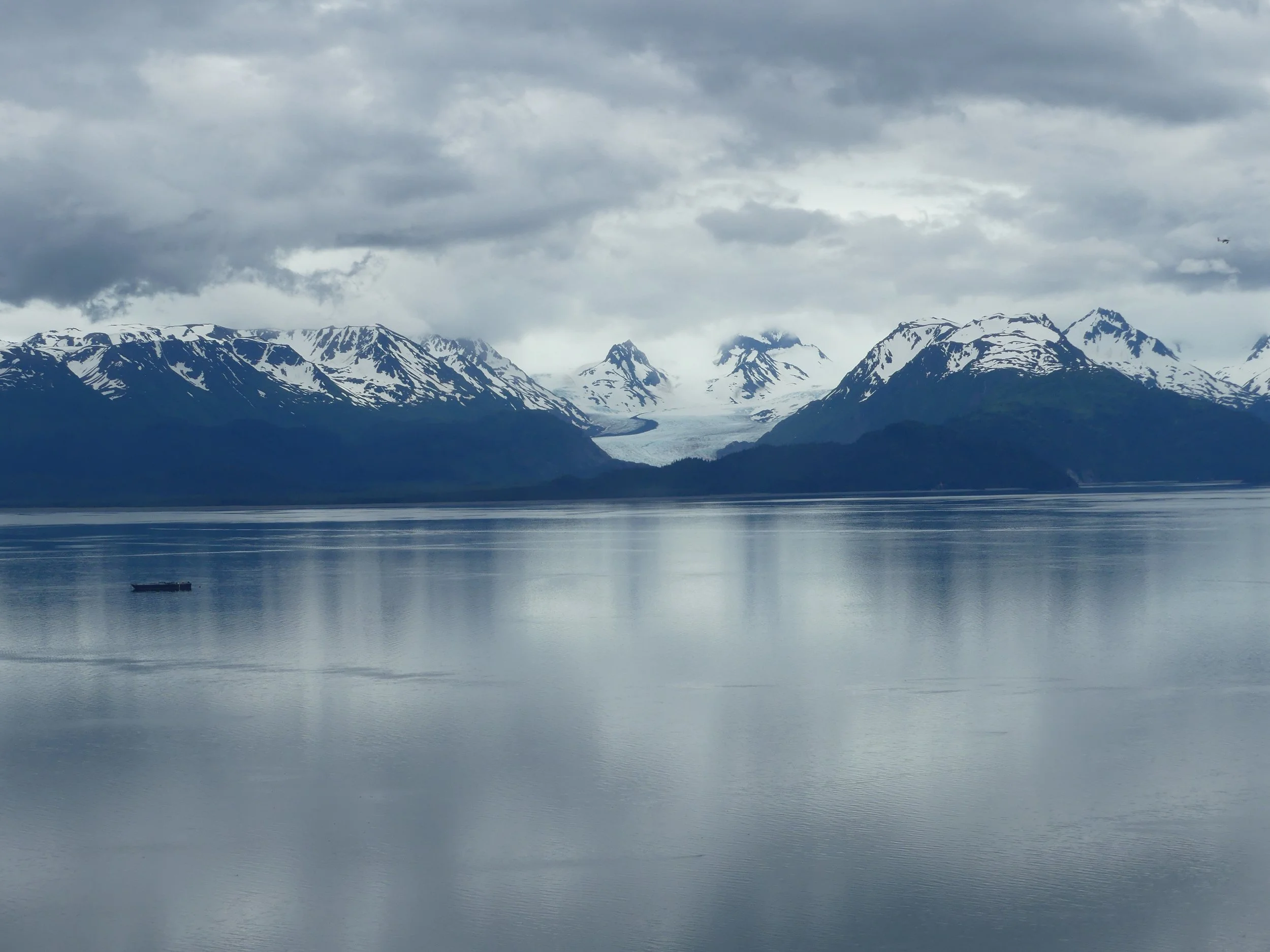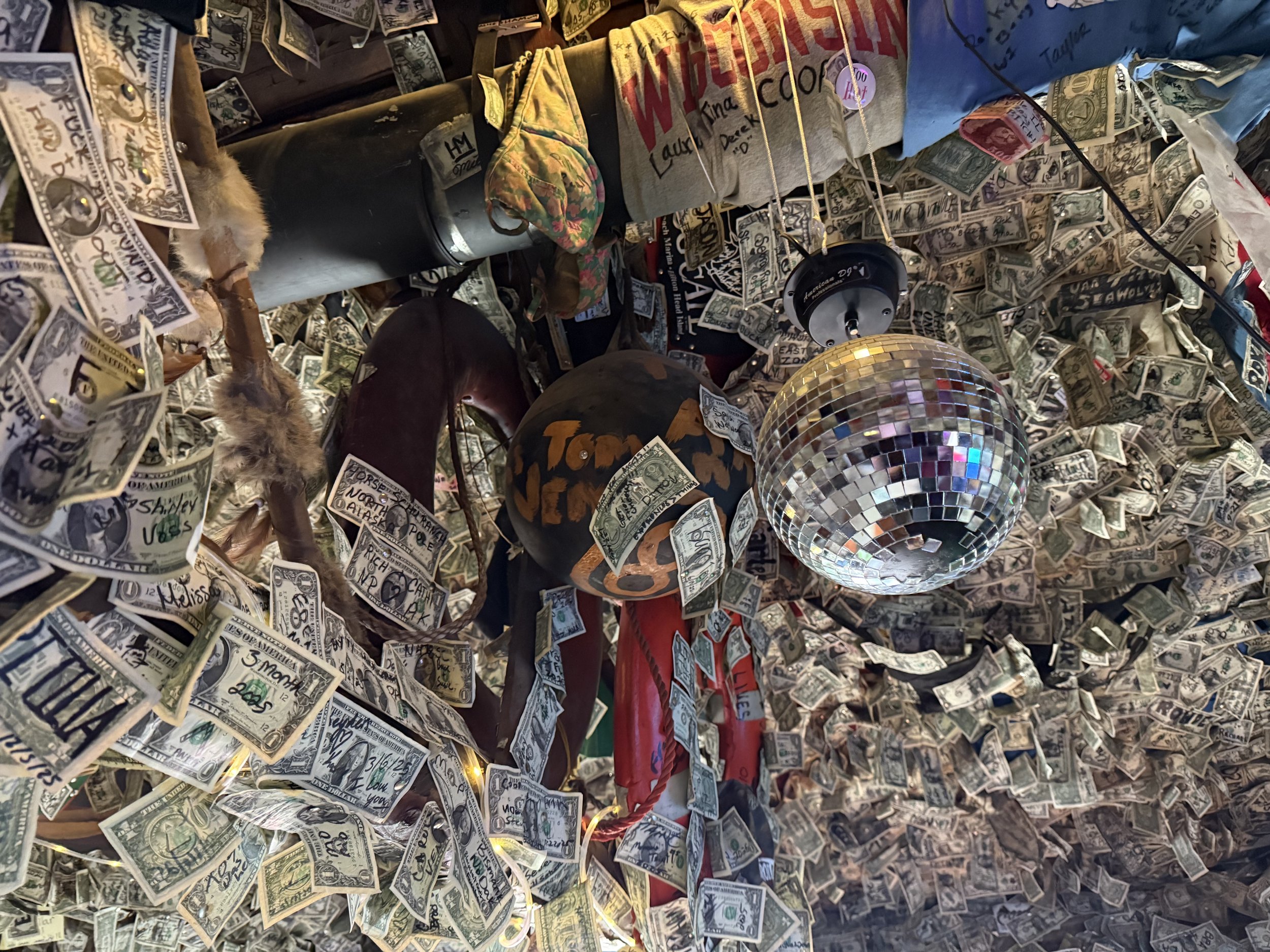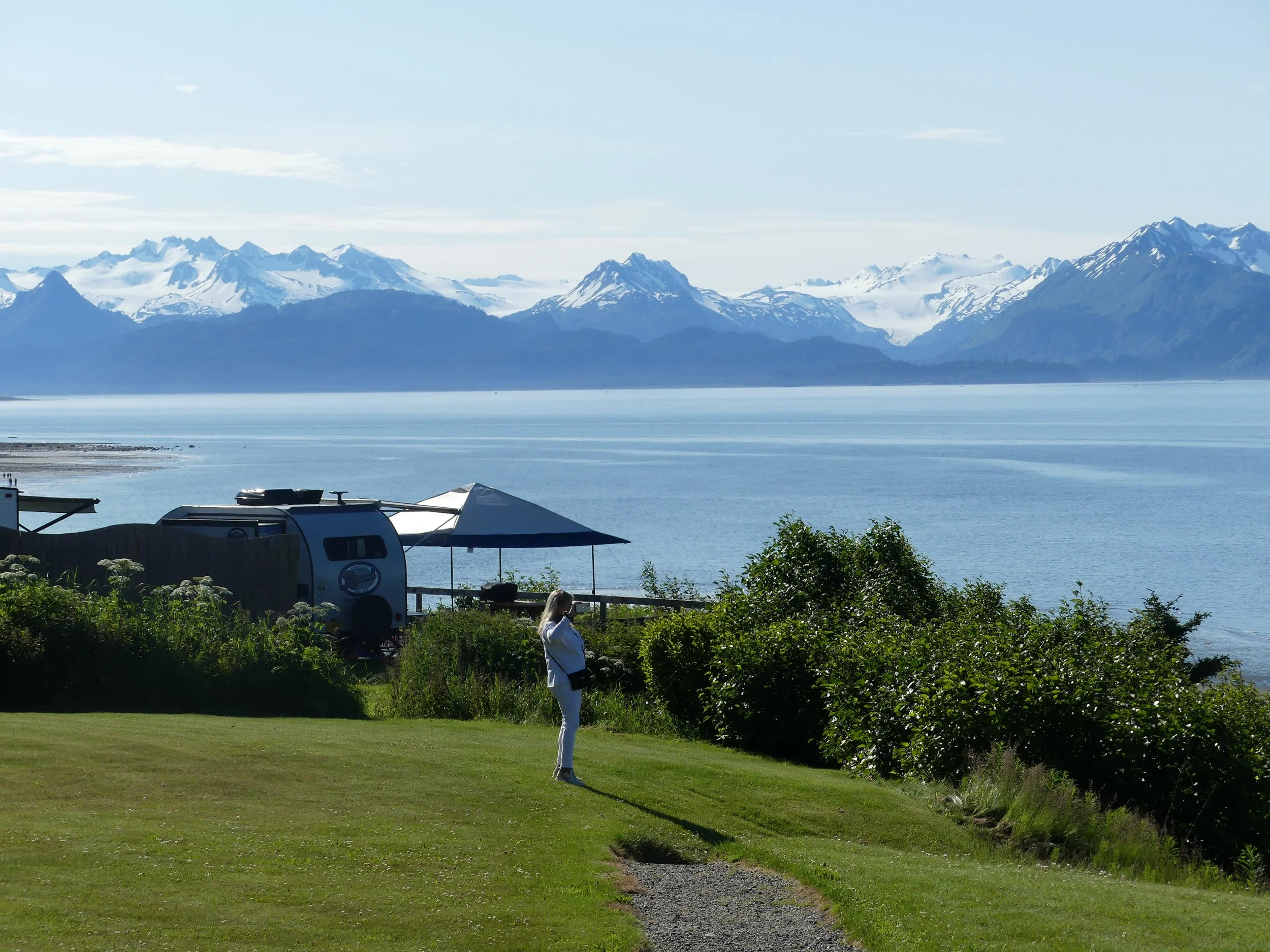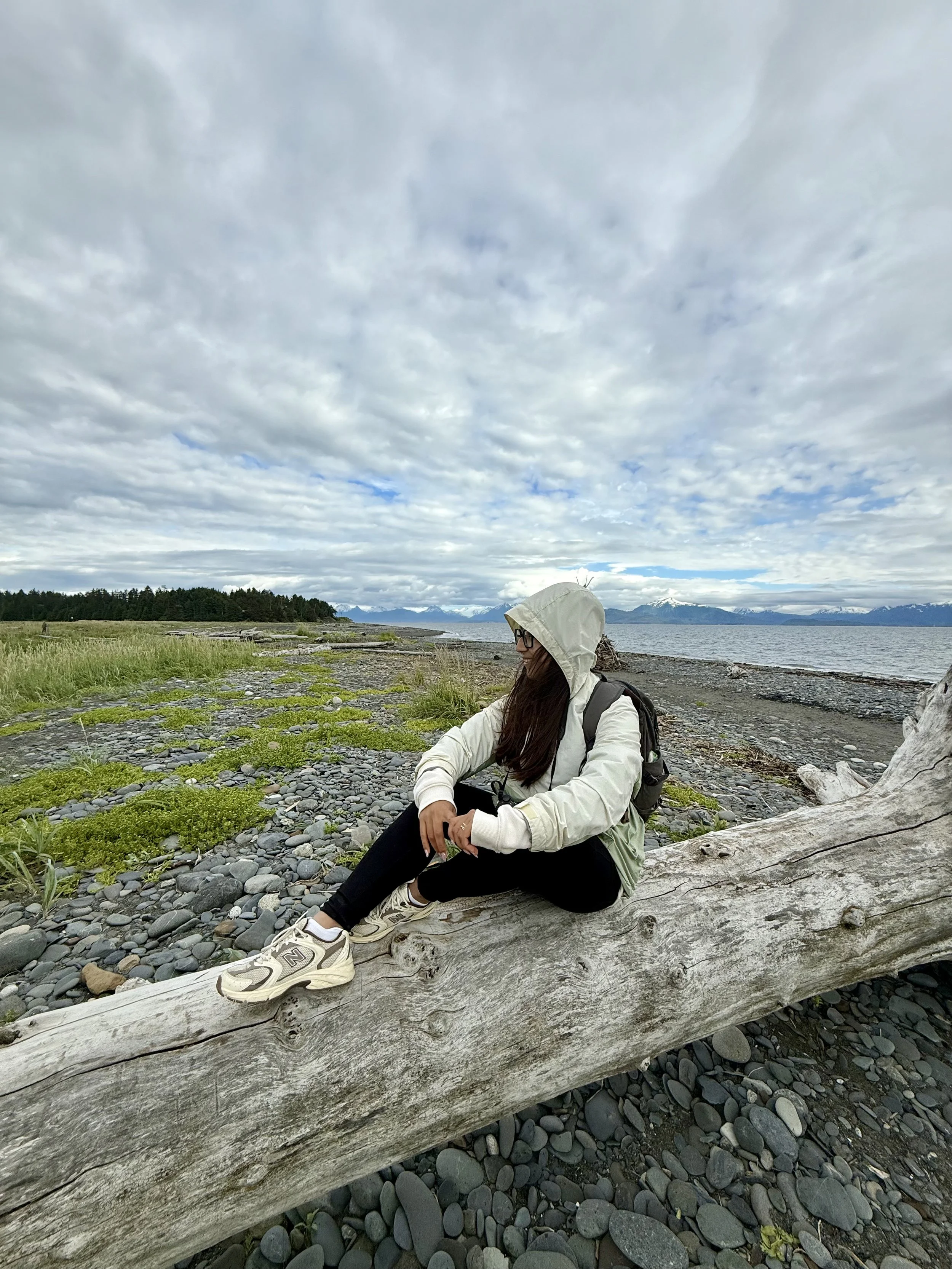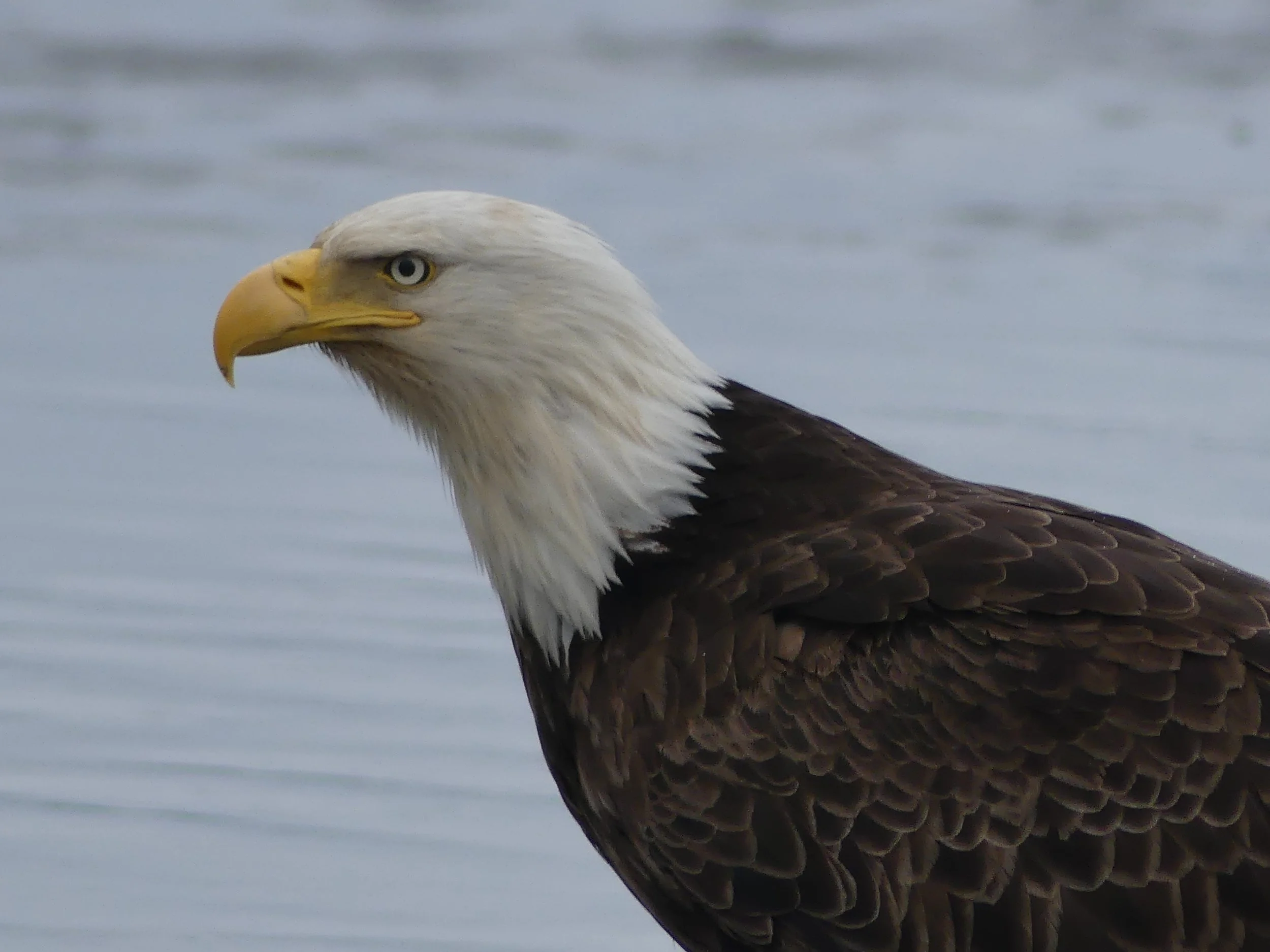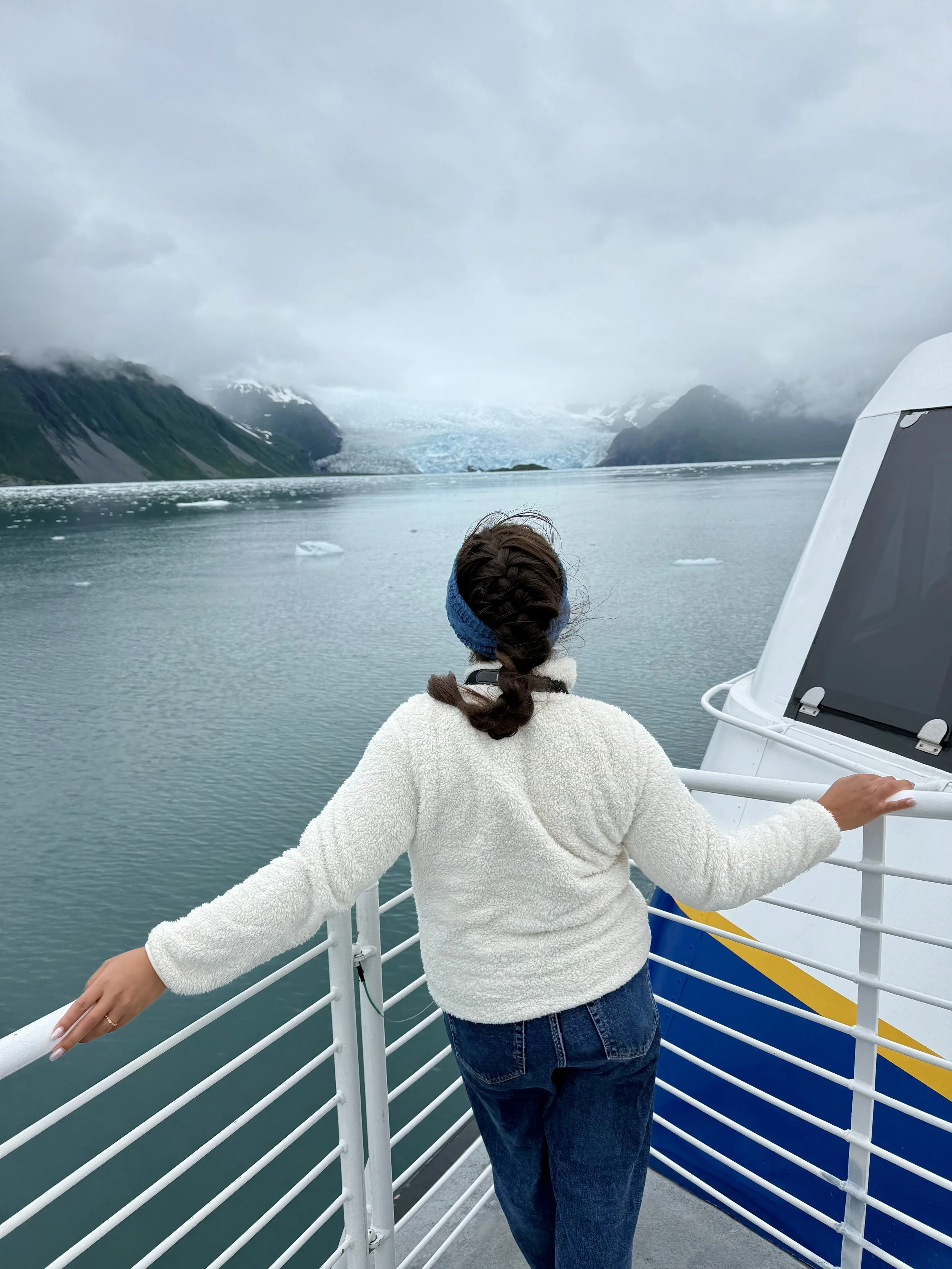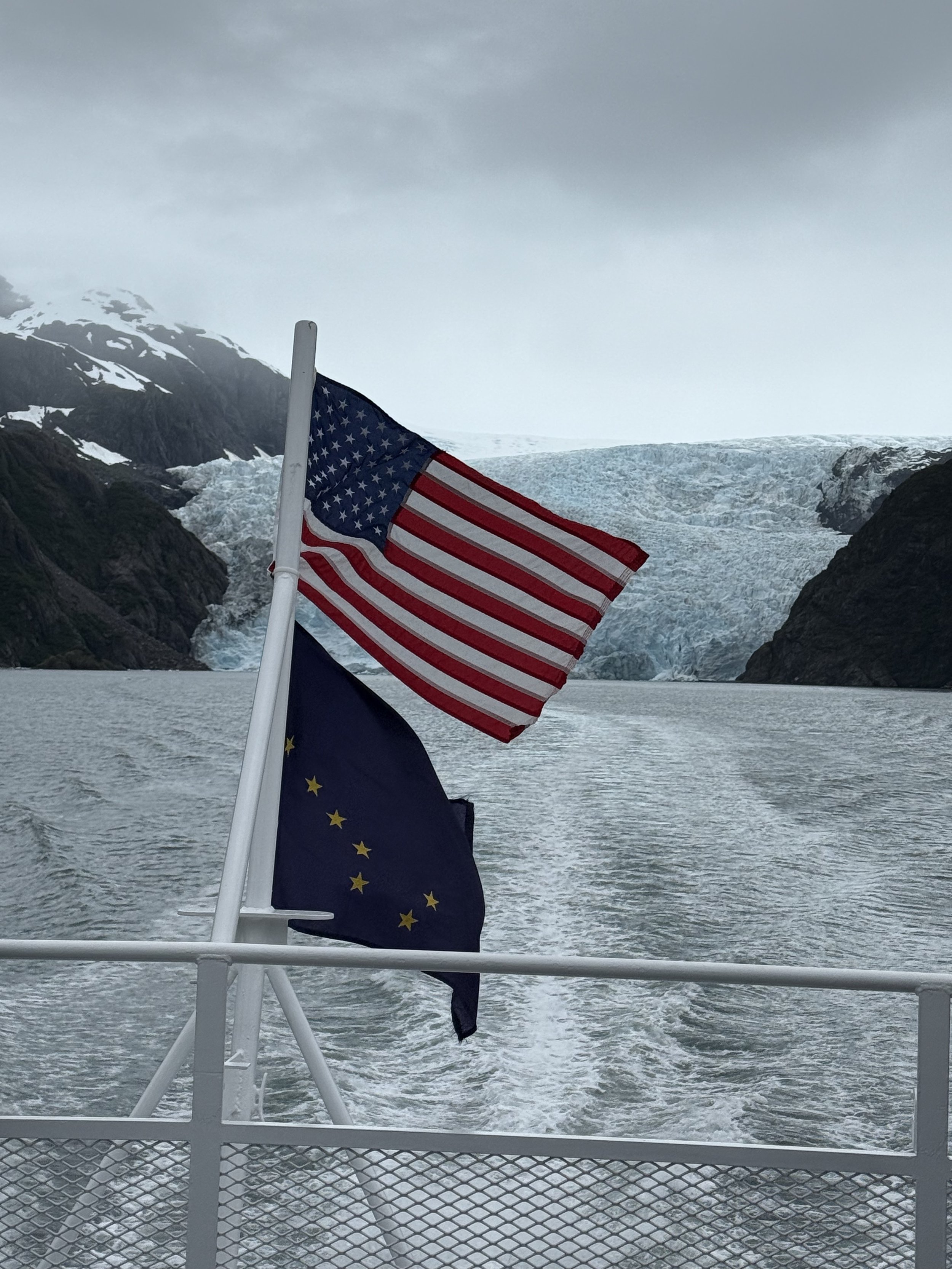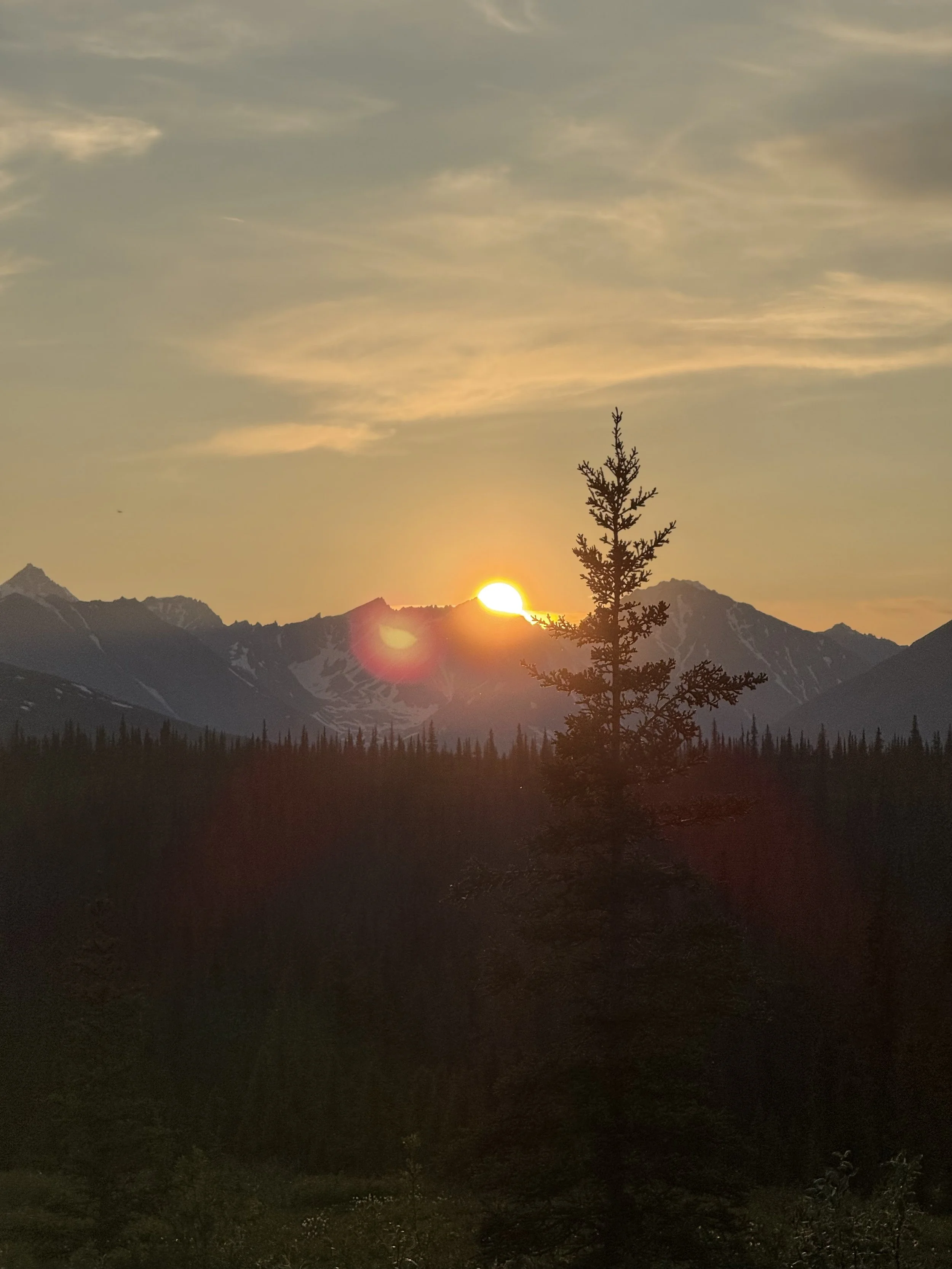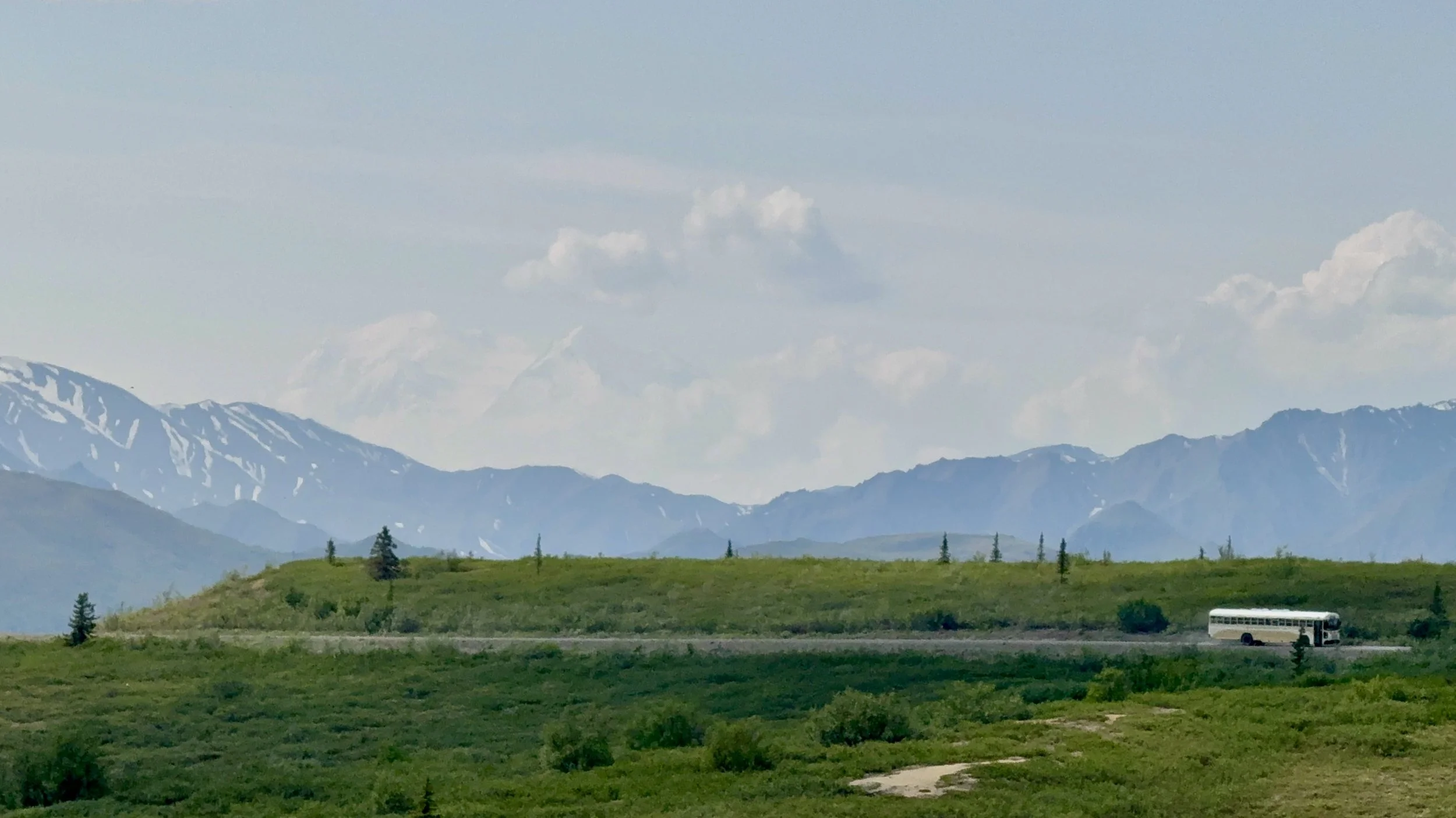The Last Frontier: 14 days in Alaska during June
A mother–daughter road trip through fjords, glaciers, and wilderness
For the past four years, my mom and I have created a tradition: one trip a year, just the two of us, somewhere we’ve always dreamed of. In 2025, we finally chose Alaska, joined by two American friends.
Two French girls, two Californians, one rented car, endless wilderness ahead. I had imagined Alaska as a frozen, empty land (the cultural inheritance of Into the Wild or other pieces of work depicting Alaska as extreme full of permafrost, silence and isolation)
But Alaska isn’t empty at all
Alaska is alive. And for 14 days, we crossed coastal towns and mountain passes, spotted bears and puffins, flew over glaciers, and ended our trip on a thin stretch of land called the end of the road. Here is everything we saw, learned, loved and tips for your very own trip.
Some beforehand information
Budget: high > Tours + remote accommodation add up quickly.
When to book: 6–8 months in advance. We traveled in June and booked everything in October.
Transportation: Rent a big car > You'll want trunk space for layers, food, and water.
Food tip: Groceries are cheapest in Anchorage. Prices rise the moment you leave the city.
🗺️ Our 14-Day Road Trip🗺️
My view from the plane
Two weeks is a very reasonable amount of time to get a real feel and here is how we structured our trip:
2 days in Anchorage : perfect to start acclimating and exploring nearby mountains and coastal trails.
3 days in Fairbanks : dive into the local culture
2 days in Denali : to marvel at the towering peak of Denali and the abundant wildlife in the national park.
2 days in Talkeetna : a charming small town with views of the Alaska Range, a perfect base for day hikes or flightseeing tours.
2 days in Seward : gateway to the Kenai Fjords, glaciers, and whale watching adventures.
4 days in Homer : our final stretch on the Kenai Peninsula, enjoying coastal beauty, fishing villages, and the chance to spot bears.
“(…) she hadn’t been prepared for the wild, spectacular beauty of Alaska. It was otherworldly somehow, magical in its vast expanse, an incomparable landscape of soaring glacier-filled white mountains that ran the length of the horizon, knife-tip points pressed high into a cloudless cornflower-blue sky. Kachemak Bay was a sheet of hammered sterling in the sunlight. Boats dotted the bay. The air smelled briny, deeply of the sea.”
ANCHORAGE
We landed in Anchorage after a long journey from Paris (via Seattle-Tacoma) and picked up the car that would become our home base for the next two weeks.
Turnagain Arm
Our first full day began with a drive along Turnagain Arm, south of Anchorage. Coming from Europe, a place where beautiful landscapes are not rare, especially in France, I didn’t expect to be this blown away.
📍 Easy scenic stops & short hikes:
McHugh Creek (our stop)
Potter Creek Trail
Windy Corner
Falls Creek
Coastal Wildlife Refuge + biking to Earthquake Park
We continued to the Anchorage Coastal Wildlife Refuge, a preserved wetland full of ducks, geese, and migrating birds established in 1971 to protect wildlife, and their habitats.
It stretches from Point Woronzof to Potter Creek, covering much of Anchorage’s coastal marshes and intertidal mudflats. This rich ecosystem is home to countless species of migratory birds, nesting waterfowl, fish, and other wildlife.
I recommend walking along the boardwalk, best with binoculars in hand, and you’ll be treated to sightings of waterfowl, ducks, and even the occasional muskrat (for those who don’t know : I have a thing for birds).
In the afternoon, we rented bikes and rode the Tony Knowles Coastal Trail, an 11-mile path bordering the water.
We stopped at Earthquake Park, watched planes land right above us, and… a little black bear crossed the trail right in front of us. Our very first sighting of a wild animal in Alaska. You’ll also spot a lot of birds (I spotted Sarus crane and bald eagles)
📍 Dinner recommendation: Glacier Brewhouse
FAIRBANKS
360 miles north of Anchorage, Fairbanks offers a very different Alaska: more local, more historic.
If you need to cut the drive from Anchorage to Fairbanks, make a stop at the Denali Visitor Center to visit the kennel. We did and learned about the history of sled dogs in Denali National Park.
They are an important part of Alaskan history: before mechanized transport, nearly every family relied on a team of dogs for transportation: trapping, trading, or traveling between neighboring villages. You can see them close up and we were lucky to have a bunch of puppies at our visit (but it was nap time)
In Fairbanks: University of Alaska Museum of the North
In Fairbanks visit the University of Alaska Museum of the North that showcases the history and culture of Alaska’s different regions.
We met “Blue Babe,” a 36,000-year-old steppe bison. It is a one-of-a-kind because it’s the only known display in the world of a Pleistocene bison recovered from permafrost. It was so interesting to learn how scientists can read the story written on his body: claw marks on the rear and tooth punctures in the skin indicate that Blue Babe was killed by an Ice Age American lion.
It also offers an exploration of Alaska’s people, wildlife, and history. You can wander through exhibits on Alaska Native cultures, learning about their traditions, habitats, and ways of life. Other sections cover the evolution of local animals, their adaptations to the harsh northern environment, and the impact of human activity over time. There are also displays on modern history, including the development of Alaska as a state and its role in global conflicts.
Downtown
In downtown Fairbanks, we came across a small statue and informational signs dedicated to the Athabaskan people, the Indigenous inhabitants of the region for thousands of years.
Later, we took a short drive to the North Pole Village (15mn from Fairbanks), where you have shops entirely dedicated to Christmas.
📍 Dinner recommendation: Pagoda Chinese Restaurant in North Pole
Riverboat Discovery Tour
This 3-hour cruise on the Chena River makes you board an authentic steamboat on Chena River and hear stories of early prospectors who came to Alaska seeking fortune. Along the way you’ll experience some nice activities : a live bush pilot demonstration, with a small plane landing right beside the boat and scenic views of historic landmarks. We also passed the Trail Breaker Kennel, home to sled dogs. Here, we learned about Susan Butcher, a local legend and four-time Iditarod champion, told by her daughter Tekla.
Next on the list you’ll stop at Chena Village but just before you’ll learn how to catch and prepare the salmon their way. After docking, we stepped back in time to experience the traditional lifestyle of the Athabascans. The village features cabins made of spruce logs, a cache for storing supplies, a spruce bark hut, and fur pelts. Guides explained how wolves, foxes, martens, and beavers were utilized for food, clothing, and protection in the Arctic climate. Athabascans have lived in this environment for over 10,000 years, adapting their skills to both village life and the influences of Western culture over the past century.
I’d definitely recommend doing this tour if, like me, you know next to nothing about Alaska and Fairbanks in particular.
Hot springs, moose sightings, and muskox fights
I have to admit I’m not much of a hot springs fan. If that’s your thing, it’s definitely worth checking out, but for me, the highlight was more about the surrounding area than the pools themselves.
We hiked around, taking in the scenery, though we were soon attacked by literally a million mosquitoes. Driving around, we were lucky enough to see moose! And more importantly we spotted a mother with her calf near the edge of a forest.
Large Animal Research Station
They offer tours showcasing their mission to support research, education, and outreach involving Alaskan animals. The LARS plays a role in biological research, helps validate studies for wild populations, and serves as a teaching resource for biology, wildlife, and veterinary students.
You’ll see a lot of their animal up close and during our tour, we witnessed muskoxen sparring: what a noise!
DENALI
“Still, standing vulnerable and open to the possibility of the unknown, which can be found here, if it doesn't find you first.”
Danielle Rohr
This time we stayed in Denali to visit the National Park. Just at the park entrance are two visitor centers, which serve as places for information, maps, and guidance on exploring.
For context, Denali’s Park Road stretches 92 miles into the heart of the park but it is not open to private vehicles. The best way to explore is by bus, and we opted for the narrated 5-hour tour, which I really wholeheartedly recommend. You don’t need to be a backpacker or extreme adventurer to enjoy Denali; the wildlife here is surprisingly accessible.
Our guide warned us that hot days reduce animal activity but Alaska had other plans.
We saw:
Dall sheep (tiny white specks on the cliffs)
Caribou
Jackrabbits
And then…
A mother bear and her cub crossed the road right in front of us.
📍 Dinner spot: 49th State Brewing – Denali Park
Here you’ll spot a full-size replica of the Magic Bus from the movie Into The Wild
Denali is also pretty well known for the Alaska Range, which stretches over 160 miles. Dominating this panorama is Denali itself, the highest peak in North America. But don’t expect to see it clearly since because of its height, it is often hidden behind clouds. The name comes from the Koyukon Athabascan people, who named the mountain meaning “the Great One.” For generations, the mountain has been revered as a sacred place, a symbol of strength and endurance.
For the best views of that part though, I’d recommend not staying in Denali itself. Take you trip further to …
TALKEETNA
Talkeetna is small, tiny even with barely 1,000 residents. It sits where three glacier-fed rivers meet, once a seasonal fishing site for the Dena’ina Athabascan people.
Flightseeing over the Alaska Range
If you want to do something unforgettable and very emotional (at least for me, for I cried during the activity and not of sadness) I’d definetly recommend doing a flightseeing to see The Big One up close from the air.
Tip : we booked our flight with Talkeetna Air Taxi, I’d recommend them. We did the Southside Explorer tour without the glacier landing. This was their most affordable tour and still around $250 per person without glacier landing but if you have the budget, I would recommend it without hesitation. If you add a landing, expect the cost to easily double.
The Great Gorge of the Ruth Glacier
The Don Sheldon Amphitheater
Rivers of ice in electric blue
The views were beyond words.
🎟️ Cost: ~$250/person
Mahay’s Tour : train + hike + jet boat
If you have some time to spend in Talkeetna do the Mahay’s Tour. The experience combines three forms of transportation and takes you into Talkeetna’s local history.
You start on the Hurricane Turn Train, one of the last remaining flag stop trains in the United States : it means people can literally wave it down to hop on or off in the wilderness. Which is a fun fact to me because that’s so unique.
The train takes you about 25 miles into the forest, stopping at Curry, once a glamorous halfway resort between Seward and Fairbanks during the steam-train era of the early 1900s. The stop is at the old townsite where only foundations are left of the grand Curry Hotel from 1923. With a guide we explored a little trail and please bring mosquito spray if you go during the summer because I assure you: YOU WILL NEED IT.
To end the tour, you get onto a jet boat down the Susitna River. Along the riverbank, a short interpretive trail introduces you to the first people who lived here: the Dena’ina, who fished and thrived in this fertile river area, and the early trappers, pioneers with a rugged lifestyle built on survival and self-reliance.
📍 Dinner recommendation: My Mom’s Thai Tastes Talkeetna (believe it or not it was the best Tofu Pad Thai of my life, I still think about it today)
Talkeetna itself is a charming little town nestled at the base of Denali and sitting where the glacier-fed Chulitna, Susitna, and Talkeetna Rivers meet. Long before it became a stop for climbers and adventure seekers, this area was an essential fishing and hunting site for the Dena’ina Athabascan people, who lived a semi-nomadic life in the region.
The name Talkeetna comes from the Dena’ina word K’Dalkitnu, meaning “river of plenty.” And standing at the riverbank, watching the icy blue water rush past, you understand why.
Talkeetna is really small : just over 1,000 residents and unincorporated, meaning there’s no mayor, no city council, no official local government. The Mat-Su Borough takes care of essential services like schools and road maintenance, but beyond that, Talkeetna runs on community spirit. Many of the early settlers (railroad workers, miners, and homesteaders) are gone, but the town preserves pieces of its history. A few blocks downtown are designated as a Historic District on the National Register of Historic Places.
More about Talkeetna, click here
Talkeetna → Seward : 5 hour drive
On our drive from Anchorage to Seward, we stopped at the Alaska Wildlife Conservation Center (AWCC), a non-profit sanctuary that rescues and rehabilitates injured or orphaned animals, giving them habitats and lifelong care when they can’t be released back into the wild.
If you’re wondering whether you’ll see wildlife in Alaska you can visit the AWCC, it almost feels like every Alaskan species is here:
→ brown and black bears
→ moose and elk
→ muskoxen and wood bison
→ caribou and reindeer
→ wolves, foxes, and coyotes
→ lynx, porcupines, owls, and a bald eagle
Just like the Large Animal Research Station in Fairbanks, the AWCC is involved in some conservation work, including the landmark project that reintroduced wood bison into the Alaskan wild the first time in over 100 years.
SEWARD
Seward is a small seaside town framed by mountains and ocean and the ancestral homeland of the Alutiiq (Sugpiaq) people, who have lived along these coasts for thousands of years.
You really have to include it in your Alaskan Trip simply because Resurrection Bay and Kenai Fjords National Park are known as some of the best places in the world to spot marine wildlife.
We for instance didn’t have to wait long to confirm it and even from our AirBNB, we saw harbor seals, sea otters, bald eagles, and seabirds.
Full-day boat tour and wildlife overload
To fully experience the wildlife up close, do a full-day boat tour from the harbor.
We went with Major Marine Tours onto the 7.5 hour day and the crew was fantastic.
Throughout the day, you’ll cruise past Resurrection Bay, Bear Glacier, a piedmont glacier flowing into a lagoon (weather permitting), Aialik Bay and two massive tidewater glaciers that calve into the sea.
You’ll also pass Chiswell Islands, part of the Alaska Maritime National Wildlife Refuge and the Steller sea lion haul-outs.
The day we went wildlife seemed open to meet us because we saw orcas, two humpback whales surfacing in the distance, sea lions lounged on rocky cliffs, and puffins (WHICH WAS MY FAVORITE PART) flew low over the water.
📍 Dinner recommendation: Flamingo Lounge, loved it so much we went twice.
HOMER
« Kachemak Bay was a sheet of hammered sterling in the sunlight. Boats dotted the bay. The air smelled briny, deeply of the sea. » The Great Alone by Kristin Hannah
We spent four days there and decided to split our stay: 2 nights on the tip of the Homer Spit, a thin 4.5-mile strip of land stretching into Kachemak Bay.
I loved it there because it was crystal-clear water surrounding you and sea shores boarded with shops and bars. We walked so much along the spit on the beaches and spotted even a little rainbow.
And then 2 days at the The Ocean Shores - Homer Hotels with nice views of the mountains.
📍 Breakfast spot: Duncan House
“The famous Homer Spit she’d read about was a four-and-a-half-mile-long finger of land that crooked into the bay. A few colorful shacks perched on stilts at the water’s edge”
Seldovia or The Great Alone
Only a 45mn ferry ride away from Homer’s shores you’ll end up on Seldovia, a tiny coastal community tucked away on the far shore of Kachemak Bay. Only 300 people live here year-round. It’s nicknamed the “City of Secluded Charm,” and it fits. No road leads there: you can only arrive by boat or plane.
Historically, Seldovia was an important trading post. Russian fur traders once anchored here, seeking sea otter pelts and lumber to repair their ships.
And if you're a reader, you may recognize Seldovia: it’s the setting for Kristin Hannah’s novel The Great Alone.
You can explore most of it on foot within a couple of hours. We wandered without any specific plan and loved that but there is one easy walk which people recommend to do: it’s the Otterbahn Trail, a short forest path that leads to a beach.
Lake Clark : the bear moment of my life
Katmai National Park and Lake Clark National Park
Homer is also strategically located near something pretty incredible locations: Katmai National Park and Lake Clark National Park, two of the best places in the world to see brown bears in complete wilderness.
On the Spit, you’ll find several small offices offering day trips that fly you into these protected areas. We originally really wanted to go to Brooks Falls (if you’ve seen Disney’s Brother Bear you’ll know: its the world-famous spot where bears catch salmon mid-air on the waterfall) but we couldn’t align budget-wise.
We chose Lake Clark National Park with Alaska Bear Adventures.
In the morning, we met the guides and the rest of our small group for a safety briefing and then boarded a tiny plane and took off across the bay. About 40 minutes later, we landed directly on the beach inside Lake Clark National Park. Each group was assigned a guide and most people walked inland toward a valley to search for bears, but our guide stopped us immediately because a bear (yes, a bear) was already right there on the shoreline, digging in the sand for food. We followed our guide’s instructions and slowly approached, keeping a safe distance. The bear knew we were there, glanced at us once, and kept going… like completely unfazed. Watching him so close, moving freely in his natural habitat, felt surreal.
A last drink at Salty Dawg Saloon
No visit to Homer is complete without stopping at the Salty Dawg Saloon, a landmark on the Spit.
The building itself dates back to 1897, making it one of the very first cabins ever constructed in Homer. Today, it’s a bar with a very particular charm due to its walls (and ceiling) being covered with thousands of dollar bills left by visitors from all over the world. The tradition started decades ago when a traveler pinned a dollar to the wall with a note saying that a friend would be coming later and could use it to buy a drink. The idea stuck … literally. Since then, people sign a bill, pin it up, and leave a trace of their passage : totally kitsch, very cool.
So if you go… try finding mine :)
Photogallery to inspire you and convince you if you’re not already planning your trip to The Last Frontier :)


